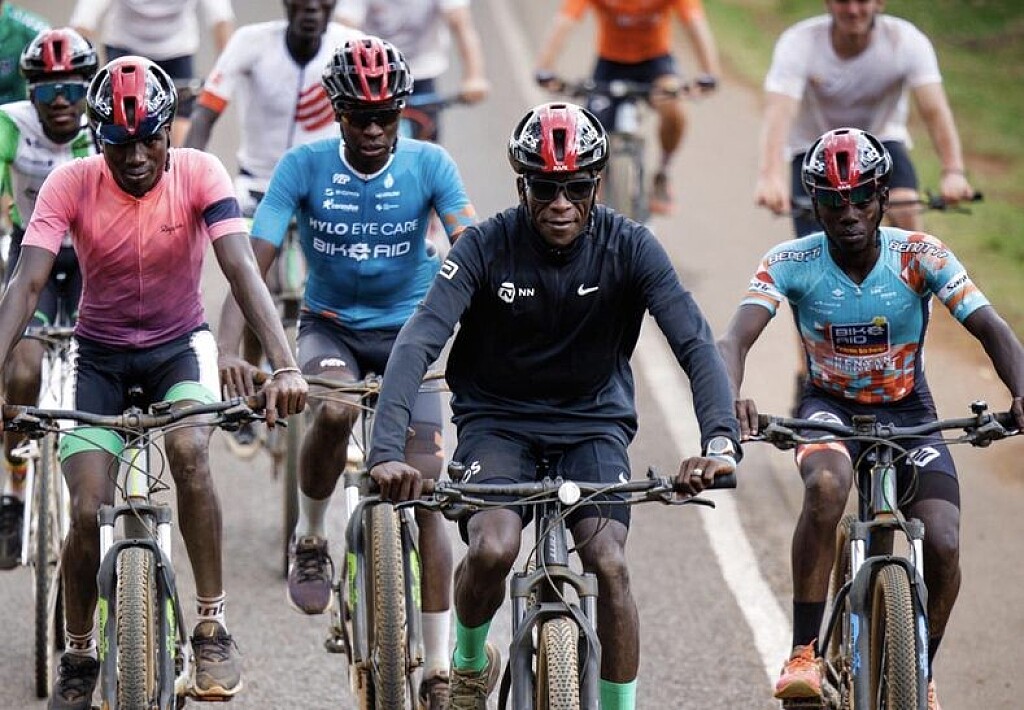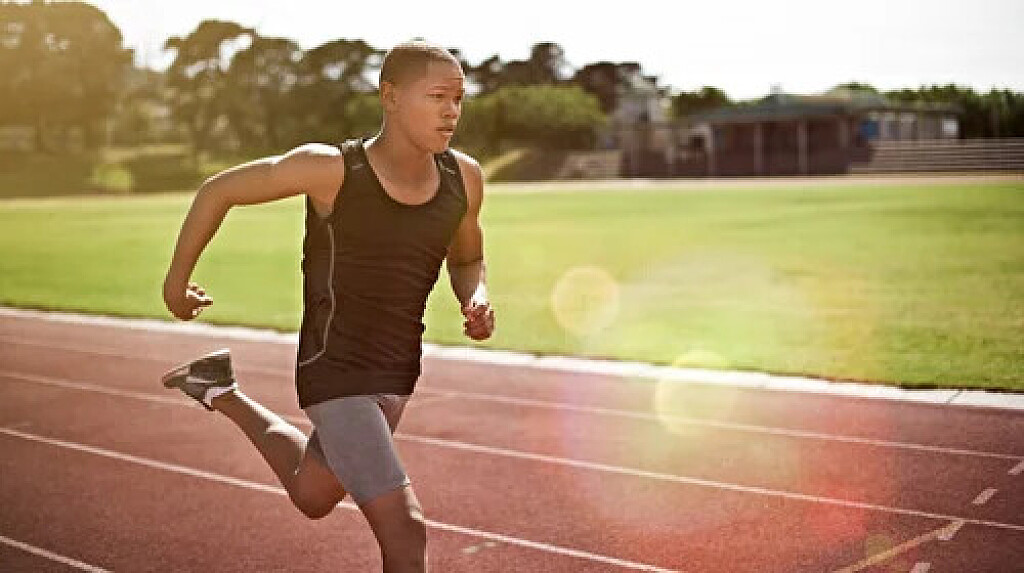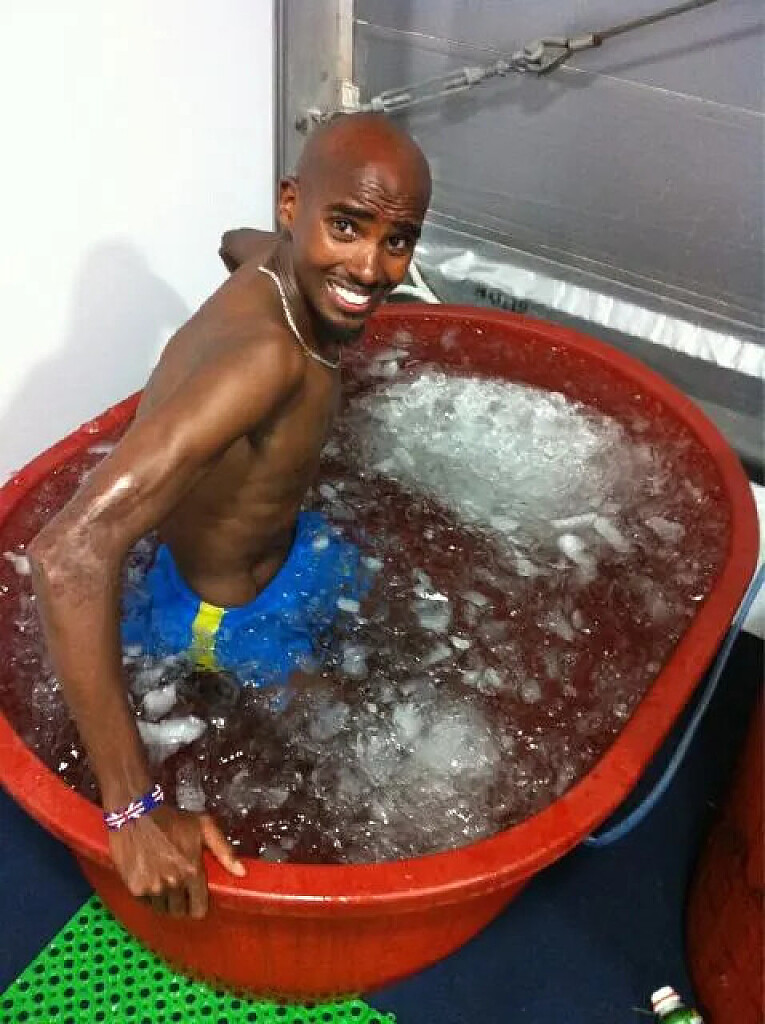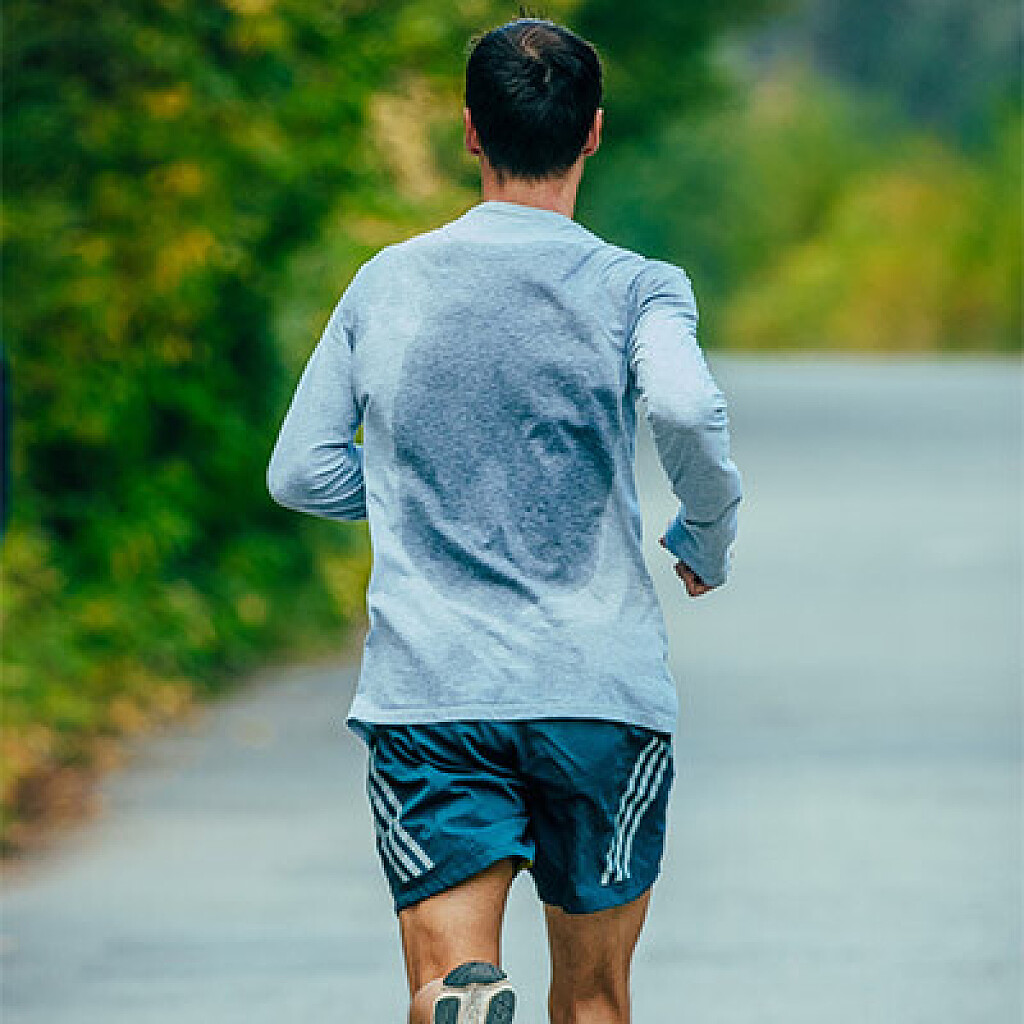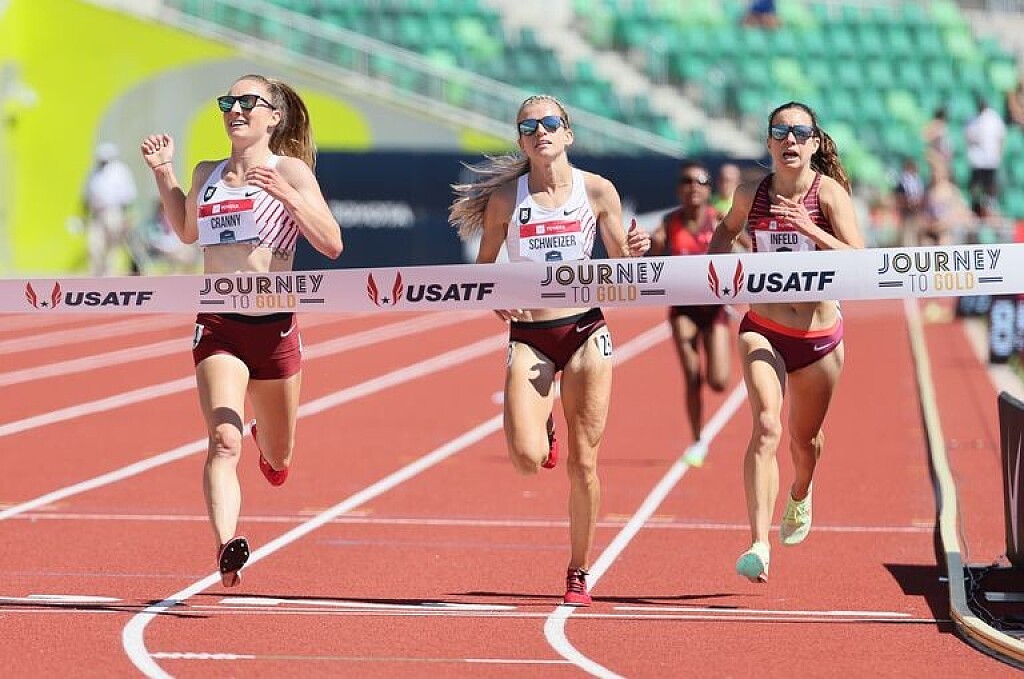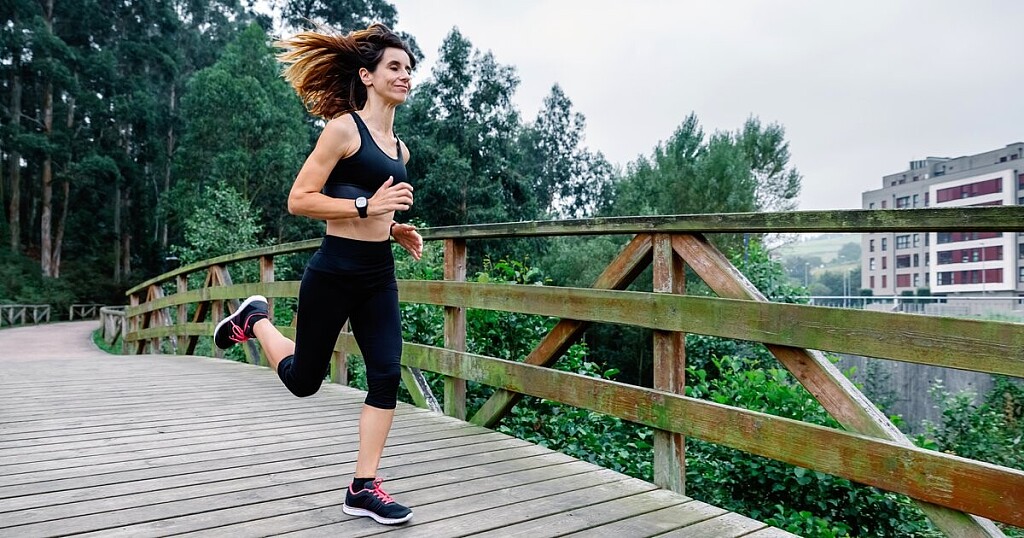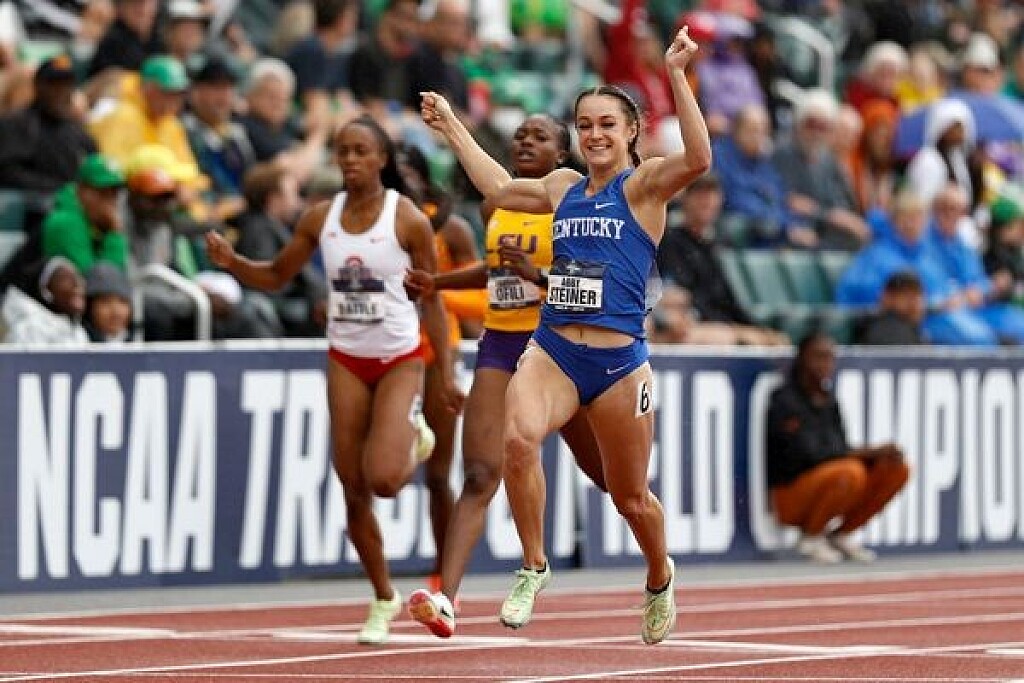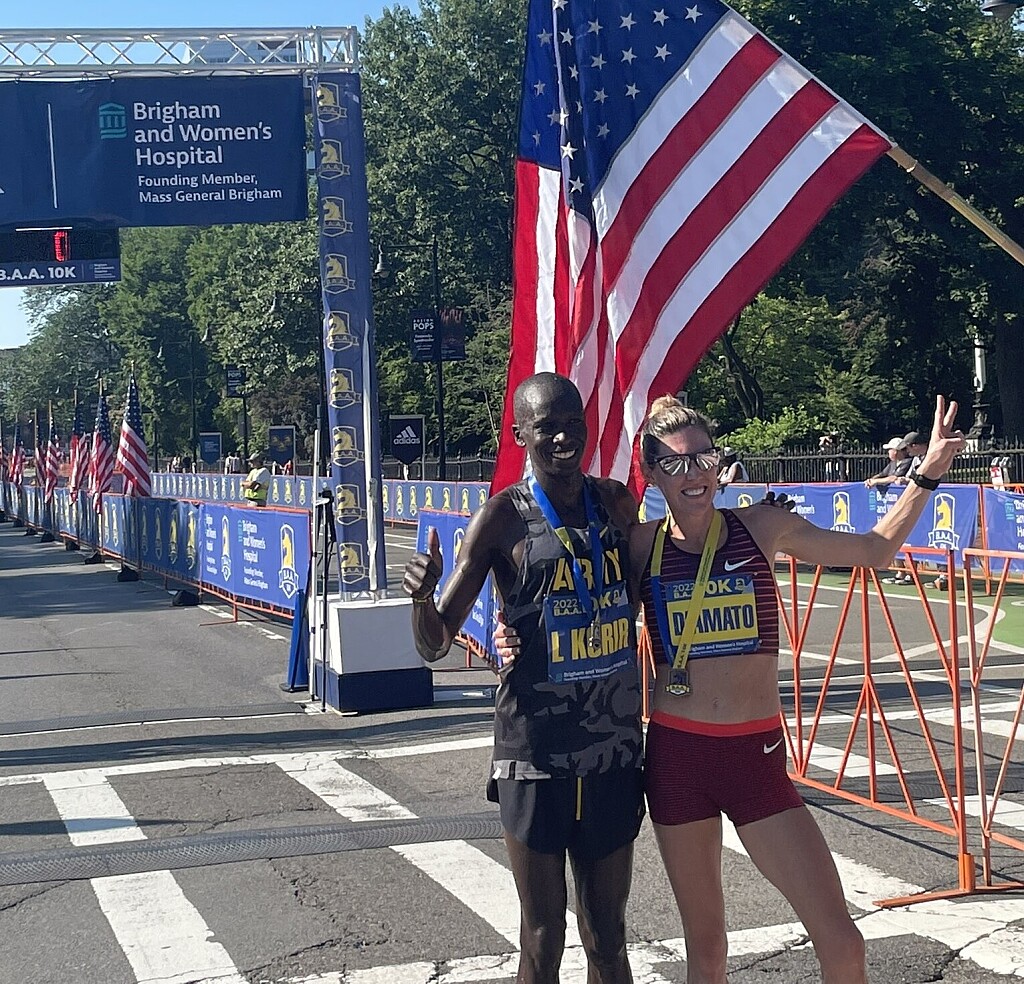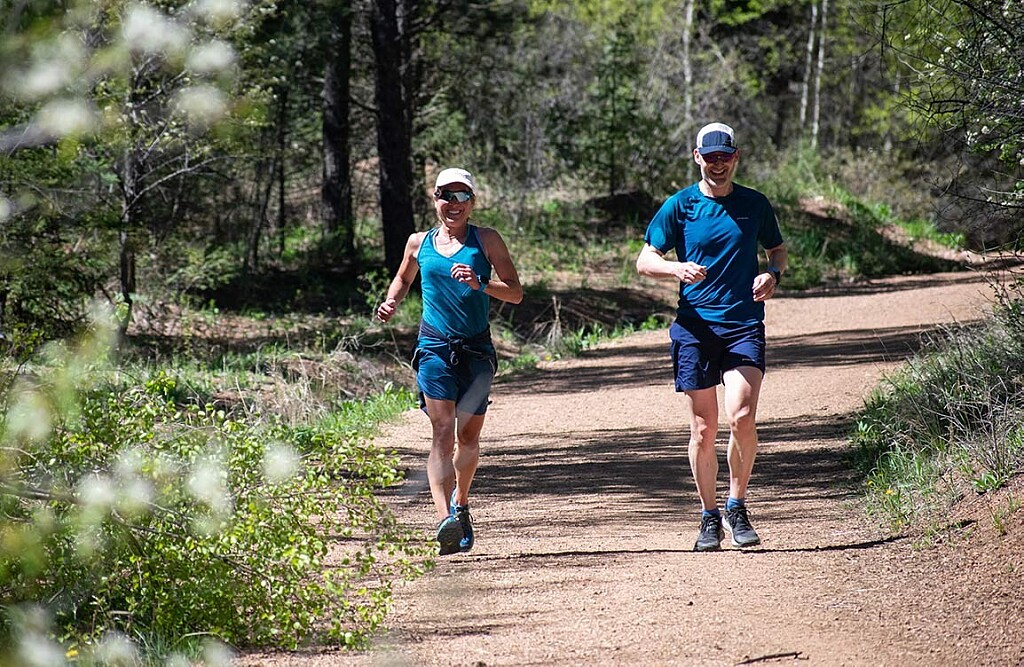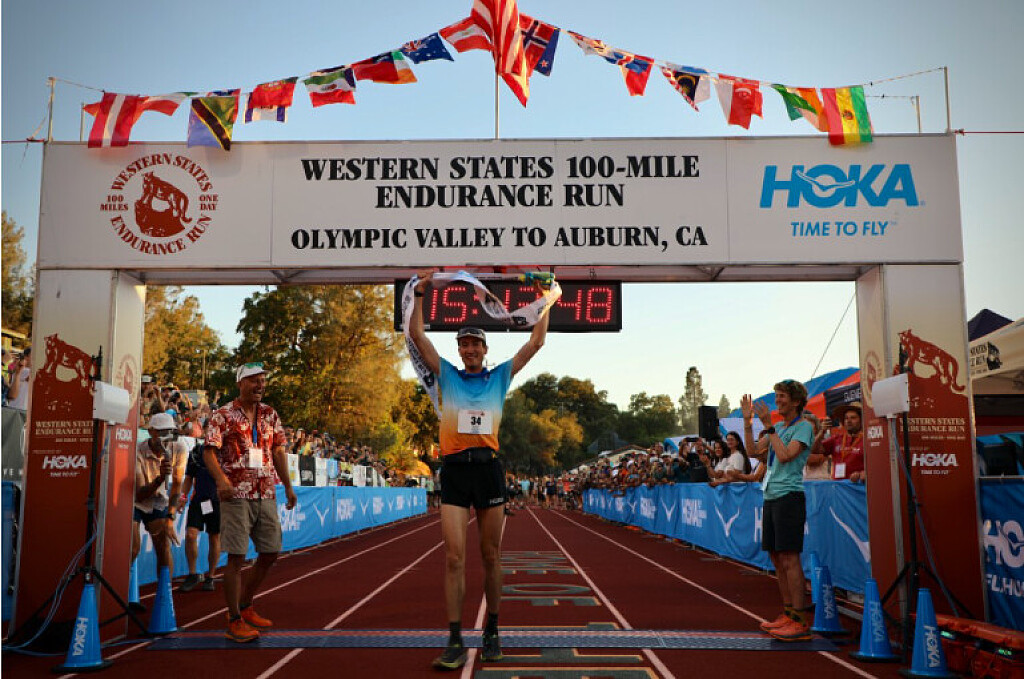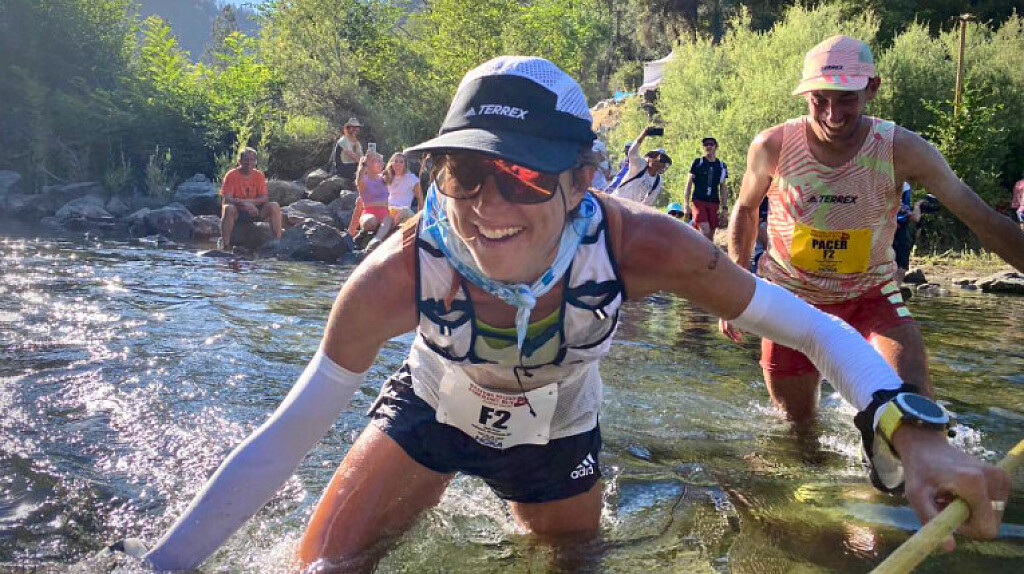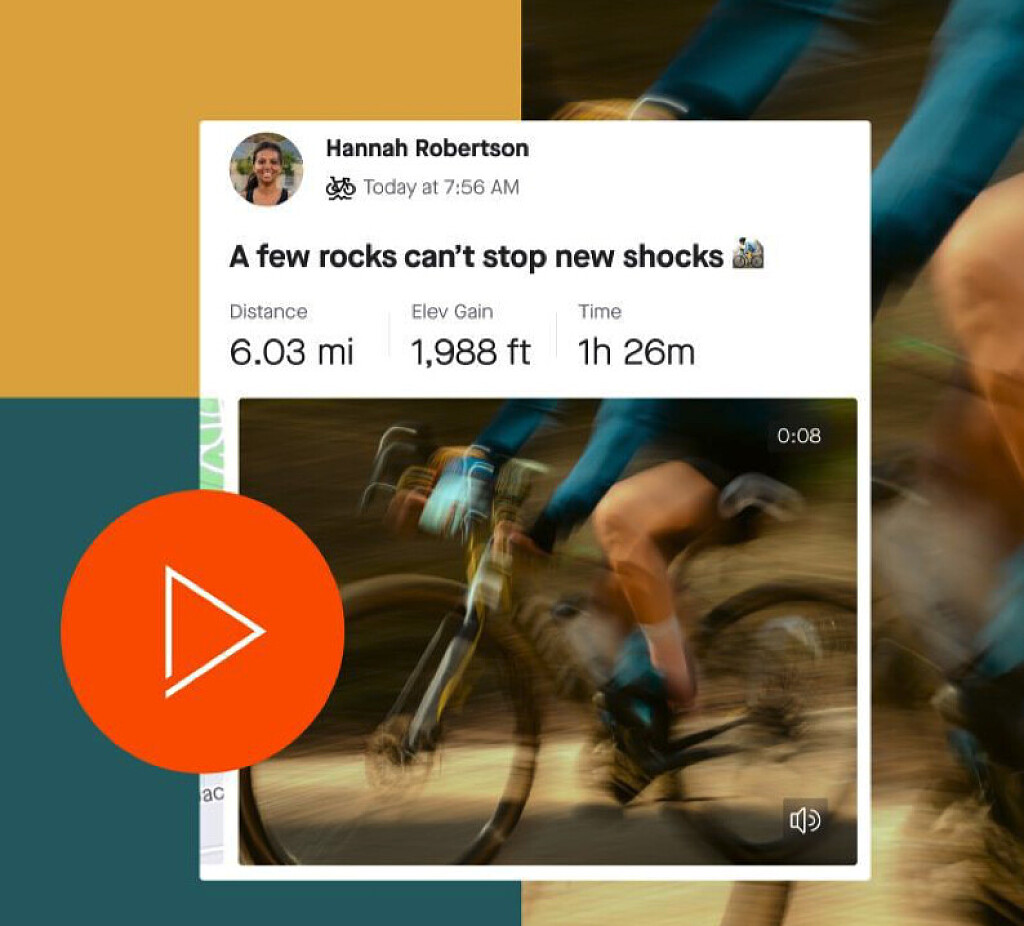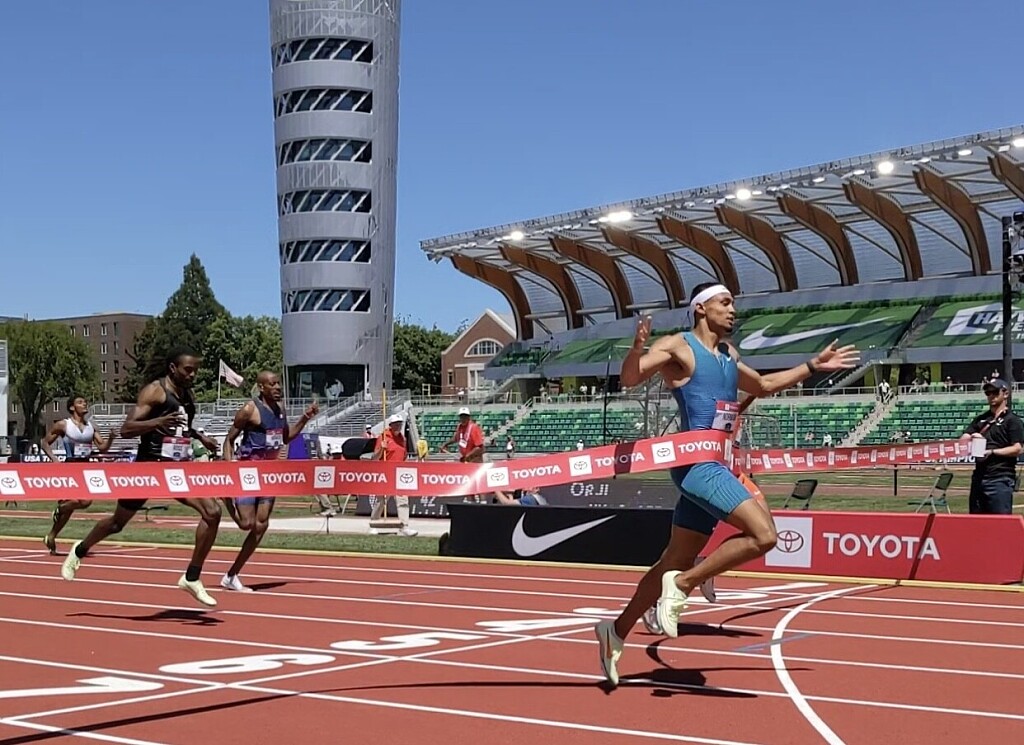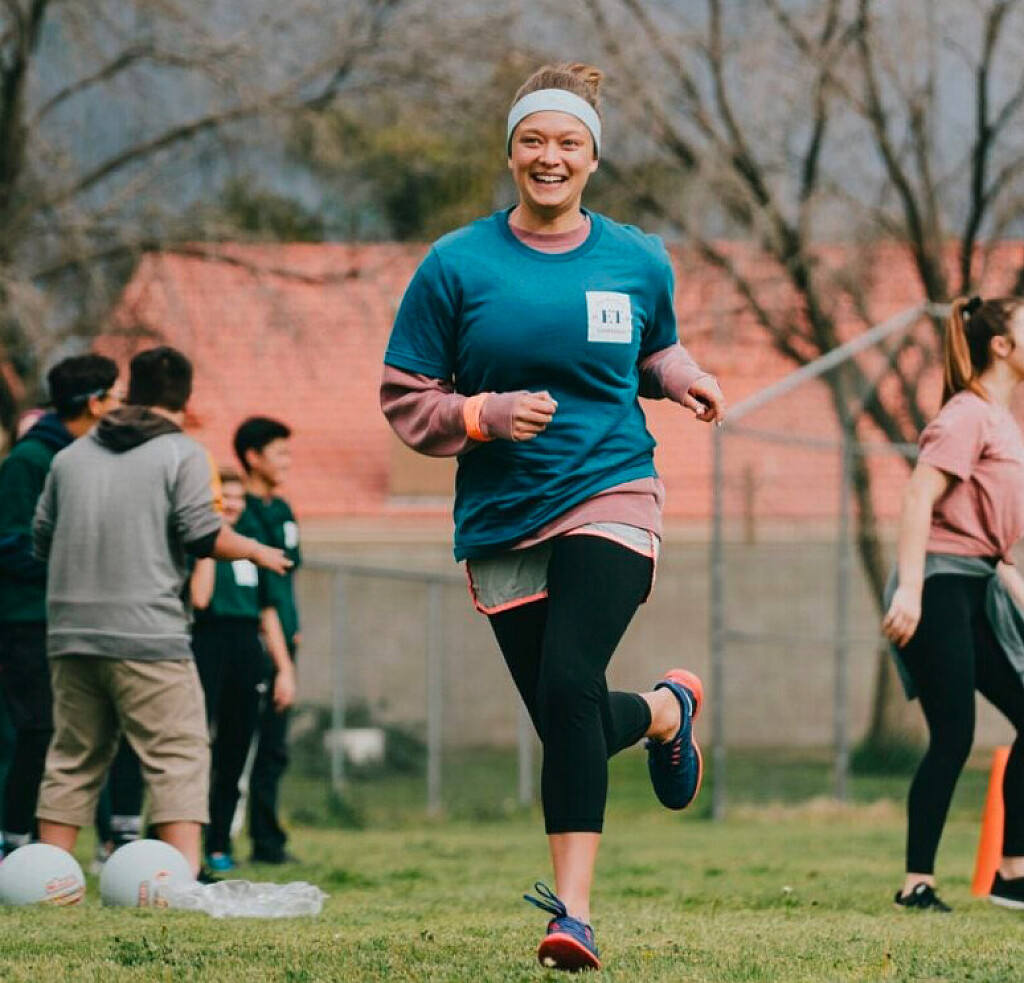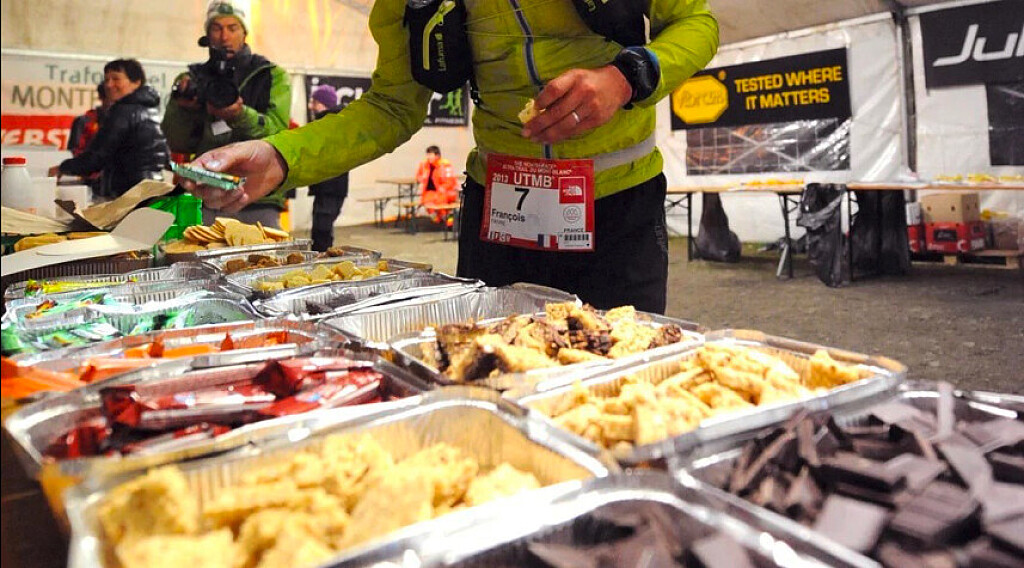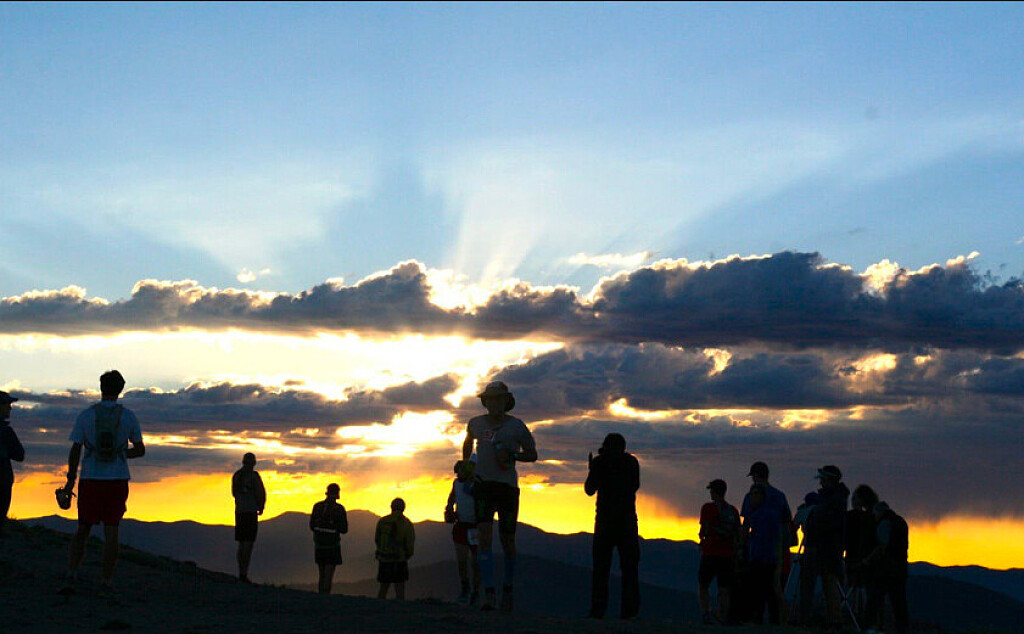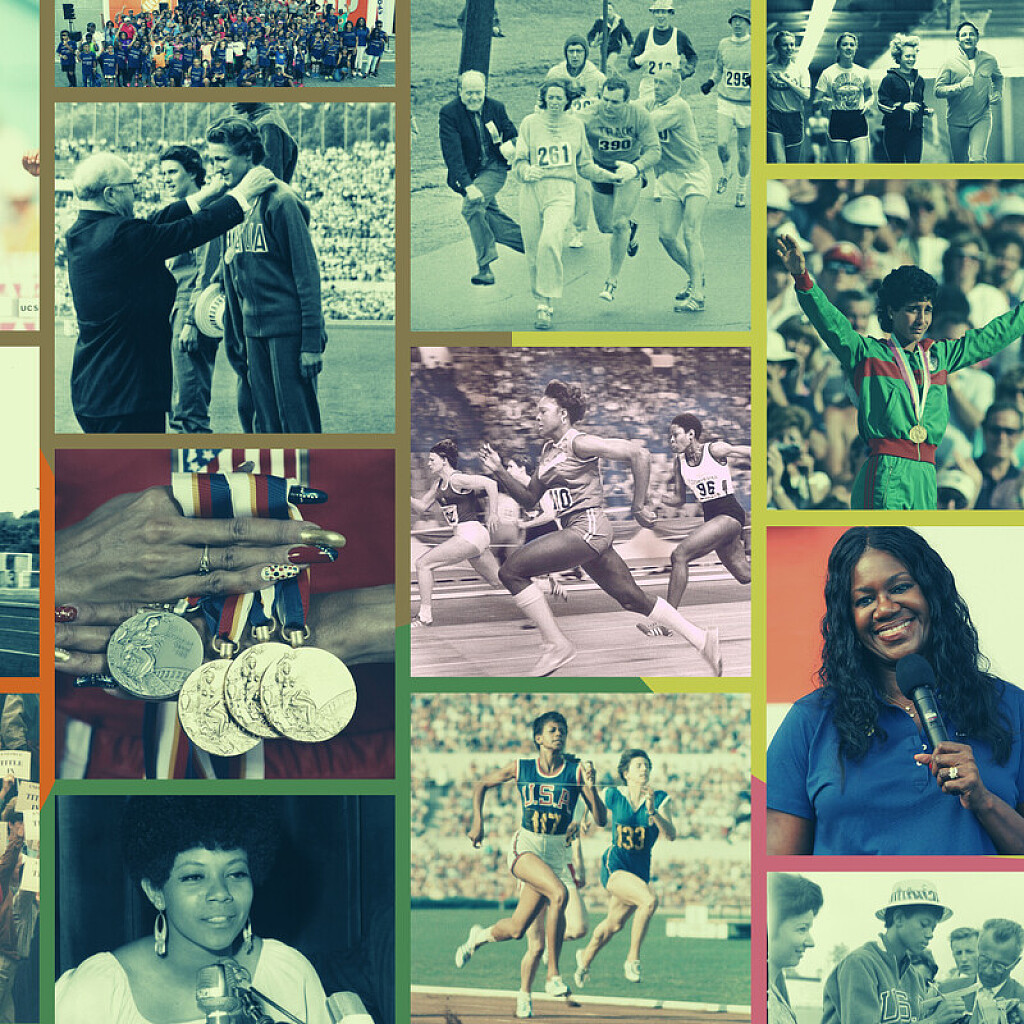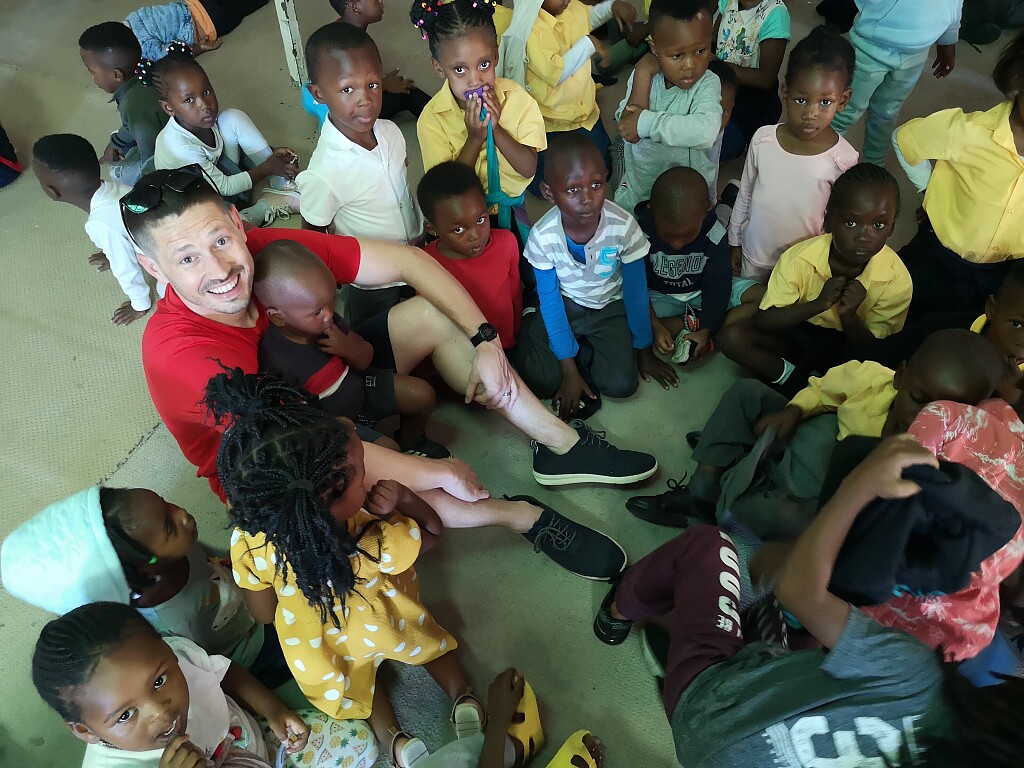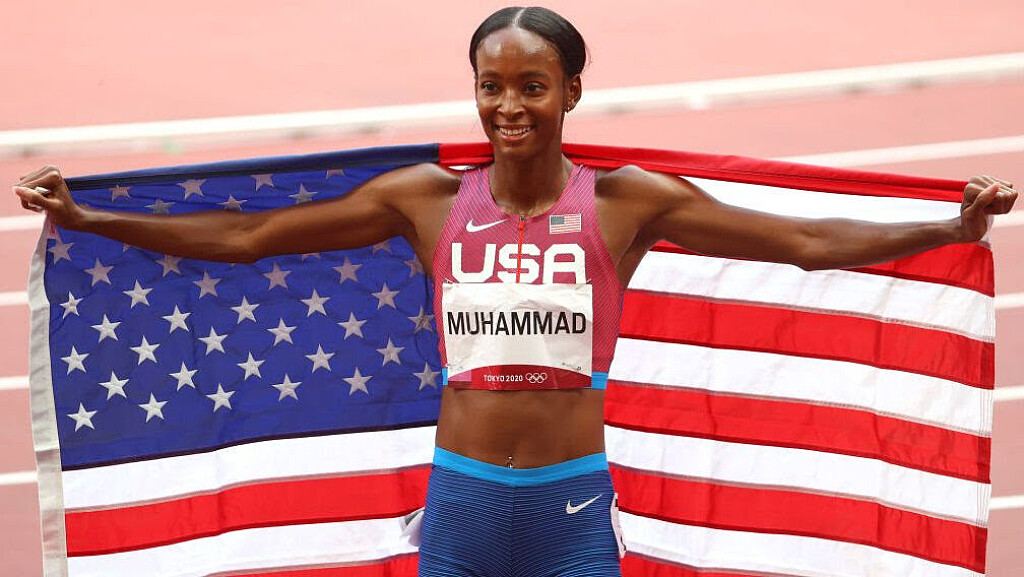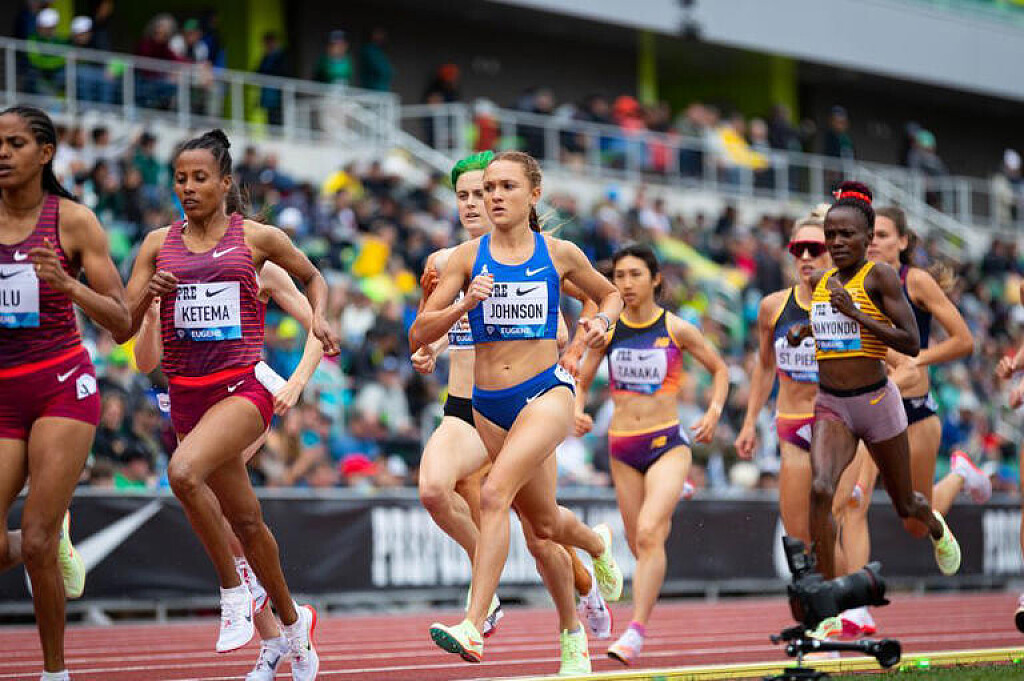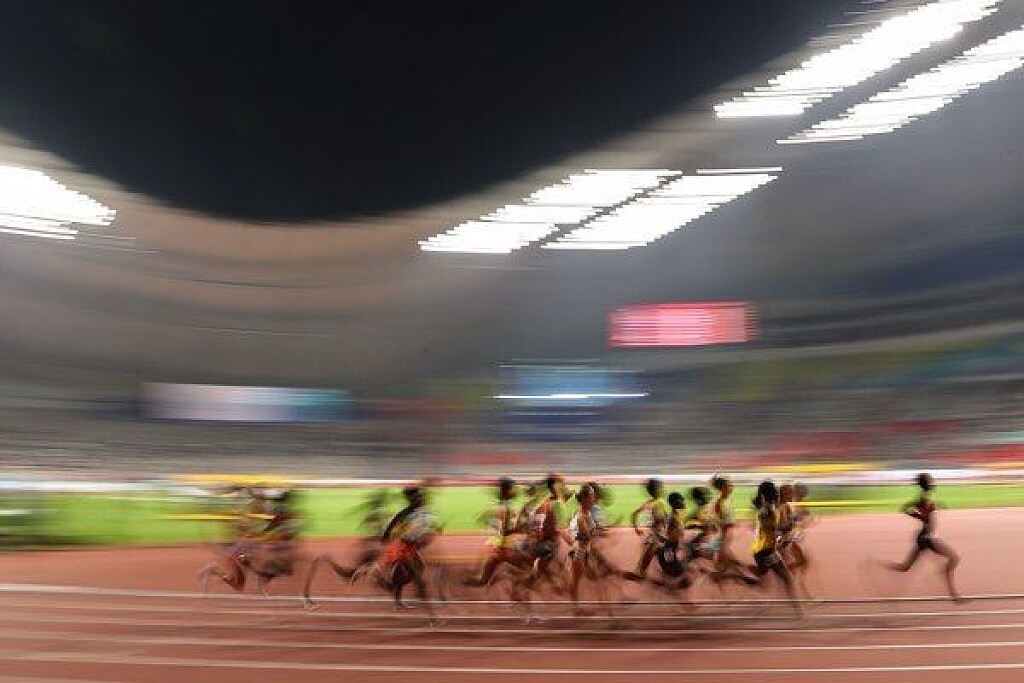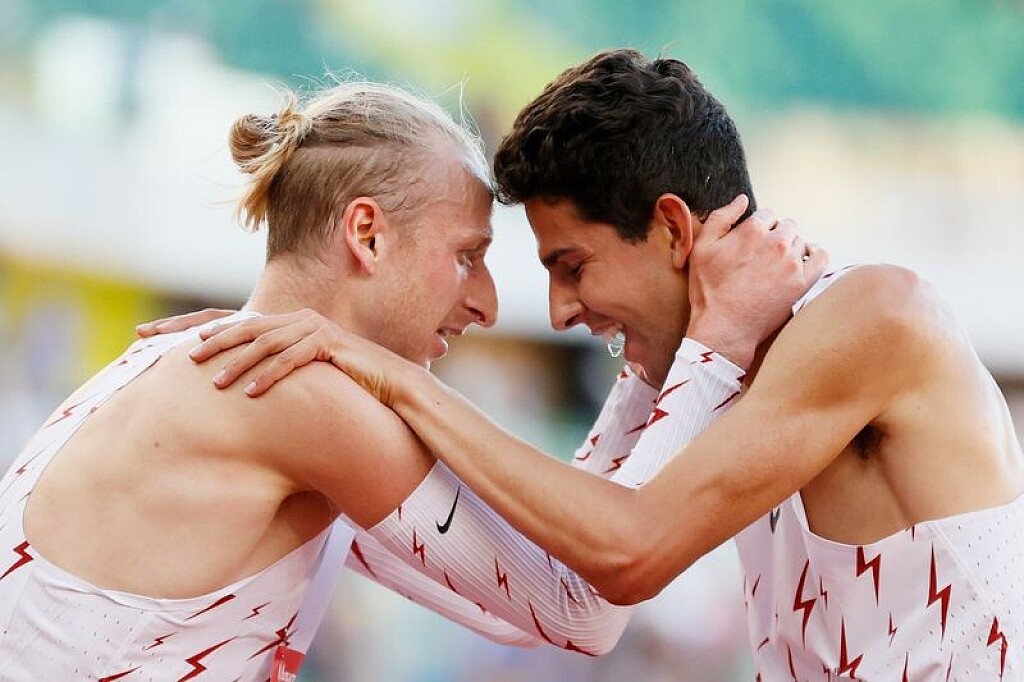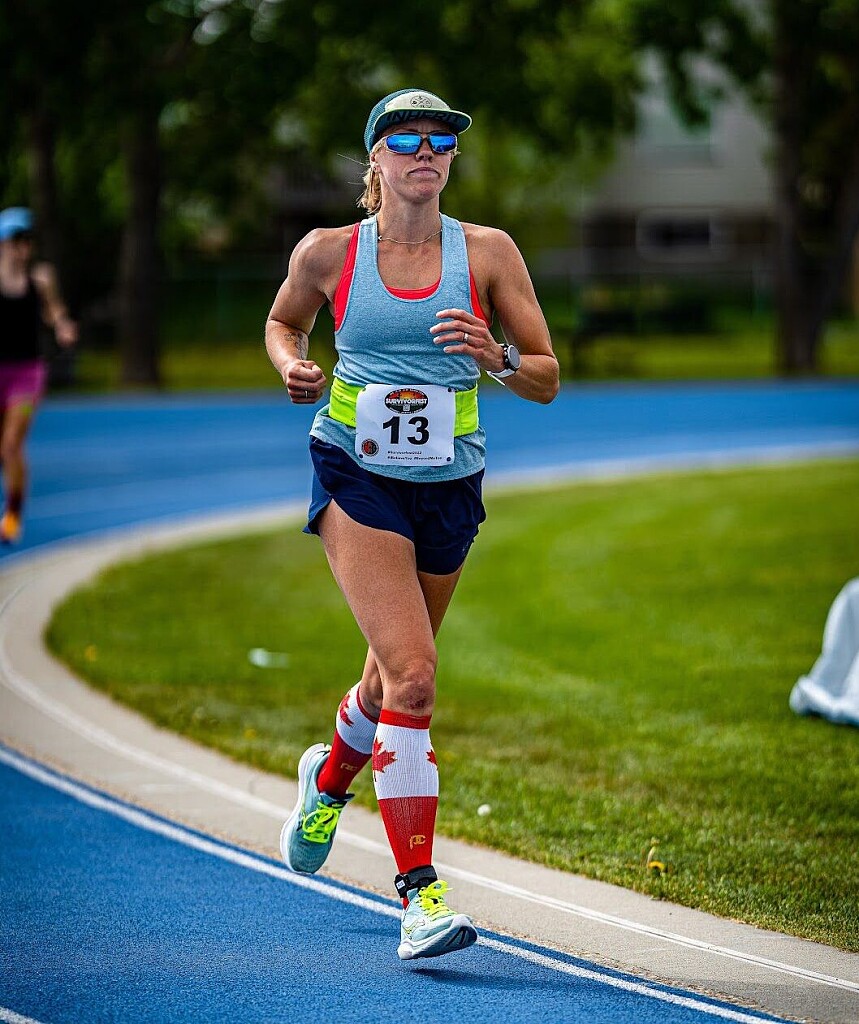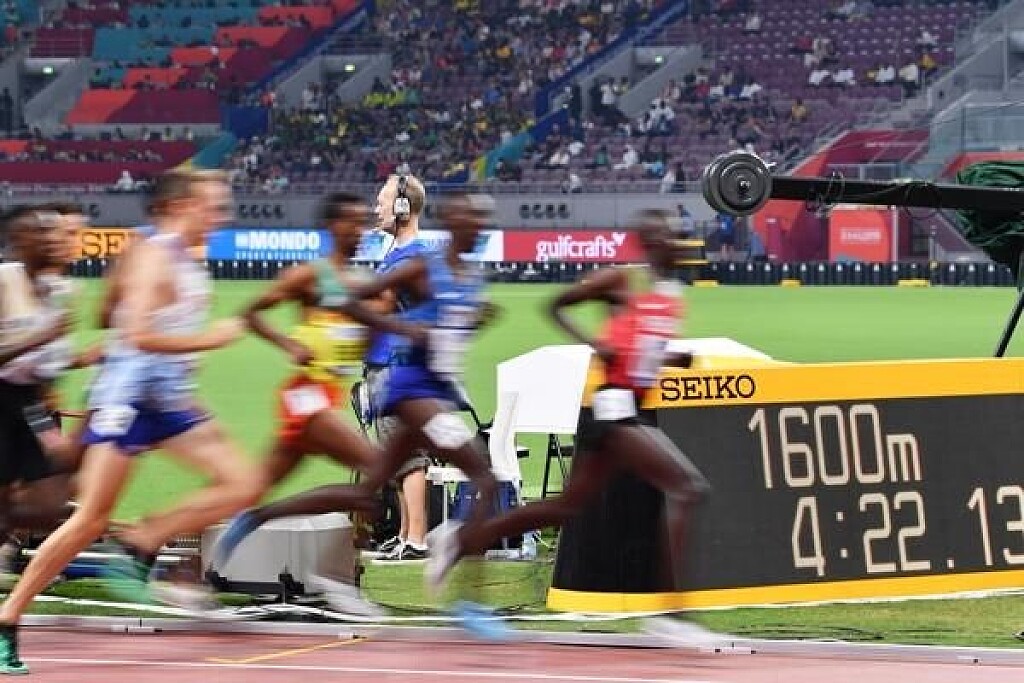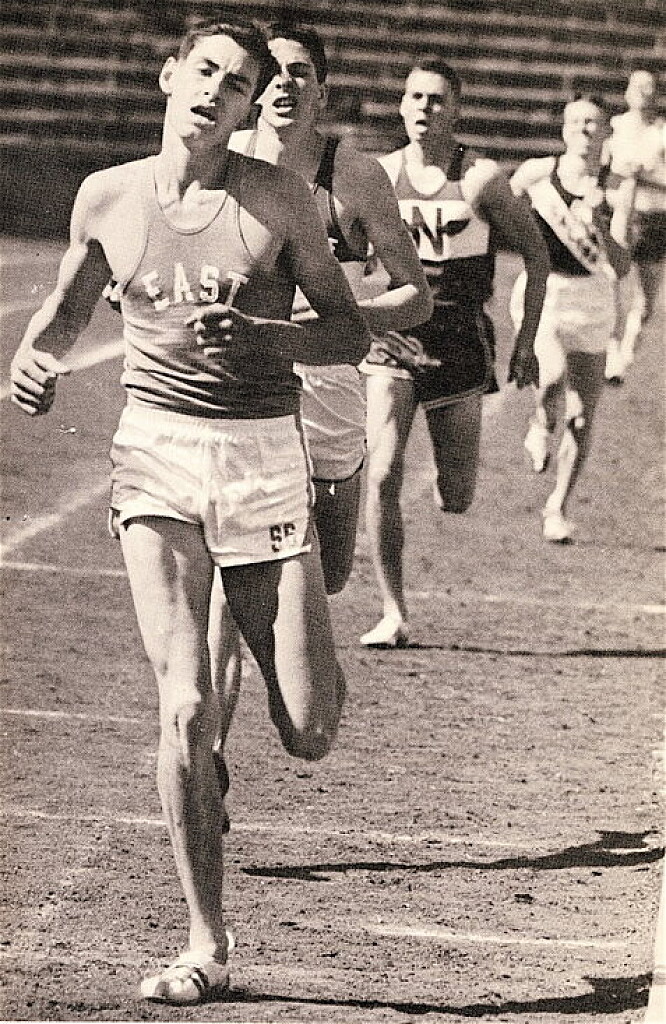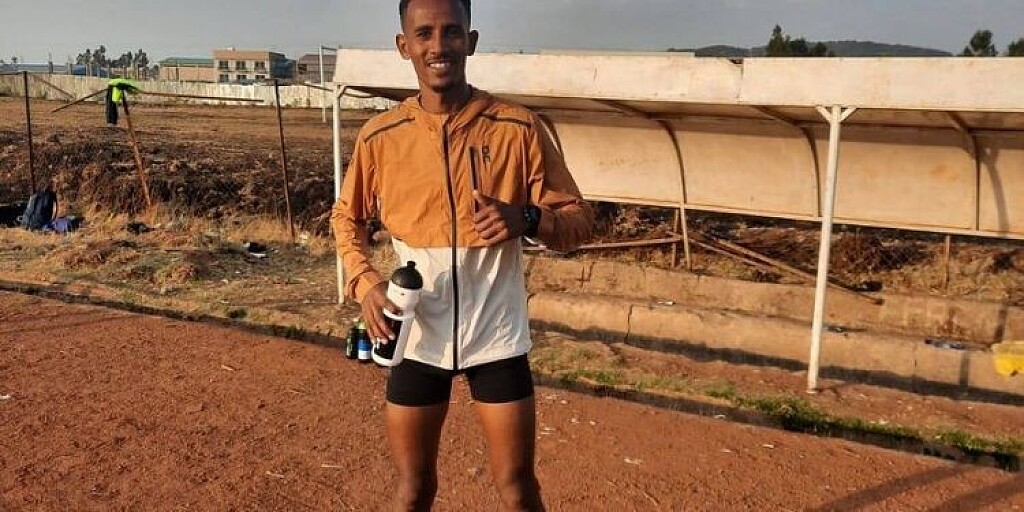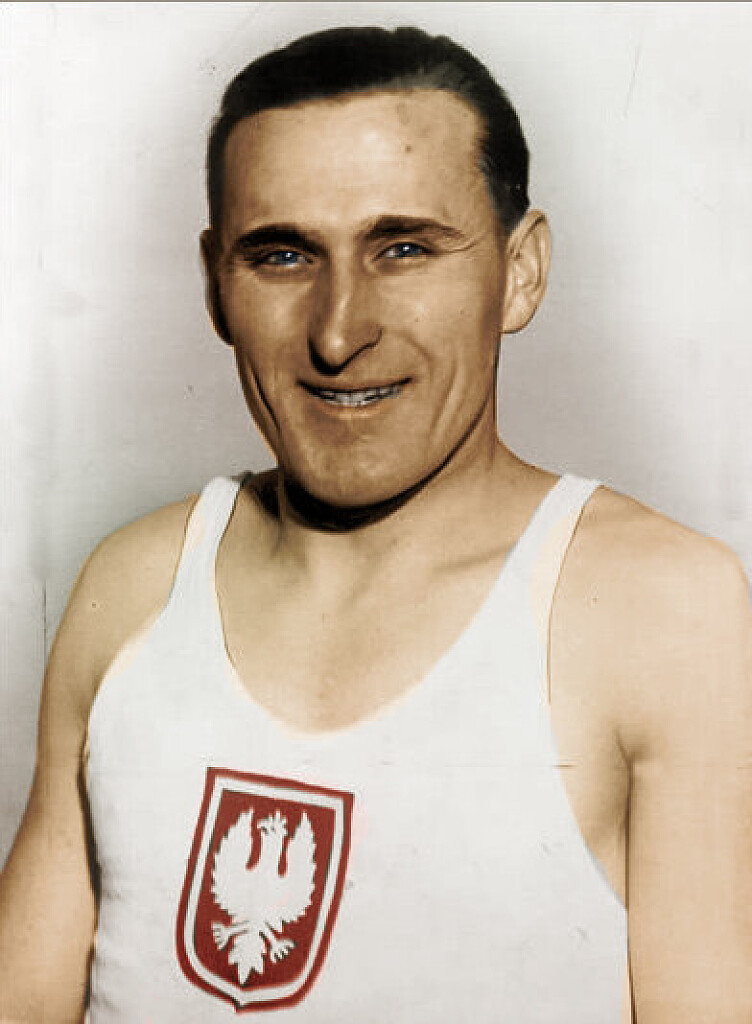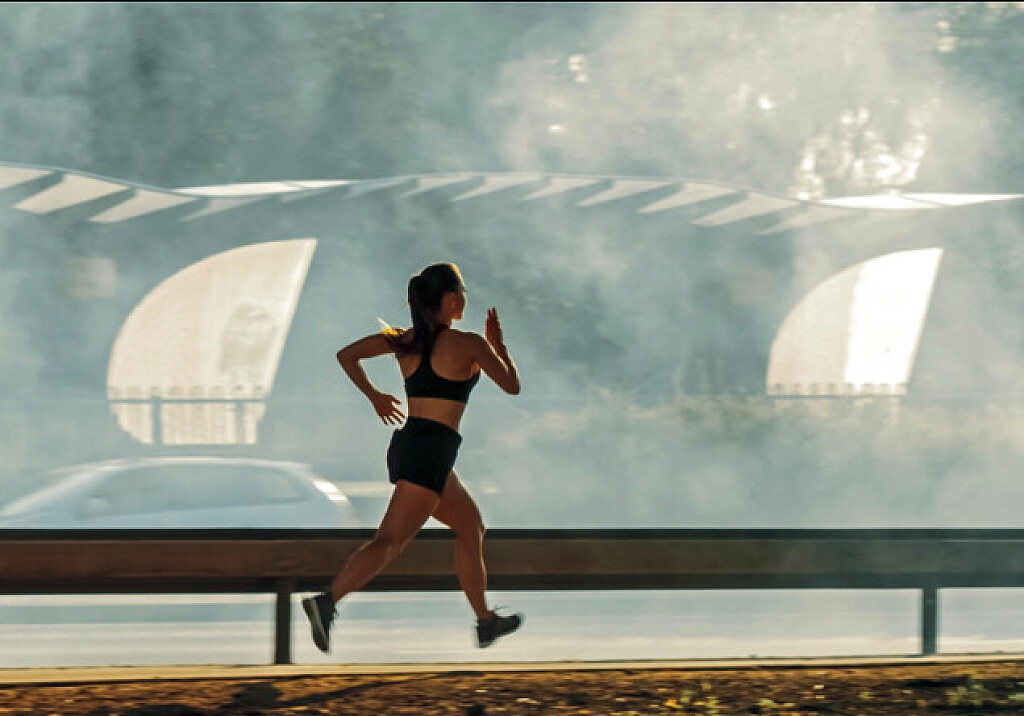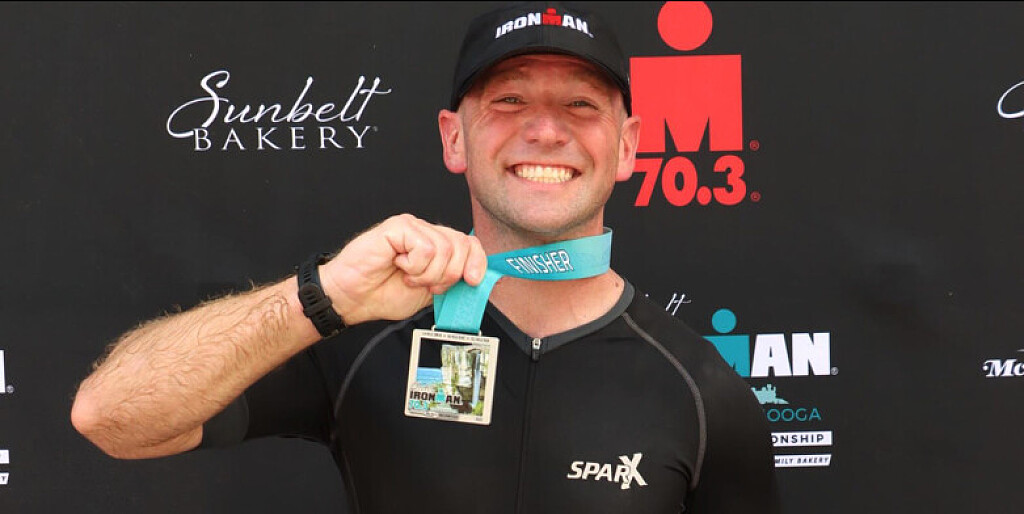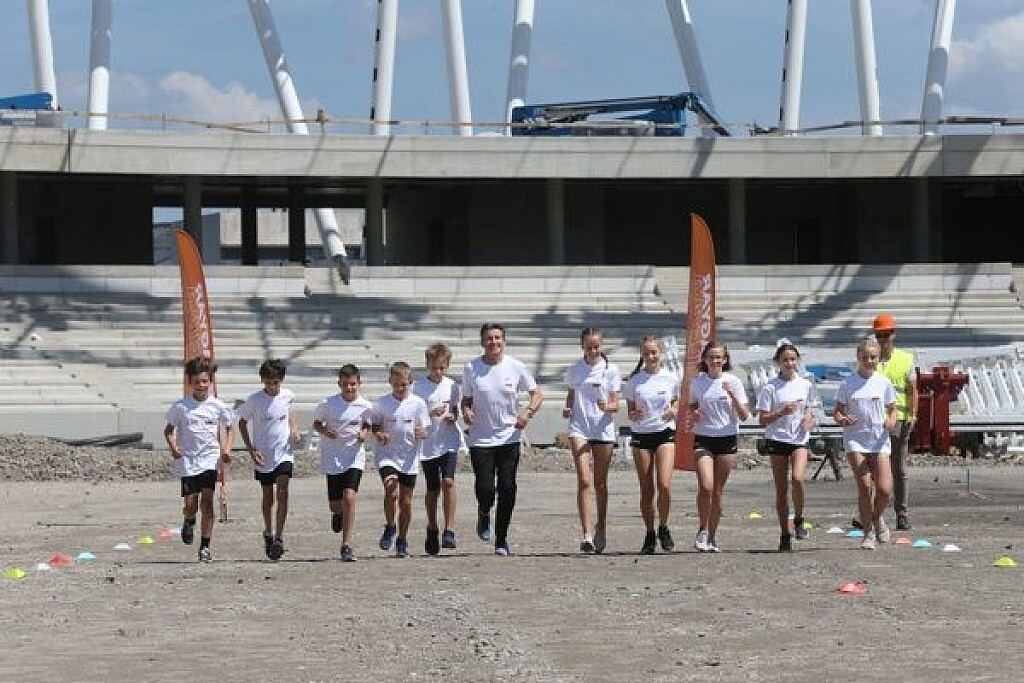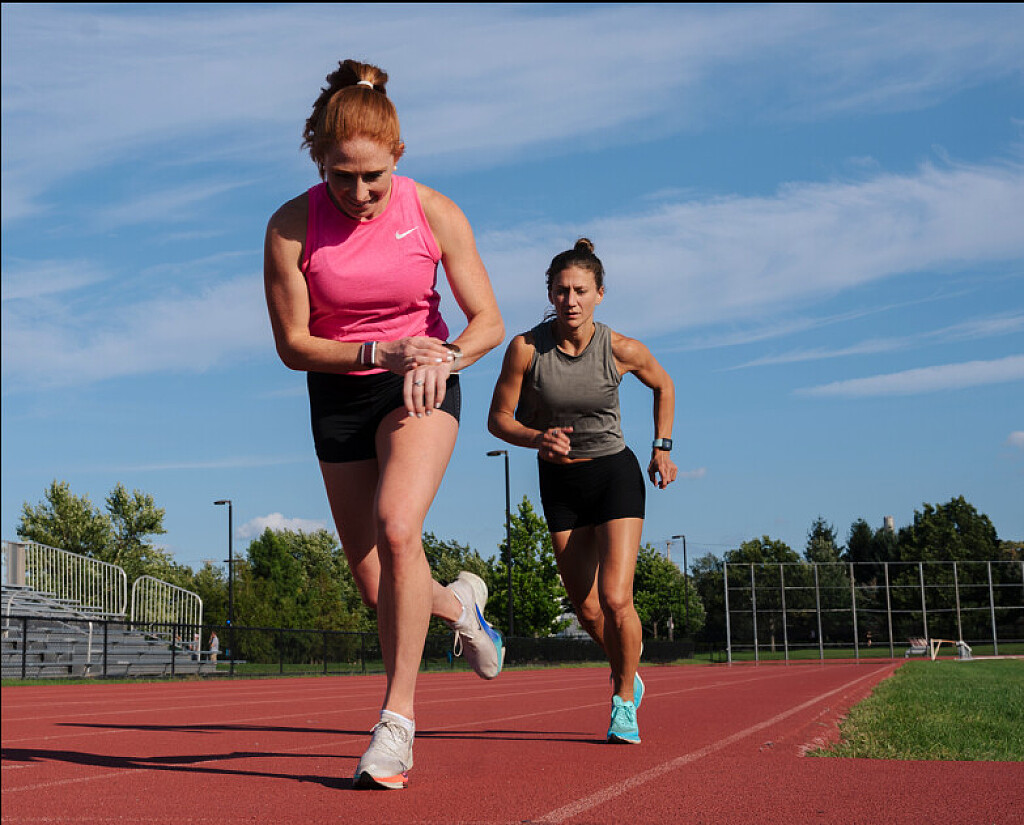Running News Daily
Running News Daily is edited by Bob Anderson. Send your news items to bob@mybestruns.com Advertising opportunities available. Train the Kenyan Way at KATA Kenya and Portugal owned and operated by Bob Anderson. Be sure to catch our movie A Long Run the movie KATA Running Camps and KATA Potato Farms - 31 now open in Kenya! https://kata.ke/
Index to Daily Posts · Sign Up For Updates · Run The World Feed
George Hirsch is passing the baton to Nnenna Lynch after 18 years at the NYRR
George Hirsch sent this message to My Best Runs today and others. "I am writing this to tell you that I will be stepping down as Chairman of New York Road Runners on June 30, 2023 after serving eighteen years in that role," wrote George.
"As one who has been involved with this extraordinary organization for more than five decades, it has been an honor and the privilege of a lifetime to have worked with such a diverse and talented team of people. The memories and adventures are too numerous to recount and we can save them for another day."
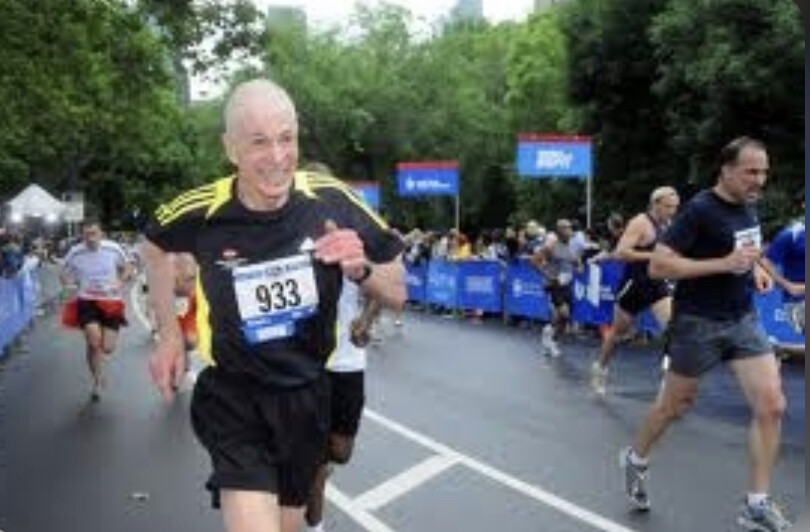
"However now is the time to look ahead and I’m thrilled that Nnenna Lynch (photo) will succeed me as Chairperson. She is truly the ideal person for the role: an elite runner who won several NCAA Championships at Villanova, she has an extensive background in business and community engagement as well as working for the City of New York during the Bloomberg administration."
"Oh, and did I say that she was a Rhodes Scholar among her many achievements? During this next year, Nnenna and I will be working closely to assure a smooth and positive transition for our beloved NYRR. And then I will become Chairman Emeritus, cheering on my passionate colleagues as they continue to find new ways to help and inspire people–all people–through running," onward George.

Nnenna Lynch was born July 3, 1971, in New York City, New York) and is a retired middle distance and long distance runner from the United States.
She won the gold medal at the 1997 Summer Universiade in Catania, Italy in the women's 5,000 metres event.
In January 1998, she placed first at the US world cross-country trials in Orlando, qualifying her to represent the country at the 1998 IAAF World Cross Country Championships at Marrakech, where the US women's team finished 5th.
She currently lives in New York with her husband Jonathon Kahn and two young children.
"The New York Road Runners has done as much as any other organization to promote running at all levels around the world. Their New York City Marathon is considered one of the best marathons in the world. Under the leadership of George Hirsch, the NYRR grew to what it is today," says Bob Anderson (MBR publisher and RW founder) who has known George for over 50 years.
"Good luck Nnenna Lynch in this transition and we look forward to seeing the continued success of the NYRR under your leadership," stated Bob Anderson.
(06/29/2022) ⚡AMPQualification period ends for World Athletics Championships Oregon22
Some 1900 athletes have qualified to compete at the World Athletics Championships Oregon22 from July 15-24.
The qualification period for individual track and field disciplines closed on June 26, following a busy weekend of national championships action, while the invitation process for relays ended on June 28.

About 63 percent of athletes have qualified by entry standard, 33 percent by world ranking position and four percent by designated finishes in qualifying competitions (such as area championships). 75 countries are expected to enter athletes through universality places.
The Road to Oregon tool on the World Athletics website shows which athletes – subject to being officially selected by their member federation – have qualified to compete at the World Championships, either by entry standard or world ranking position within a discipline’s quota.
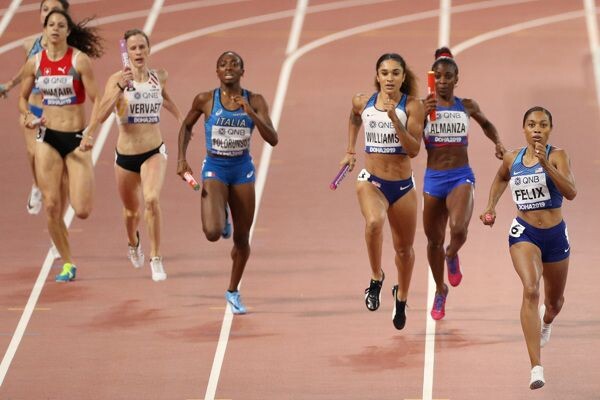
The tool identifies the first three qualifiers per nation (in bold) but any athlete who has qualified can be selected within the limit of three per nation. As this is a qualification monitoring tool, not an entry monitoring tool, it won't highlight which athletes have been officially selected by their member federation, but team announcements of many of the leading nations will be published on the World Athletics website in the weeks leading up to the championships.
Member federations have until the entry deadline of July 4 to submit their final selections.
World Athletics president Sebastian Coe said: “The end of the qualifying period is an important milestone on the way to our World Championships and the final qualified list is a good indicator of the unparalleled strength of our sport around the world. I’m delighted to see that almost 200 countries have qualified athletes for the pinnacle event in our sport. As we begin the final countdown to the start of the World Championships in just 16 days, I wish every qualified athlete the best of fortune and I hope to see you all at your best in Oregon.”
Wild card entries are offered to all individual winners from the World Athletics Championships Doha 2019, along with the winners of the 2021 Wanda Diamond League and Combined Events Challenge. The acceptance of those wild card entries, however, rests with member federations. Only one wildcard can be used by a member federation in each discipline.
Several places in relay disciplines, meanwhile, were claimed at the World Athletics Relays Silesia 21.
(06/29/2022) ⚡AMPby World Athletics
World Athletics Championships Budapest23
Budapest is a true capital of sports, which is one of the reasons why the World Athletics Championships Budapest 2023 is in the right place here. Here are some of the most important world athletics events and venues where we have witnessed moments of sporting history. Throughout the 125-year history of Hungarian athletics, the country and Budapest have hosted numerous...
more...Why a DNF could be your best learning tool, here's how to use a bad race to your advantage
So you dropped out of a race–what can you learn from it? You may be surprised what you are able to take away from a less-than-ideal experience.
If you enter enough races, you’re bound to experience one that doesn’t go as planned. A DNF (did not finish) result can initially be heartbreaking, especially if you’ve been working up to your race for a long time. You can do everything possible to prepare for an event and still have a race day that doesn’t go well, particularly in longer distances like marathons or ultras. Stomach problems, hot weather, shoe issues—reasons for a DNF are wide-ranging. If you need a day to process your disappointment after a bad race, go for it: but no longer than that.
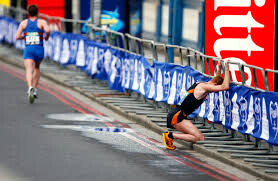
Revisiting your experience and looking at what you can learn from it can be a game-changer. You will head into your next race with greater insight, new ways to tackle problems and the mental toughness from experience that you simply wouldn’t have gained without struggle.
Consider where the problem started
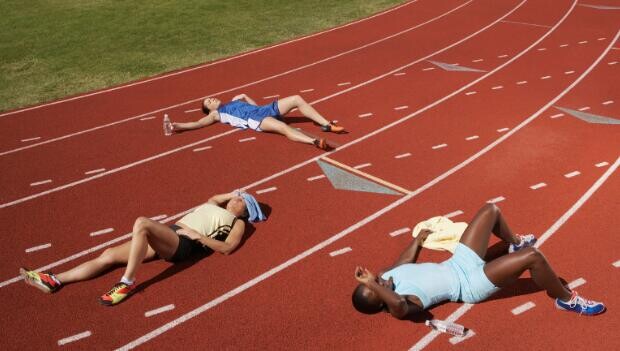
Did you veer off your regular pre-race meal routine when out of town? Maybe you need to plan ahead so that you can have food you’re comfortable with available. Perhaps you went into the race without enough rest, or chose the wrong shoes for a particular course. By revisiting your race and looking for clues to where problems were initiated, you’ll often see that mistakes were made before you even laced up your shoes. Finding that critical first error can be helpful as you figure out how to spin your experience from a negative to a positive.
Pinpoint your weaknesses
It is easy to avoid reflecting on problem areas. For me, after running a race and becoming quite ill afterward with heat exhaustion, it was tempting to chalk it up to the weather, and not alter any of my training habits. Instead, I decided to take a good look at what I had failed to do during the race to adapt to warmer temperatures and increased hydration needs. As in many things, awareness is key. Make a list, and don’t be afraid to do the work: being honest with yourself about areas to improve is key to becoming a better runner. If you determine that your taper was inadequate, do some research and ask others for tips and suggestions.
Figure out what you need to change, and get to work
Now that you have an idea of things to work on, put them into practise now. If your problems were with nutrition, start troubleshooting nutritional strategies on long runs, or try out new food prior to training runs. Far better to have something go wrong during a training run than in a much-anticipated race. Digestion has always been one of my own challenges in longer races, so now I work on this on almost every run. Just being conscious of what I was eating before and after a run and noticing how it affected my performance was hugely beneficial to my race-day performance. The knowledge gains also gave me a pre-race boost in confidence.
A coach once told me that the only time a DNF was a bad thing was when the athlete didn’t make the experience an opportunity for growth. Sure, a poorly executed race day feels unpleasant at the time, but viewing it as a tool to enhance your future performance can turn it into a stepping-stone on the way to your next PB.
(06/29/2022) ⚡AMP
by Keeley Milne
Eliud Kipchoge launches cycling academy
The GOAT of marathoning has taken on a new project: a cycling academy. The two-time Olympic marathon champion and world-record holder Eliud Kipchoge announced on Instagram last week that, together with his partners INEOS and Global Sports Communication, the NN Running training center will now also host a cycling school. “I’m proud that we are expanding our Kaptagat-based training camp from a purely athletics focused training camp toward a wider kind of sports academy.
The INEOS Eliud Kipchoge Cycling Academy is a very natural fit, with great potential to enable our young talented cyclists to make the next steps toward the top level of cycling,” Kipchoge shared.
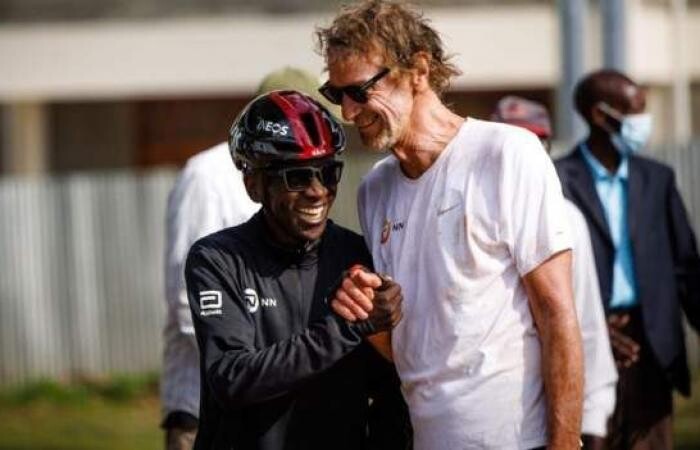
The cycling academy will employ some of the staff already on Kipchoge’s team and will be run by Kipchoge’s long-time partner Valentijn Truow, as reported by Cycling News.
Trouw, a Dutch citizen, has over three decades of experience working with long-distance runners in Kenya and a background in athlete management. Trouw said that he was excited to build what is a fairly undeveloped sport in Kenya, “in good harmony and collaboration with the Kenyan Cycling Federation, bringing together our collective knowledge and insights from running and cycling for the benefit of the sport.” Kenya had no full-time cycling professionals in 2022.
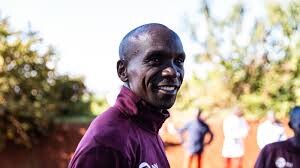
“We work with the great potential of east African long-distance runners for over 30 years, and I believe the exceptional local endurance talent combined with the great training environment at Kaptagat will be perfect for developing quality cyclists,” Truow added. “Working together with Sir Dave Brailsford, the INEOS Grenadiers Cycling Team and tapping into the broader INEOS sporting family will bring us the world’s best practice in competitive cycling.”
The INEOS Grenadiers Cycling Team is world-renowned, and it will be interesting to watch Kipchoge’s cycling academy grow through this high-level partnership. “This is a significant and exciting development in world cycling–it has the power to drive lasting change by developing new riders from Africa,” said Grenadiers manager Dave Brailsford.
(06/29/2022) ⚡AMPby Running Magazine
French 400m Hurdler Wilfried Happio wins title after being assaulted during warm-up
French athlete Wilfried Happio was warming up for his 400m hurdles race at the French Elite Athletics Championships when he was brazenly attacked by an anonymous assailant. Twenty minutes later, the 23-year-old was crowned national champion.
Shortly before the race’s start time, an individual snuck past security at Helitas Stadium in Caen, France and made his way onto the track, according to RCM Sport. The attacker located Happio as he was loosening up, asking the hurdler if he really was Wilfried Happio before landing several blows to his face. The reasoning behind the barrage is still unknown.

Olivier Vallaeys, Happio’s coach, swiftly came to his athlete’s aid, wrangling the aggressor and preventing further damage. Police later arrived at the scene to arrest the individual.

Happio was visibly shaken up by the seemingly random attack, even coughing up blood shortly before his event was set to take place. However, he declared himself fit to compete in the race.
Donning a makeshift eye patch made out of his headband and a spare bandage, Happio finished first in the 400m hurdles event, clocking in at 48.57 seconds – a personal record. Moments after crossing the finish line, the Parisian let out a thunderous yell, seemingly releasing the mixed cluster of emotions he garnered over the last hour. Despite blood dripping from his nose, Happio assured media post-race he was fine after the attack.
(06/28/2022) ⚡AMPThe perfect track workouts for newer runners
If you’re new to running, the track may seem daunting. Even if you’ve been running on roads or trails for some time, running on a track can be intimidating. But the track can be a useful tool, whether you’re a new runners or a seasoned athlete, and whether you’re a sprinter or a distance runner. Here are a few simple workouts to try during your first track sessions. Once you gain some experience, add repetitions to your workouts to make them more challenging.
Hard/easy 400m intervals
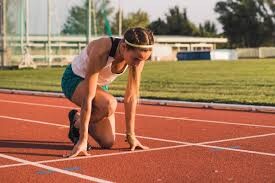
Warm up with a 10-15 minute easy run
Run one lap (400m) at a hard, but controlled effort, around 3K pace–you’ll be moving quickly enough that talking would be uncomfortable, but you’re definitely not in a full-on sprint

Take 400m to recover, either by running or walking at an easy pace
Repeat 4-6 times
Cool down with a 10-minute easy run
Ladder workout
A ladder workout is an interval session that increases in distance with each “rung” and then decreases, as if you are climbing up and down a ladder. As you progress in fitness and confidence at the track, add more rungs to your ladder.
Warm up with a 10 minute easy run
Run 400m hard (3K pace), 400m easy
Run 800m hard, 400m easy
Run 1,200m hard, 400m easy
Run 800m hard, 400m easy
Run 400m hard, 400m easy
Cool down with a 10-minute easy run
100-meter sprint workout
For this workout, you’ll sprint on the straight parts of the track, and do an easy run or walk on the curves to recover.
Warm up with a 10-minute easy run
Run 100m sprint, 100m easy
Repeat 8 times, or 1,600m
Cool down with a 10-minute easy run
Make sure to take an easy or recovery day after a track workout, and to rehydrate.
(06/28/2022) ⚡AMPby Running Magazine
Dina Asher-Smith will launch the defence of her 200m title at world championships
Dina Asher-Smith set for 200m defence as part of GB’s World Championships squad.
The 26-year-old, Katarina Johnson-Thompson and Keely Hodgkinson headline the 64-strong team for the competition in Eugene, Oregon, in July.

Asher-Smith won gold in Doha three years ago, having collected 100m silver, before going on to also secure silver in the 4x100m relay, and will look to improve on that haul in the United States.
She is expected to run at the Stockholm Diamond League meet on Thursday in her final race before the World Championships, which were rescheduled from last year after the postponement of the Tokyo Olympics to 2021 due to the coronavirus pandemic.
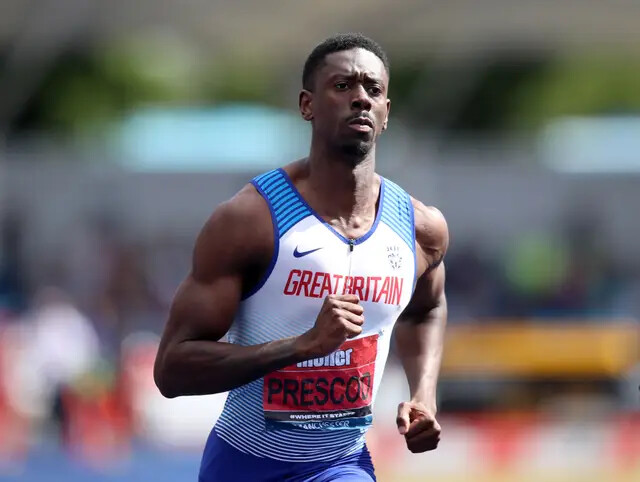
Outgoing Olympic head coach Christian Malcolm said: “We’ve seen a number of athletes step up on the global circuit so far this season, which has been really encouraging.
“We are confident that we’ve selected a team that optimises medal success and that have the ability to progress through rounds to reach finals.
“The World Championships is the start of a very busy summer of Championships and Games, so there are a number of opportunities for athletes to represent their country this summer.
“For those who have been selected for the team for Oregon, I wish the athletes and their coaches the best over the next week or so and to keep focus to achieve your goals.”
Daryll Neita, who reached last year’s Olympic 100m final and beat Asher-Smith in Manchester at the weekend to become British 100m champion, is also included for the 100m and 4x100m.
Despite winning the 200m at the British Championships on Sunday, however, 25-year-old Neita does not have the time for 200m qualification, with Asher-Smith joined by Beth Dobbin.
Johnson-Thompson missed the Manchester championships at the weekend but will look to defend the heptathlon world title she won in 2019.
The 29-year-old has been dogged by injury for 18 months since rupturing her Achilles in late 2020 and pulled out of the Olympics having suffered a calf problem in the heptathlon’s 200m.
Hodgkinson, who is expected to challenge American Athing Mu for 800m gold, is included along with Laura Muir, with the Scot aiming for her first World Championships outdoor medal after claiming 1500m silver in Tokyo last year.
Hodgkinson is joined in the 800m by Alex Bell and Jemma Reekie while Holly Bradshaw, who won Olympic bronze last year, will contest the pole vault.
Zharnel Hughes and Reece Prescod are Britain’s hopes in the men’s 100m with Nethaneel Mitchell-Blake and Adam Gemili in the 200m.
Prescod ran 9.93 seconds in Ostrava last month to leave him 11th fastest in the world this year but he remains well behind world lead Fred Kerley, who posted 9.76 seconds at the US trials at the weekend.
All four are in the men’s 4x100m relay squad, with Hughes and Mitchell-Blake aiming to ease their heartbreak having been stripped of their Olympic relay silver after CJ Ujah’s positive drugs test.
They are joined by Harry Aikines-Aryeetey, new British 100m champion Jeremiah Azu and Jona Efoloko.
Asher-Smith, Dobbin, Neita, Imani-Lara Lansiquot, Ashleigh Nelson, Asha Philip and Bianca Williams make up the women’s 4x100m squad.
Max Burgin, the fastest man in the world over 800m this year, won the British title on Sunday to seal his place.
World Athletics will publish its final world rankings ahead of the Championships on Wednesday, meaning there are likely to be a number of additions to the squad based on rankings.
The World Championships sparks a frantic summer with the Commonwealth Games in Birmingham starting days after the end of competition in Eugene and then the European Championships in Munich in August.
(06/28/2022) ⚡AMPWorld Athletics Championships Budapest23
Budapest is a true capital of sports, which is one of the reasons why the World Athletics Championships Budapest 2023 is in the right place here. Here are some of the most important world athletics events and venues where we have witnessed moments of sporting history. Throughout the 125-year history of Hungarian athletics, the country and Budapest have hosted numerous...
more...Will taking cold showers /baths improve your running performance?
Ice baths have long been a go-to for runners hoping to improve recovery time and ease sore muscles and are a favourite topic of debate within the running community. Cold showers have recently taken over the conversation, as neuroscientists like Andrew Huberman say they may offer benefits both for your athletic ability and everyday life. While Huberman says cold plunges are the most effective way to maximize cold exposure, if you don’t have a frigid river out your back door, a cold shower is a worthwhile alternative. Here’s a few reasons why turning that shower dial all the way over and freezing for a few moments can help you be a better runner.
Cold showers (or plunges) improve resilience

One his podcast Huberman Lab, the neuroscientist and Stanford professor says that getting very cold for only a few minutes per week develops mental grit. By intentionally placing yourself in an uncomfortable environment for a few moments at a time, your brain learns how to regulate your mind and internal state under conditions of stress (when the stress hormones adrenaline and noradrenaline are elevated in your body). When you’re running a hard race or training workout, no matter the distance, mental toughness is often what gets you through. “Deliberate cold exposure is an opportunity to stress our body on purpose, and learn to maintain mental clarity and calm while our body is in a state of stress,” says Huberman.
Mental performance can be improved with deliberate cold exposure

Deliberate cold exposure directly impacts the release of the feel-good neurotransmitter dopamine. The release of dopamine, or the “high” that people get from cold plunges or a regular cold shower practice, is what studies say keeps people coming back. That feeling lasts much longer than the cold shower does. Huberman explains: “any stimulus that delivers more adrenaline, noradrenaline, and dopamine to our system will sharpen our mental acuity and elevate our mood and will do so for a while.” He says the dopamine reward from a cold shower is similar to that from nicotine exposure, and will last much longer.
They can help with recovery if you time them correctly
Huberman says cold therapy can be effective to help with recovery, immediately after exercise. “Shorter durations of cold water exposure after training have been shown to improve outcomes in terms of reducing soreness and improving training efficacy,” he explains. While he doesn’t recommend full-body immersion for at least four hours after training if you have a strength-based goal, cold showers are fine.
By getting really cold for less than 12 minutes a week, you may be able to boost your mental stamina (both in running and when facing hard life situations), increase happy brain chemicals, and lessen recovery time. Huberman suggests timing cold showers as early in the day as possible to capitalize on the wakefulness and alertness that results, and to avoid having them very late in the evening and potentially disrupting sleep.
(06/28/2022) ⚡AMPby Keeley Milne
How to handle the summer sweats, use these tips to manage excessive sweating on summer runs
Now that summer is in full swing across Canada, temperatures are soaring. Summer running can be fun, but it can be tough to find the right time of day to get out without being drenched in sweat. There’s no need to feel self-conscious about how much you sweat–it’s your body’s way of preventing overheating–but here are some ways to manage your sweat glands for maximum freshness.
Dress for success

Before heading outdoors, check current weather conditions, forecast and humidity If conditions are hot and humid, choose a moisture-wicking fabric like polyester, polypropylene or nylon. The development of technical fabrics has been a boon to runners!
Socks made of merino wool or a polyester blend are more effective at absorbing sweat than other synthetic materials.
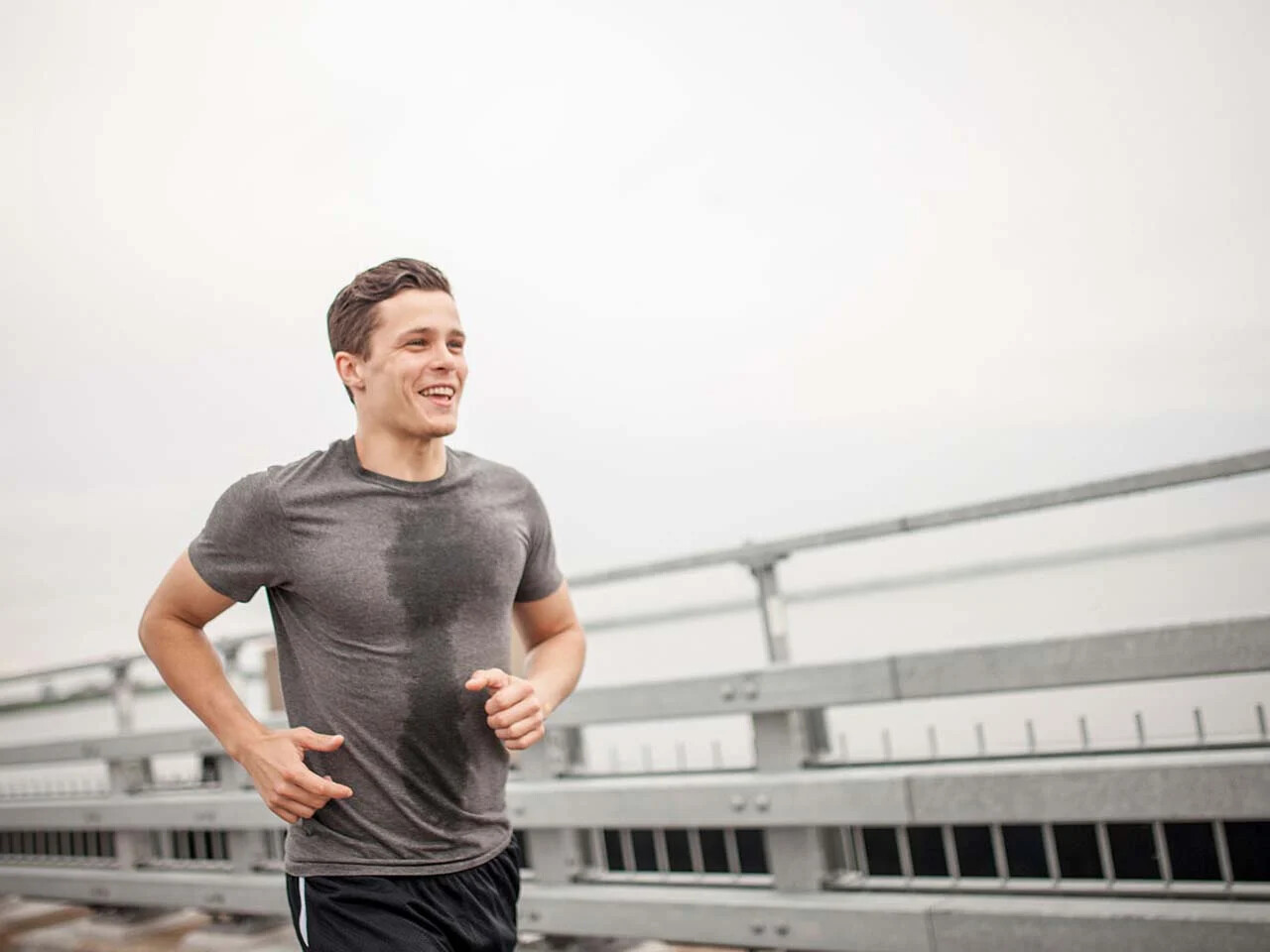
To maximize comfort while running, always dress for 10 degrees warmer than the air temperature.
Cut back on caffeine
While a majority of Canadians can’t live without their morning Tim Horton’s, caffeine may not be the best thing for your sweat glands. According to the Mayo Clinic Institute, “Caffeine stimulates your central nervous system, which activates your sweat glands.” Caffeine elevates your heart rate, and sweating uncontrollably is not an uncommon side effect of overconsumption. If you are trying to sweat less, try cutting back on your daily coffee intake. (The recommended daily maximum for healthy adults is 400 mg per day–about four cups of coffee.)
Use antiperspirant
If you’re only using deodorant to tame your pits while you work out, it won’t do much. All deodorant does is mask unpleasant smells; antiperspirant helps reduce sweating by plugging your sweat glands with aluminum salts. Some athletes will put on antiperspirant the night before their run to allow it to absorb into their sweat glands and prevent sweat the following day.
Stay cool
Some final tips for staying cool in summer:
place a small bag of ice on your head or neck before you run.
Stay well hydrated throughout the day.
Change up your usual route and head into the trails to find some shade.
(06/28/2022) ⚡AMPby Marley Dickinson
Highlights from the 2022 USATF Outdoor Championships June 26
The USATF Outdoor Championships at Hayward Field in Eugene, Oregon have finished and the athletes set to represent Team USA at the World Athletics Championships have been decided. Over four days, there was a world record set and plenty of great battles for the limited spots on the world team.
The World Athletics Championships will be back at Hayward Field from July 15 to July 24. It will be the first time the United States is hosting the meet.
Here are the highlights from the 2022 USATF Outdoor Championships.
Cranny wins a close one in the 5,000 meters
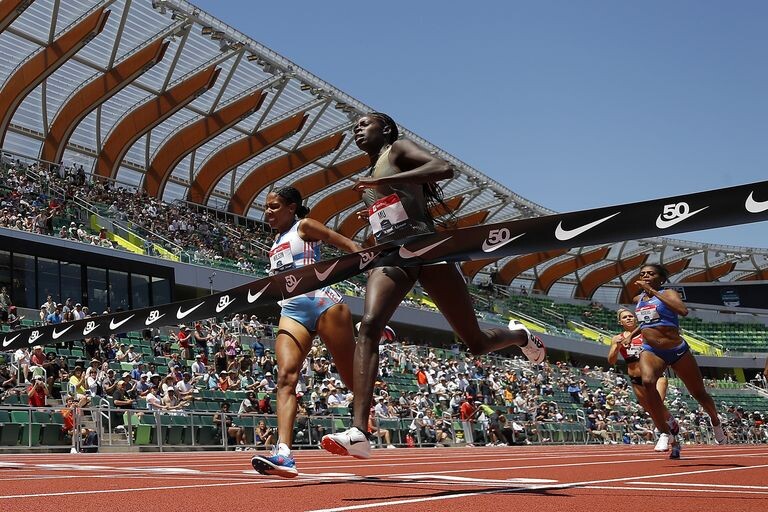
After a schedule change to avoid hot conditions, the women’s 5,000 meters opened the final day of the USATF Outdoor Championships. Unfortunately, the women couldn’t completely escape the heat—the temperature on the track read 82 degrees.
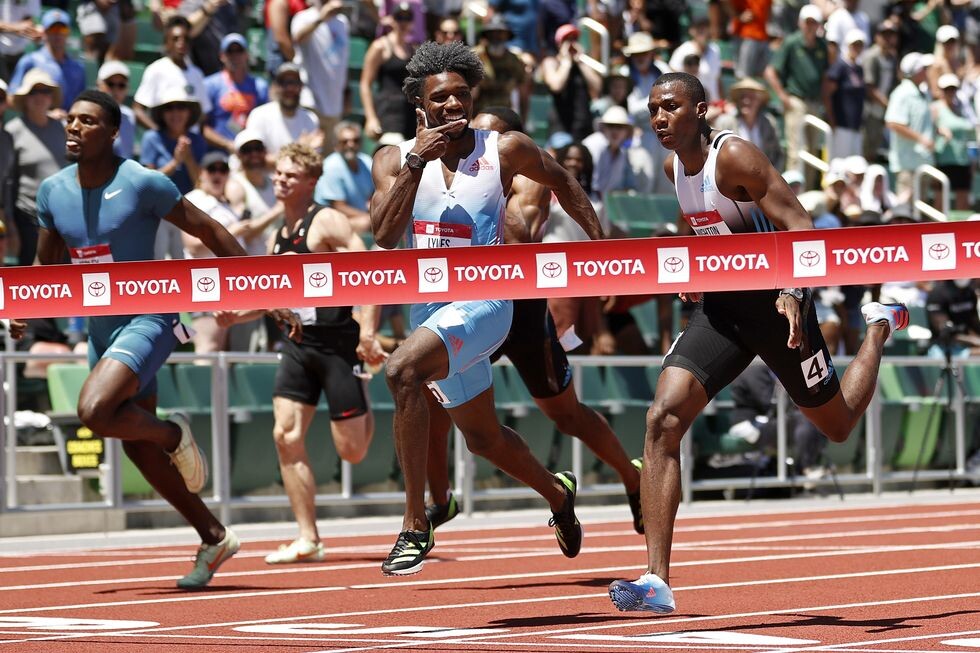
As a result, the women dawdled, running most of the race in a tight pack. With 1600 meters remaining, Karissa Schweizer—who placed fourth in the 1500 meters on Saturday—picked up the pace. With two laps, four women separated themselves: Schweizer, indoor American record holder Elise Cranny, world championships bronze medalist Emily Infeld, and Weini Kelati. Kelati fell off the group by the bell, and the top three were set. Now, it was a battle for place.
Schweizer, Cranny, and Infeld battled down the final straightaway, trading leads multiple times. When the dust settled, Cranny earned the victory, with Schweizer and Infeld less than a half second behind in that order.
Each woman completed their own unique narrative coming into the race. Cranny scratched from the USATF 10,000-meter championships on May 27, saying in an Instagram post she hadn’t been feeling like herself in training. Schweizer, who did qualify for the 10,000 meters, also placed fourth in the 1500. With this 5,000-meter performance, she completed one of the best championship runs in U.S. history. Finally, after just missing out on qualifying for the 10,000-meter world team, Infeld earned a spot on her first global championship team since 2017.
Fisher takes down 5,000 meet record, Kincaid unleashes furious kick for second
Conversely to the women’s race, the men’s 5,000 meters went out hard. Hillary Bor, who qualified for the steeplechase team on Saturday, kept checking his watch—apparently pacing the race. Multiple time global medalist Paul Chelimo and Bowerman Track Club teammates Grant Fisher and Woody Kincaid held position right behind Bor.
Bor dropped out at 1800 meters after splitting 4:12 for the mile. Evan Jager, who also qualified for the steeplechase world team, led the men for another mile. Fisher, Emmanuel Bor, and NCAA indoor 5,000-meter champion Abdihamid Nur of Northern Arizona quickly separated from the group after Jager dropped out.
Over the final 1200, Fisher put on a clinic, squeezing the pace over each lap until he was all alone. He won the race in 13:03.86, a meet record.
The most exciting portion of the race occurred offscreen. After trailing the top three by five seconds with 400 to go, Kincaid unleashed a monstrous 54.24 final lap to take silver in a time of 13:06.70. Nur held on to earn his first world championship berth, running 13:08.63. Emmanuel Bor faded to fifth.
Coburn claims eighth straight U.S. steeplechase title
After a moderate first 1,000 meters, four women were clear of the pack in the women’s steeplechase: recent NCAA champion Courtney Wayment, Gabi Jennings, six-time U.S. champion Emma Coburn, and Olympic silver medalist and American record holder Courtney Frerichs.
That group whittled down to Wayment, Coburn, and Frerichs by 800 to go. Half a lap later, Coburn quickened her pace. Wayment and Frerichs, perhaps surprised by the move, didn’t go with Coburn, who put more and more distance on them over the final lap. Coburn notched her eighth consecutive U.S. title in a season best of 9:10.63. Wayment finished second, and Frerichs took third.
Ajeé Wilson nearly upsets the defending Olympic champion The women’s 800 meters promised to be the event of the meet, and it didn’t disappoint.
Athing Mu, defending champion, jumped off the line hard to take her traditional spot in the lead. Olivia Baker and indoor world champion Ajeé Wilson were right on her heels while Olympic bronze medalist Raevyn Rogers hung around mid-pack.
All of the women were still together with 200 to go. The broadcast commentators predicted that Mu would break the race open before the end of the bend, but spectators were treated to something more interesting: Wilson was right on Mu’s shoulder with 100 to go. With gritted teeth, the two athletes dashed neck-and-neck down the straightaway. It looked as if Wilson had the upper hand, but the Olympic champion pulled through in the final meters to snag the victory in 1:57.16. Rogers slingshotted out of the pack to pass three runners for third.
Bryce Hoppel earns first outdoor national title
The men’s 800 meters featured a consequential last 100 meters. Texas A&M’s Brandon Miller set a fast early pace, crossing the 400-meter mark in 51.62. He fell to second as Hoppel took control on the final bend.
It wasn’t over yet, as the entire field was still in striking range with 100 left. But Hoppel and Jonah Koech surged ahead, while Miller duked it out with a late-charging Clayton Murphy for the third qualifying spot. Miller overtook the two-time Olympian with a dramatic dive at the line, securing a trip to worlds. Hoppel’s winning time was 1:44.60, a season best, while Koech’s ran a personal best of 1:44.74.
Noah Lyles charges late to overtake 18-year-old star Erriyon Knighton
After 100 meters, it looked like 18-year-old Erriyon Knighton was on his way to his first national championship. But that’s why there’s another 100 meters in this event, because defending world champion Noah Lyles found another gear. With a smile and finger pointed at Knighton, Lyles broke the tape first in 19.67. Knighton finished second, while 100-meter national champion Fred Kerley nabbed another world team spot. Because Noah Lyles has a bye to the world championships, fourth-placer Kenny Bendarek also qualified.
NCAA champion Abby Steiner becomes U.S. champion
With defending U.S. champion Gabby Thomas in poor form this year, the gate was open for a new women’s 200-meter champion. Abby Steiner, who won the NCAA title two weeks ago, capitalized on that opening. She won the title with a world lead and personal best of 21.77. Tamara Clark and Jenna Prandini qualified as well with their respective second and third place finishes.
(06/27/2022) ⚡AMPby Runner's World
USATF Outdoor Championships
With an eye toward continuing the historic athletic success of 2022, USATF is pleased to announce competitive opportunities for its athletes to secure qualifying marks and prize money, including a new Grand Prix series, as they prepare for the 2023 World Athletics Championships in Budapest, Hungary.As announced a few months ago, the 2023 Indoor Championships in Nanjing, China have been...
more...Do this to improve your running form in seconds, Use this quick check-in to run more efficiently right now
If you’re looking to improve your running form, you’ll find no shortage of information. Entire books devoted to proper footstrike, gait analysis sessions and shoes promising to fix your bad habits are all popular (and expensive). Insert a minute focused on form into your training sessions regularly, and you’ll soon be running more smoothly by habit. Your natural form will become more loose and efficient, with minimal effort or cost. Here’s a quick rundown on how to check and improve your form in under 60 seconds.
Relax
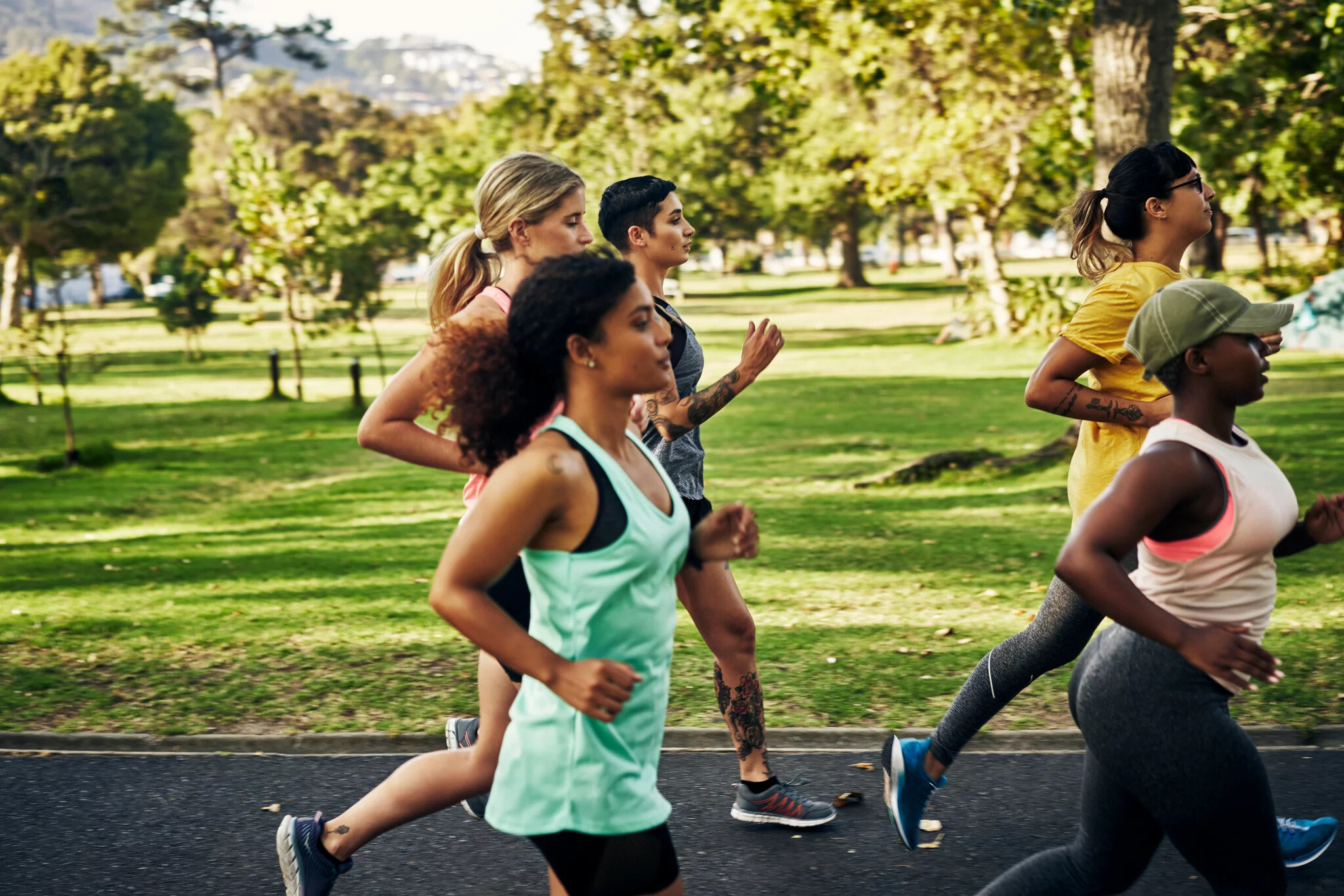
It sounds simple, but it can be tricky, especially if you’re running at a challenging pace or experiencing life stress. Both will carry over to tension in your body during a run, a common form-destroyer. If you’ve ever ended a running workout and discovered that your arms and shoulders were sore, you’ve fallen prey to this common issue. By taking a moment to consciously relax your face, drop your shoulders and give your arms a shake-out, you can release any tight spots and give yourself a reset.
Don’t lean too far forward, or back
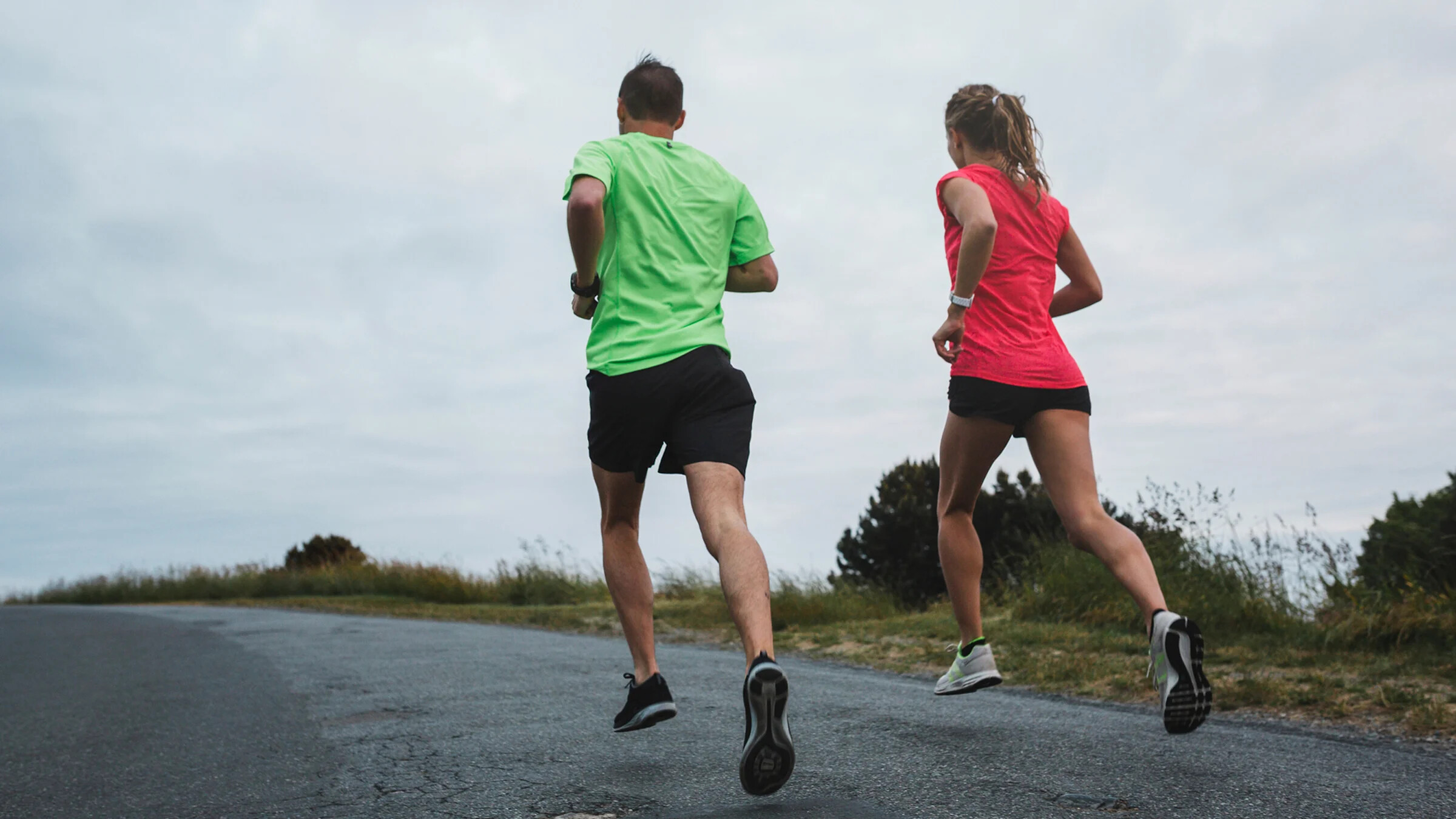
When fatigue sets in, it’s easy to stop paying attention to the way you’re carrying yourself. At the very end of ultras, you can usually see a few people coming in with “the lean,” an exhausted-looking forward slant. After you’ve shaken out your arms and relaxed your face, check in with your carriage. You might find it most comfortable to lean slightly forward while running: that’s fine, as long as you aren’t compromising your ability to breathe easily. If you find yourself overstriding, or your feet are connecting with the ground in front of your body, you need to adjust. Imagine the crown of your head reaching skyward, or envision yourself as a puppet with a piece of string stretching up through the top of your head. Keeping your gaze focused forward rather than down can help you find your natural running stride.
Breathe deeply
Using your breath as a tool can take some practice, but simply taking a couple of deep breaths improves your oxygen intake immediately. If you’ve ever tried yoga, you are probably familiar with “belly breathing” or diaphragmatic breathing: inhale through the nose while expanding your abdomen, then exhale deeply through your nose or mouth. Deep breathing will help your body relax, and with a bit of experience, you’ll find yourself belly-breathing naturally, even in hard runs and races. If you notice breathing deeply is a challenge during your one-minute form check, try adding a few minutes of belly-breathing practice before or after your run.
(06/27/2022) ⚡AMPby Running Magazine
Abby Steiner storms to 200m win at US Championships
There’s no place like Hayward Field for US athletes, who completed their national championships on Sunday (26) in what was essentially a trial run for the World Athletics Championships Oregon22 next month.
Abby Steiner had the race of her life in the women’s 200m, while 400m hurdler Rai Benjamin and shot putter Chase Ealey moved atop the world lists on another hot day at the US Championships in Eugene.
For Steiner, Hayward Field is definitely in her comfort zone. She lowered her PB to 21.77 while earning her first national crown just 15 days after shattering the collegiate record and taking the world lead with a 21.80 amid cooler temperatures at the NCAA Championships. The University of Kentucky sprinter equalled that time in the semifinals at the US Championships.
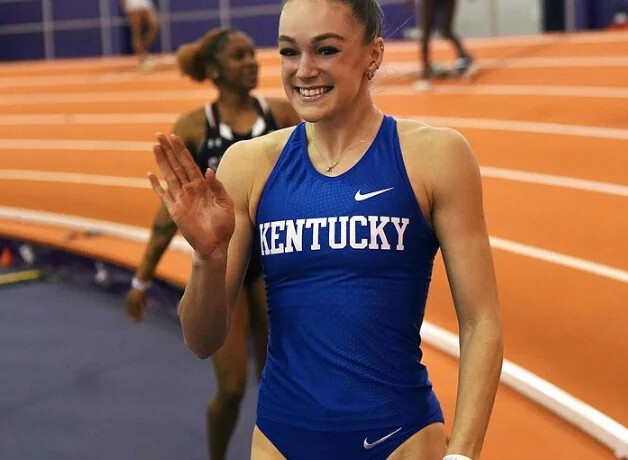
“The main focus was just to come away with a win, make the team,” said Steiner, whose performance was another world lead until Shericka Jackson ran 21.55 at the Jamaican Championships. “It was nice having had NCAAs at this track; it was kind of a familiar environment so I knew if I replicated my race that I had at NCAAs with nicer weather, we were going to walk away with a PB.”
Steiner will return to Eugene along with the other US athletes who qualified for the World Athletics Championships Oregon22 in less than three weeks, no doubt to enjoy their home field advantage. The World Championships are taking place on US soil for the first time.

While Steiner wasn’t as dominant in the first 50 metres, she grabbed the lead with 40 meters to go, defeating Tamara Clark, who ran a PB of 21.92. Olympian Jenna Prandini, who came off the curve in first place, ran a season's best of 22.01 on her college alma mater’s track.
Olympic bronze medalist Gabby Thomas placed eighth in 22.47 after battling a hamstring injury the past two weeks, while Sha’Carri Richardson did not advance to the final.
Steiner was smiling with her arms outstretched as she crossed the finish line into a slight headwind.
Steiner said the win means “Everything.”
“Coming off the collegiate season, a lot of people want to put limitations on you and say you’re going to be burnt out,” she said.
Steiner definitely proved she still has momentum.
(06/27/2022) ⚡AMPby World Athletics
USATF Outdoor Championships
With an eye toward continuing the historic athletic success of 2022, USATF is pleased to announce competitive opportunities for its athletes to secure qualifying marks and prize money, including a new Grand Prix series, as they prepare for the 2023 World Athletics Championships in Budapest, Hungary.As announced a few months ago, the 2023 Indoor Championships in Nanjing, China have been...
more...Americans Leonard Korir and Keira D’Amato Sweep Titles at 2022 B.A.A. 10K
It was an American sweep at the 2022 B.A.A. 10K presented by Brigham and Women’s Hospital, with Leonard Korir (28:00) and Keira D’Amato (31:17) winning the professional open divisions and Susannah Scaroni and Hermin Garic capturing the wheelchair crowns. The pace was as hot as the weather, with the wily veteran Korir setting a personal best and Scaroni shattering the wheelchair world record for the distance.
“It feels really nice!” said Scaroni, who won a gold medal at 5,000 meters in the 2020 Paralympics but two weeks later was struck by a car while training. “It’s always great to be at a race where they’re trying to make it world-record eligible.” Scaroni broke the tape in 21:56, shattering Tatyana McFadden’s previous mark of 23:34.
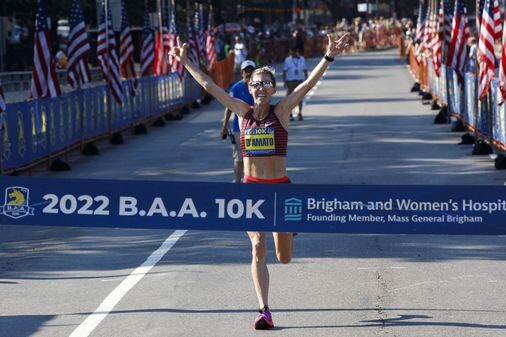
As pleased as she was with the record, Scaroni was also excited to win the race outright. Asked if she had ever been the first wheelchair athlete, man or woman, across the line, she beamed. “Oh no, never! I didn’t expect that at all.”
Winning the men’s wheelchair race was Boston Marathon veteran Hermin Garic, in 22:07. “It feels awesome, coming back to Boston.”
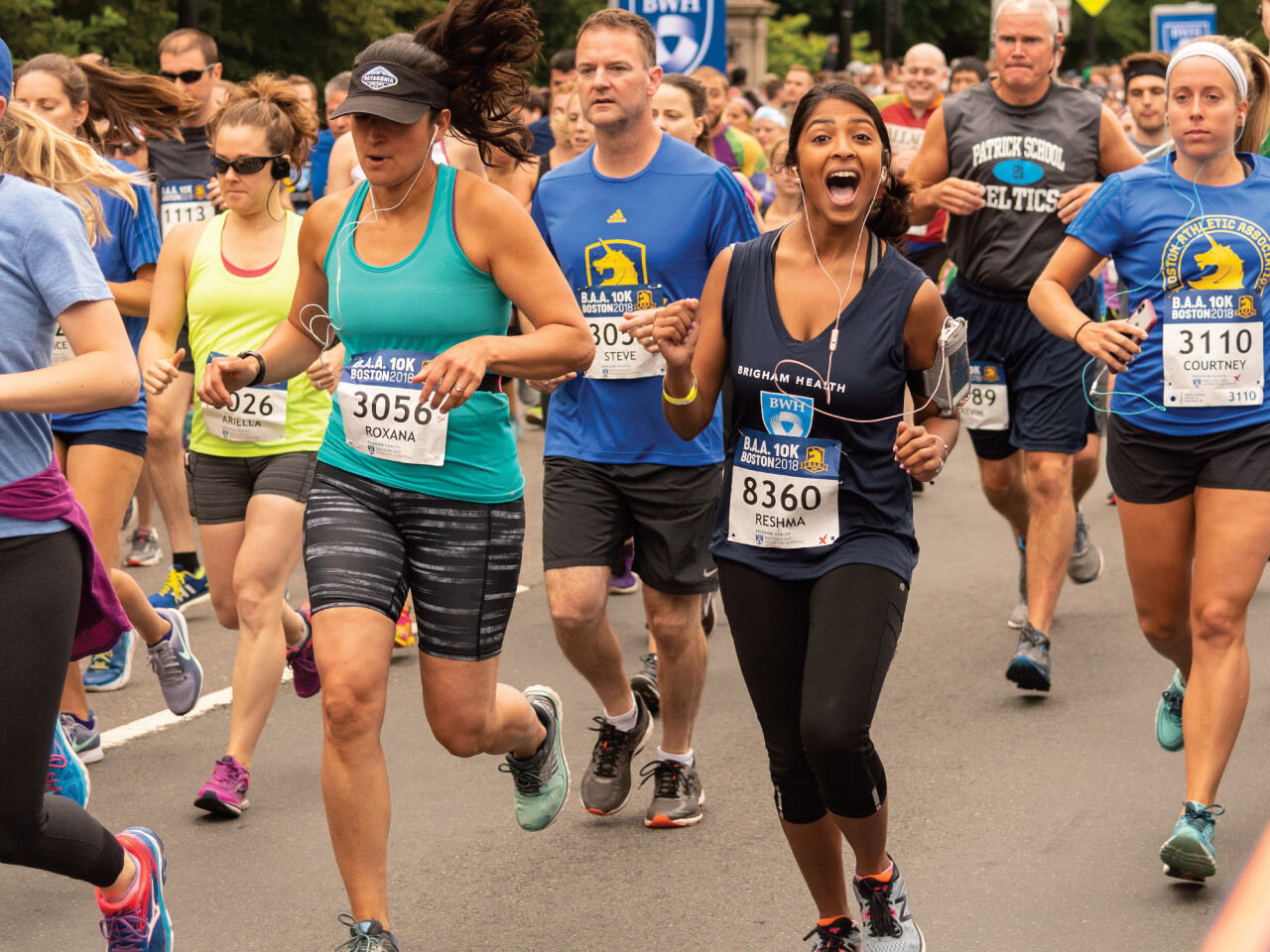
In the men’s open division, a pack of 17, led by Bravin Kiptoo, went through the first mile in a scorching 4:21.
“When I saw the first people were so fast, I knew they were going to pay,” said Korir, a 2016 Olympian who has already won national titles this year at the half marathon and 25K. “It was like suicide. I said, ‘let me just hang in there and strike when the time comes.’”
The men ran the second mile in 4:24, but had slowed to 4:37 by the fifth. By that time, it was Kennedy Kimutai and Korir running neck-and-neck. “With a mile to go, I realized I was feeling so strong. I said, ‘let me just go now.’”
He would surge ahead to win in 28:00, nine seconds faster than the personal best he set on this course in 2014. Kimutai would finish second in 28:07, with Philemon Kiplimo third in 28:09. American Ben True was fourth in the same time; Ben Flanagan, fifth in 28:11, set a Canadian 10K record and also set a national mark through 8K in 22:30.
In the women’s race, D’Amato said that her goal was to race aggressively and go after the pace. Mission accomplished: A pack hit mile 1 in 5:05, but by mile 3 (reached in 15:08) she and Kenya’s Sharon Lokedi were gapping the field. As they battled, they ran mile 4 in 4:29, 30 seconds ahead of their chasers.
“We were battling it out,” said D’Amato, who in January broke the American record for the marathon when she ran 2:19:12 in Houston. “That was a fierce duel. With 1200 [meters] to go, she was breathing really hard and I just went by her.” Lokedi succumbed to the heat and humidity on Charles Street roughly 200 meters from the line and would not finish.
American Emily Sisson finished as runner-up in 32:03, with the 42-year-old Edna Kiplagat, the 2017 Boston Marathon champion, third in 32:09.
Claiming the inaugural B.A.A. 10K Para Athletics Divisions were Adrianne Haslet (1:15:19) and Marko Cheseto Lemtukei (35:44) for T61-T64 (lower limb impairment) classification and Erich Manser (50:49) and Jennifer Herring (45:41) in the T11-T15 (vision impairment) classification. Haslet earned the title on her birthday, and was exuberant at the opportunity to win on the road of Boston.
“To not just be invited to run a race, but invited to compete means that we’re being included among some of the world’s best runners with the world-class B.A.A. as hosts. It can’t get much better than that,” said Haslet.
Approximately 5,146 participants crossed the finish line of today’s B.A.A. 10K. Brigham and Women's Hospital, the B.A.A. 10K’s presenting sponsor and exclusive fundraising partner, fielded a team of more than 350 fundraising runners. Since 2016, more than 2,100 runners and 180 teams have raised $1.2 million to fuel life-giving breakthroughs at Brigham and Women’s Hospital through the B.A.A. 10K.
The third and final event of the 2022 B.A.A. Distance Medley will be the B.A.A. Half Marathon presented by Dana-Farber Cancer Institute and the Jimmy Fun on Sunday, November 13. Registration is currently open within the B.A.A.’s online platform, Athletes’ Village.
(06/27/2022) ⚡AMPB.A.A. 10K
The 6.2-mile course is a scenic tour through Boston's Back Bay. Notable neighborhoods and attractions include the legendary Bull and Finch Pub, after which the television series "Cheers" was developed, the campus of Boston University, and trendy Kenmore Square. ...
more...Why you should try a backyard ultra
The creator of the backyard ultra, Lazarus Lake, sums his event up perfectly: “We run in the backyard for many different reasons. We run because it is fun. We run to socialize with our friends (old and new). We run to go further than we have ever gone before.” Whether you are an experienced trail runner or completely new to the scene, a backyard ultra is worth experiencing. Lake hosts the most famous backyard ultra, Big’s Backyard, but you don’t need to have your hopes set on Big’s to try out one of the many backyard races hosted each year.
Backyard ultras follow a simple rule: runners start every hour on the hour, and follow a 6.706 km course. Pace doesn’t matter, as long as you finish the loop before the one-hour cutoff and are ready to start the next loop on time. After runners finish each loop (or “yard” as it’s called in a backyard race) they may rest, eat, refuel, cry—the options are endless. Racers must simply be at the starting line ready to run every hour on the hour until only one runner is left. A backyard ultra can go on for many hours or even days, with current record holder Merijn Geerts boasting 90 laps, or 600 km. While that might sound daunting, a backyard ultra can be a unique and valuable experience for any runner, regardless of distance and time goals. Here’s why you should sign up for one this season.
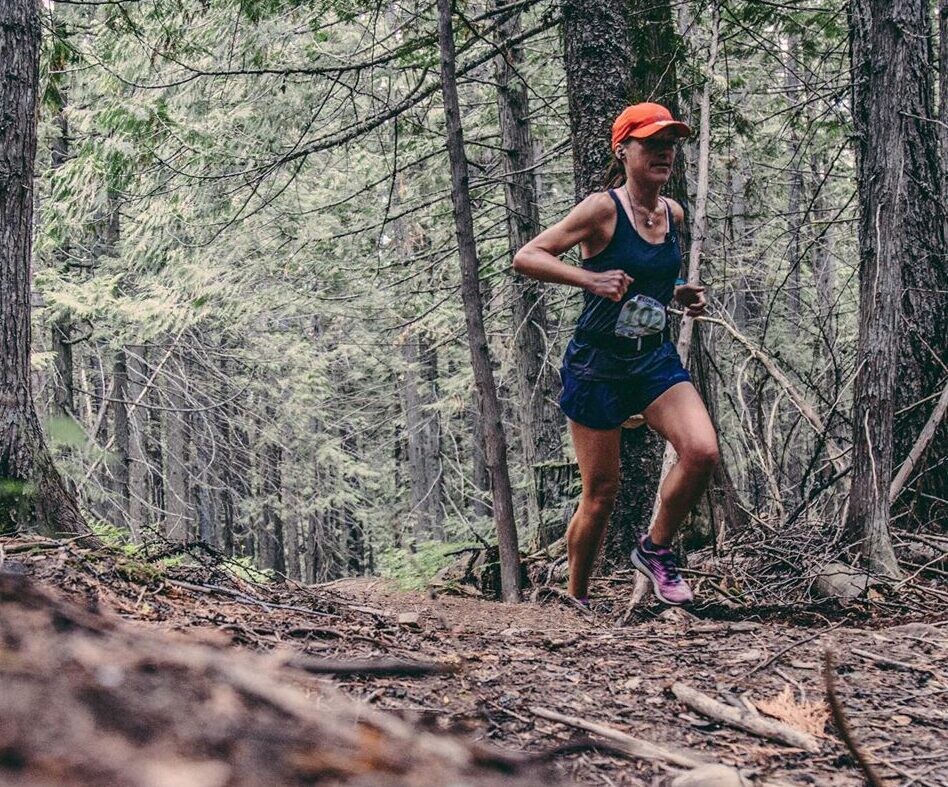
It doesn’t matter how fast or far you run
I ran three loops at my first backyard race–not remotely close to an ultra distance, despite the word being in the race name. Recovering from an injury and just starting to add mileage, I knew I was done just shy of a half-marathon. I had never been to an endurance event of this kind, and I hung around after to soak in the atmosphere. I wasn’t the first person to drop out. At the end of a backyard race, every single person aside from the winner takes a DNF (did not finish). There’s no second place; everyone is equal.
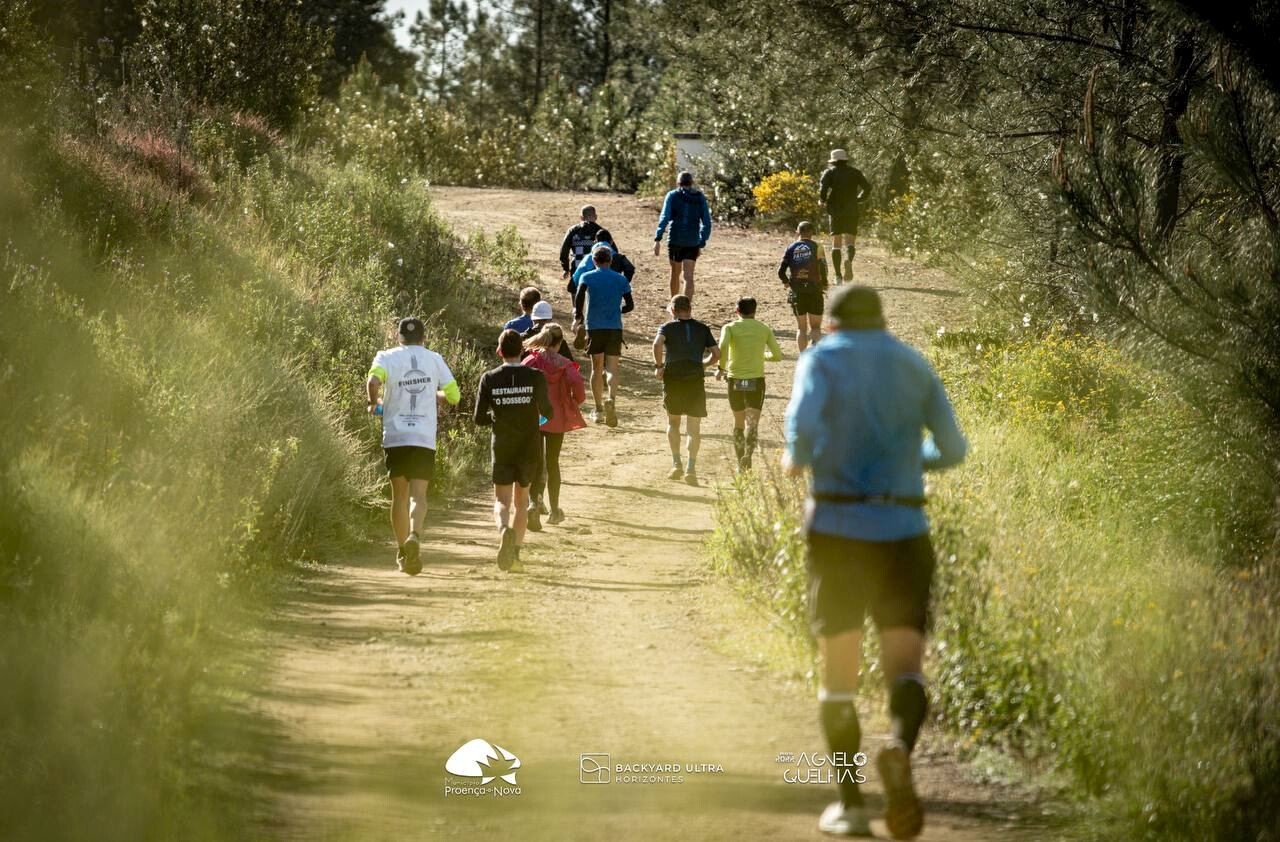
Running fast at a backyard ultra sounds like a positive—lots of time to recover, right? Many of the top backyard athletes actually run very slowly, even taking walk breaks, to minimize the toll on their bodies and extend their ability to run for hours (or days). There are very few perks to running quickly through the course and burning through your energy, fuel, and enthusiasm. If you are usually a back-of-the-packer, you’ll find you’re never alone.
It’s the perfect place to learn and practice troubleshooting
Most runners have experienced a less-than-ideal racing situation. From wardrobe malfunctions to GI distress, if you run long enough, you’ll have to work through an issue of some kind. In a backyard ultra, because you’re with your crew and around aid stations after each loop, you have the perfect opportunity to practise handling situations as they arise. If you’re training for an ultra, this can be essential. Not only are you only a maximum of 6.706 km away from your crew if your shoelace breaks or you start to feel sick; but you also get to experience handling potential setbacks on the fly. Backyard ultras often have both a daytime course, run on trails, and a nighttime course, on road or smooth paths that are safer during the dark hours.
My mom crews me at most of my races, and instead of trying to anticipate what I would need when I came flying into an aid station (as is usually the case), I was able to ask her to have something ready for me when I came back in from my loop. There’s a mental boost to knowing you only have to run 6.706 km and you’ll find fresh clothing prepped for you, or the snack you’ve been craving.
You’ll experience a community like no other
Backyard ultras are unique in that you’re always fairly close to the rest of the group, as well as the crowd and crew. A team atmosphere emerges, since a backyard racer can only go as long as their “assist” or the second-place finisher, runs. Racers need one another in order to keep going, and the larger the crowd, the more fun. If you make it until the nighttime loops, you will find that team atmosphere growing stronger, as runners personally battle their own fatigue and desire to stop running when darkness takes over. In my most recent backyard race, the inaugural Lewiston Backyard Ultra in Salmon Arm, B.C., it was most certainly the camaraderie among the runners that kept me moving through the night. One particularly cheerful (and renowned backyard athlete) Matt Shepard, of Valleyview, Alta., performed a resounding rendition of Macklemore’s Downtown, while running, to rally the group in the wee hours of the morning, and it worked–our spirits were lifted. You’ll experience tiny magical moments like this sprinkled throughout every backyard event.
(06/27/2022) ⚡AMPby Keeley Milne
2022 Western States 100 Men’s Race
This year’s men’s race had the notable absence of course record holder Jim Walmsley, who has dominated the race in recent years, leaving it wide open for a good number of runners with potential to win. Among them were seven of last year’s top 10, including second-place finisher Tyler Green, and Tim Tollefson, who was fifth last year but hotly fancied to be capable of winning this race on a good day. Last year’s eighth place man, Hayden Hawks, who ran Western States as his debut 100 miler, was also believed to have more to offer in this race.
Notably, joining them as a Golden Ticket entrant was Jared Hazen, the second fastest Western States finisher of all time.
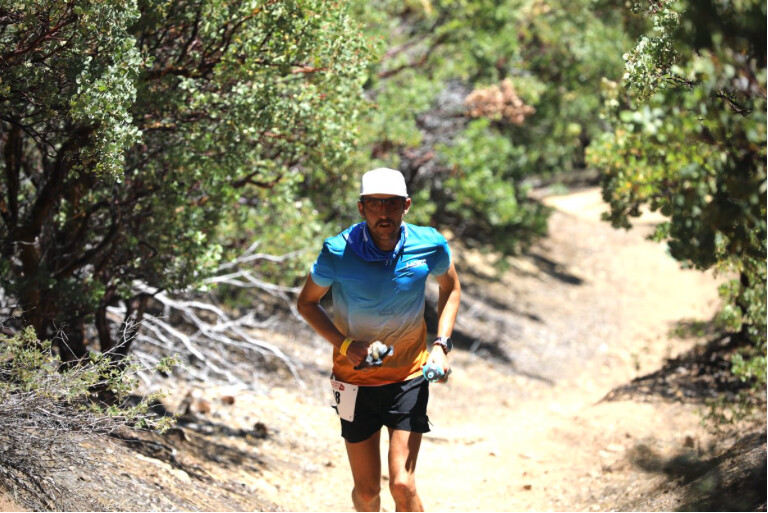
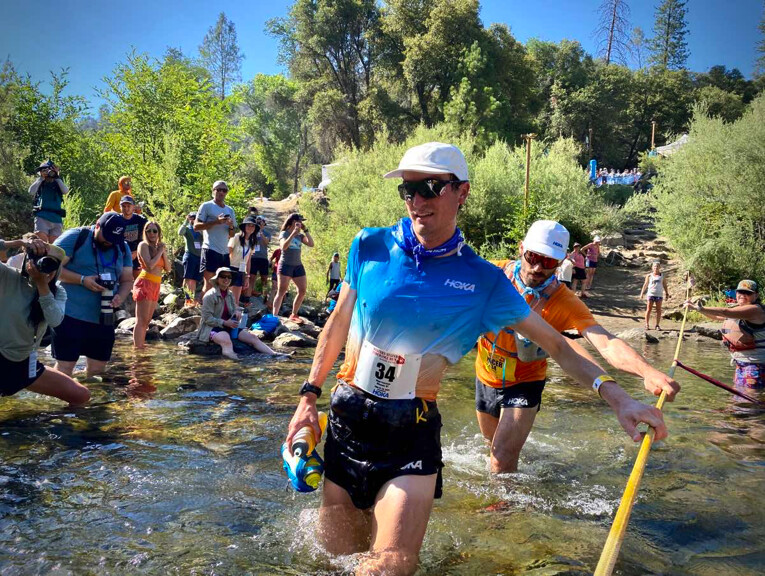
And last but certainly not least, the relative new kid on the block, who has quickly shot up through the distances and dominated every ultra he’s ever started — Adam Peterman.
Peterman won his way into Western States at the Canyons by UTMB 100k, where he toppled the course record in his first ever 100-kilometer race. He took a gamble by taking on his first 100 miler a little over two months later, and defended the decision to iRunFar in his pre-race interview saying: “I don’t feel like I always need to just make logical steps because we’re running 100 miles, that’s an illogical game.”
The first 3.5 miles of Western States features 2,550 feet of climbing, to the first landmark at the Escarpment. First to the top was Adam Kimble, closely followed by France’s Ludovic Pommeret — with Hawks, France’s Seb Spehler, and Hazen coming through in quick succession.
Tollefson, Tom Owens (U.K.), Peterman, Jonathan Rea, and Alex Nichols completed the front 10, all within a couple of minutes of each other.
By Lyon Ridge at mile 10, Ludovic had taken the lead and he came through Red Star Ridge at mile 15, four minutes clear of Spehler in second, with Kimble in third, and Hawks and Tollefson a few minutes back, followed by Hazen, Peterman, and Arlen Glick. Nine minutes separated the first eight runners to this point.
The two Frenchmen held the top positions into mile 24, just before Duncan Canyon, with Pommeret coming through six minutes off course record pace. At this point Tollefson had moved up to third and Hawks and Peterman sat comfortably in fourth and fifth, 8:10 back from the lead, with Glick following 10 seconds behind.
Pommeret held the lead into Robinson Flat, mile 30, with the pressure starting to show. Hawks had moved up to second by now and was looking a lot more comfortable, just two minutes back from the leader. Peterman had then moved up the field also to third position, just in front of Spehler, who’d dropped back to fourth, with Tollefson seconds behind. This chasing pack were just four-and-a-half minutes off the leader.By Millers Defeat at mile 34, Hawks had closed the gap to a minute, and by Dusty Corners, mile 38, he’d taken the lead from Pommeret.
Through Deadwood Cemetery, mile 49.5, Hawks maintained the lead and looked like he was having a super day. There had been some reshuffling in the other top positions, with Peterman, Hazen, and Glick all still in the mix.
By Foresthill, mile 62, Hawks was still in the lead but Peterman had separated himself from the other chasers in second. He arrived just three minutes back from Hawks and almost eight minutes clear of Hazen in third. Spehler, who had a promising first half, had dropped back the field suffering stomach issues, and Tollefson had also fallen back from the front runners.
Hawks was still in the lead after Foresthill, but by Cal 2, mile 70, Peterman had joined him at the front and the race was on! Hazen held third place, 14 minutes back from the leaders, with Glick in fourth another 15 minutes back from Hazen.
When the race reached the Rucky Chucky river crossing at mile 78, Hawks still looked comfortable but Peterman had stretched four minutes ahead, putting 30 seconds per mile on his opponent since Cal 2, showing unbelievable strength and determination for a 100-mile debut.
Hazen maintained third position, now 24 minutes off the lead, with Glick and France’s Vincent Vietmaking up the front five.
Hazen had started to struggle and dropped out at mile 85, with Glick moving up to third. Peterman had by now extended his lead to 10 minutes.
The top three positions remained unchanged for the remainder of the race, but Peterman utterly dominated in the closing miles, finishing in 15:13:48, almost 34 minutes clear of Hawks in 15:47:27. Glick rounded out the top three in 15:56:17.
t’s clear from this 100-mile debut that we will be seeing a lot more of Adam Peterman. He executed this win in a similarly patient manner to his win at the Canyons 100k, and he races like a runner with a lot more ultrarunning experience than he has.
Moving up all race again, Green ended the day in fourth position in 15:57:10, what was two places back but some 13 minutes faster than his debut at this race last year. Drew Holmen (pre-race interview) finished fifth after a strong, all-day performance. His 16:09 finish this year is also two places back but 14 minutes faster than last year. These two gentlemen have much in common.
Frenchman Pommeret stayed strong to finish in sixth place and first masters, and he was closely chased by fellow Frenchman Viet. Nichols moved up two spots this year to take eighth. Cody Lind moved back from fourth last year to ninth this year. And Scott Traer meted out his race effort perfectly to run his way into the men’s top 10 for 10th place.
Men’s DNFs included Spehler and Hazen, both due to various physical issues.
(06/26/2022) ⚡AMPWestern States 100
The Western States ® 100-Mile Endurance Run is the world’s oldest and most prestigious 100-mile trail race. Starting in Squaw Valley, California near the site of the 1960 Winter Olympics and ending 100.2 miles later in Auburn, California, Western States, in the decades since its inception in 1974, has come to represent one of the ultimate endurance tests in the...
more...2022 Western States 100 Women’s Race
Last year’s winner Beth Pascall was absent from the start list for 2022, but there was still plenty of talent toeing the line. Six of last year’s top 10 made the final starting list, including hot favorite and previous second-place finisher, New Zealand’s Ruth Croft and last year’s seventh-place woman Emily Hawgood, who was believed to be capable of ruffling some feathers on her second attempt.
Outside of the returning top runners, this year’s start list also featured 100-mile world record holder Camille Herron, former podium finisher Lucy Bartholomew (Australia), and second-place woman at last year’s UTMB, France’s Camille Bruyas.
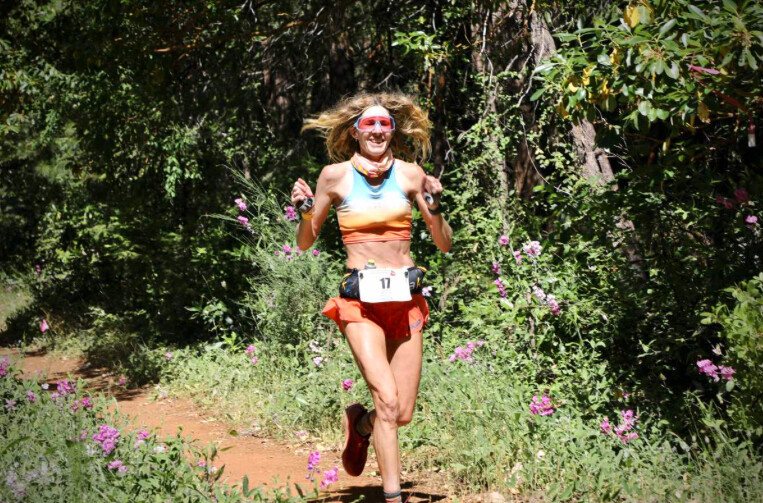
Herron was first to the top of the Escarpment, the race’s high point at mile 3.5, with Ellie Pell hot on her heels. They were followed by Keely Henninger, Poland’s Dominika Stelmach, Katie Asmuth, Canada’s Marianne Hogan, Lindsey Hagen, and Camille Bruyas, all within a couple of seconds of each other. Hawgood followed along in ninth position, followed by Switzerland’s Luzia Buehler in 10th.
The race had yet to space out at Lyon Ridge at mile 10, with Stelmach, Herron, and Hogan coming in together, closely followed by Henninger, Hawgood, Asmuth, and Pell.
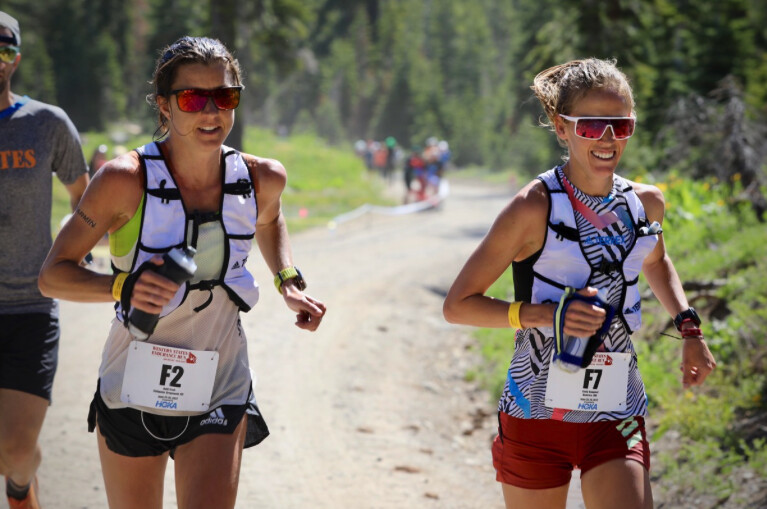
By Red Star Ridge at mile 15, Croft had begun to make her presence felt and climbed up the field to fourth position. Hogan led the field into Duncan Canyon, mile 24, just 20 seconds clear of Stelmach in second, then Hawgood, Henninger, and Croft.
By Robinson Flat, mile 30, Hawgood and Croft had moved up to share the lead and they continued to run together through mile 38, which they passed just under course record pace. Stelmach followed about 90 seconds back in third, a minute clear of Henninger in fourth. Herron had moved back to seventh position but still looked good.
The two leaders were still together at Devil’s Thumb, mile 47, but shortly after Croft managed to break away and ran through Deadwood Cemetery, mile 49.5, seven minutes back of course record pace. Hawgood came through just 30 seconds later, still looking happy and fresh and Henninger looked strong in third, 1:15 back from Croft.
The top two remained the same through mile 62, Foresthill, but Herron had begun to fight back and moved up to third position, about 18 minutes back from the leader and four minutes clear of Ailsa Macdonald in fourth. By the Rucky Chucky river crossing, mile 78, Croft had further extended her lead, but the real action was taking place behind her, with Macdonald making moves and climbing up to second place, 24 minutes back from Croft and three clear of Hawgood. Then with 10 miles to go at Quarry Road, Marianne Hogan, who had never been too far out of the frame, made a push and climbed up to third position.
Croft sealed the deal with a 17:21:30 finish to take the win, the third fastest women’s time on record. Macdonald finished impressively close, just 25 minutes back in 17:46:46. Marianne Hogan took the final podium spot in 18:08:32, less than three minutes clear of Buehler in fourth, in a race that really wasn’t over ‘til it was over.
Hawgood, who ran a brave race, finished fifth in 18:16:02, almost an hour better than her previous time. We expect there will be more to come from her if she takes her place on the 2023 start line.
Leah Yingling was sixth in 18:32:31, and Taylor Nowlin, who had a strong second half, took seventh in 18:46:42. Herron, who’s had bad luck in this race before, had a strong eighth place finish in 18:51:54 and Asmuth and Bruyas rounded out the top 10 in 19:30:26 and 19:34:24 respectively. Overall, 11 women broke 20 hours this year, with Anne-Marie Madden finishing just outside the top 10 in 19:38:44.
Women’s DNFs included Bartholomew and Henninger, both due to injury.
(06/26/2022) ⚡AMPWestern States 100
The Western States ® 100-Mile Endurance Run is the world’s oldest and most prestigious 100-mile trail race. Starting in Squaw Valley, California near the site of the 1960 Winter Olympics and ending 100.2 miles later in Auburn, California, Western States, in the decades since its inception in 1974, has come to represent one of the ultimate endurance tests in the...
more...Strava adds video uploads feature in latest update
Who needs to upload running content on TikTok or Instagram, when you can now do it all on one app? Strava, the popular social media app for athletes, is now adding 30-second videos in a rollout of their new update.
The new feature was released in North America on June 15, and all Strava users will be able to see videos before the entire platform releases the upload tool worldwide in the coming weeks.
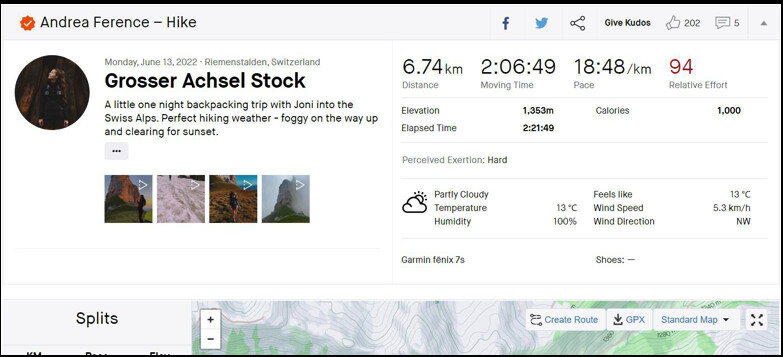
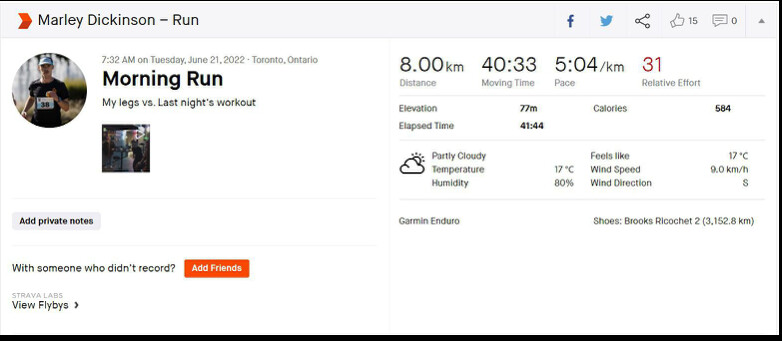
Video clips can be up to 30 seconds long and can be added directly via activity uploads. There’s no limit on how many videos you can upload, and the upload tool is similar to the photo upload, which is still available. If the video file is longer than 30 seconds, Strava will automatically trim it to fit.
Landscape and portrait videos are both supported via web and mobile upload. Videos that are uploaded will automatically play auto-looped, which all Strava users can watch and upload for free.
Although you may be looking forward to uploading videos from your race finishes or hard training sessions, I am looking forward to sharing Gifs and video memes to describe my runs.
Some other cool features in the new update: you can now mention or tag other athletes in an activity description (previously, you could only tag them in the activity itself or mention them in the comments); you can also get an embed code for activity uploads on the web to other online platforms (click “Get Embed Code” in the upper right corner of activity on the web, then paste in in text mode).
(06/26/2022) ⚡AMPby Running Magazine
USATF 2022 Championships finals results through June 25
There has already been a lot of a action during the 2022 USATF Championships in Eugene Oregon. Sydney McLaughlin set a new world record in the 400m hurdles (Second photo). Michael Norman won the 400m (first photo) and Fred Kerley won the 100m (third photo). Photos by Jivko
Women’s 100m
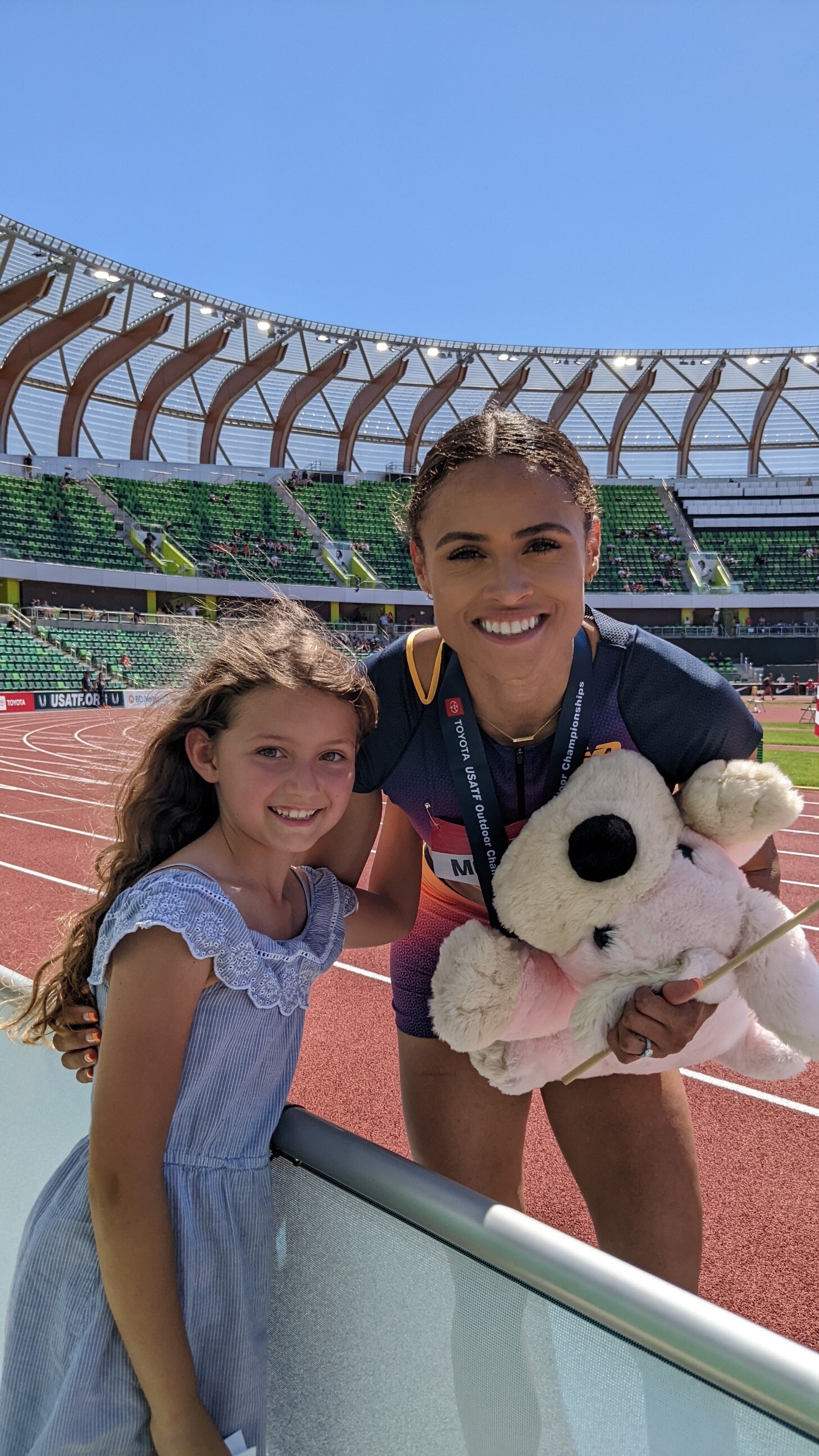
1. Melissa Jefferson — 10.69 2. Aleia Hobbs — 10.72 3. Twanisha Terry — 10.744. Tamari Davis — 10.785. Tamara Clark — 10.826. Celera Barnes — 10.86
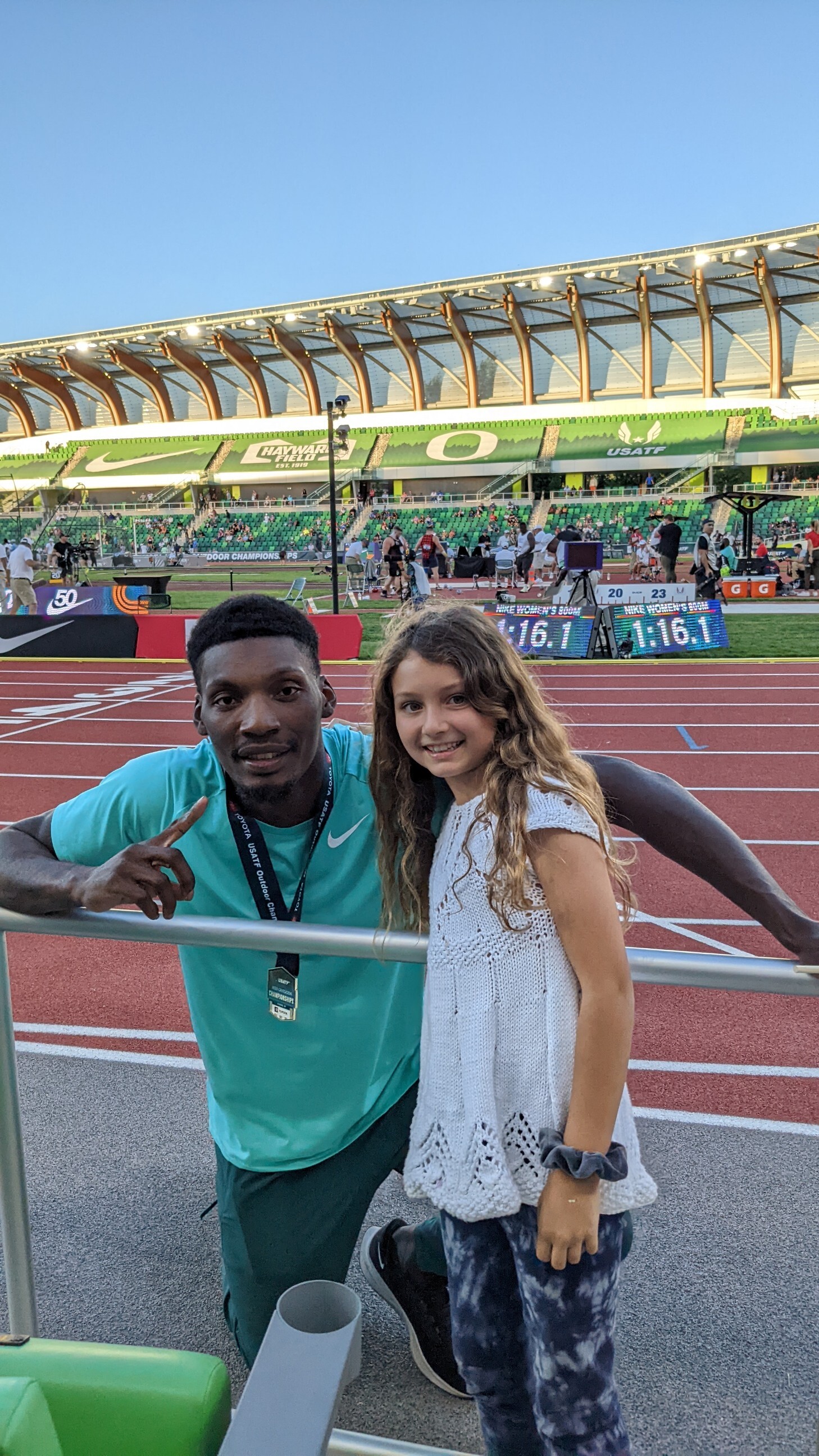
Women’s 400m
1. Talitha Diggs — 50.22 2. Kendall Ellis — 50.35 3. Lynna Irby — 50.674. Wadeline Jonathas — 50.845. Kennedy Simon — 50.906. Allyson Felix — 51.307. Jaide Stepter — 51.308. Kaylin Whitney — 51.31
Women’s 1500m
1. Sinclaire Johnson — 4:03.29 2. Cory McGee — 4:04.52 3. Elle St. Pierre — 4:05.144. Karissa Schweizer — 4:05.405. Heather MacLean — 4:06.40
Women’s 10,000m (from May 27)
1. Karissa Schweizer — 30:49.56 2. Alicia Monson — 30:51.09 3. Natosha Rogers — 31:29.804. Emily Infeld — 31:30.045. Weini Kelati — 31:39.90
Women’s 100m Hurdles
1. Keni Harrison — 12.34 2. Alaysha Johnson — 12.35 3. Alia Armstrong — 12.474. Tonea Marshall — 12.555. Tia Jones — 12.59DNS. Nia Ali (has bye onto world team)
Women’s 400m Hurdles
1. Sydney McLaughlin — 51.41 WR 2. Britton Wilson — 53.08 3. Shamier Little — 53.924. Anna Cockrell — 53.985. Shannon Meisberger — 55.39
Men’s 100m
1. Fred Kerley — 9.77 2. Marvin Bracy-Williams — 9.85 3. Trayvon Bromell — 9.884. Micah Williams — 9.905. Elijah Hall-Thompson — 9.906. Kyree King — 9.96DNS. Christian Coleman (has bye onto world team)
Men’s 400m
1. Michael Norman — 43.56 2. Champion Allison — 43.70 3. Randolph Ross — 44.174. Elija Godwin — 44.345. Vernon Norwood — 44.356. Bryce Deadmon — 44.547. Noah Williams — 45.048. Ismail Turner — 45.56
Men’s 1500m
1. Cooper Teare — 3:45.86 2. Jonathan Davis — 3:46.01 (doesn’t have standard)3. Josh Thompson — 3:46.07 (doesn’t have standard)4. Eric Holt — 3:46.15 (doesn’t have standard)5. Reed Brown — 3:46.28 (doesn’t have standard)6. Johnny Gregorek — 3:46.36 (has standard)11. Yared Nuguse — 3:47.46 (has standard)
Men’s 10,000m (from May 27)
1. Joe Klecker — 28:28.71 2. Grant Fisher — 28:28.81 3. Sean McGorty — 28:29.574. Dillon Maggard — 28:30.755. Shadrack Kipchirchir — 28:30.79
Men’s 3000m Steeplechase
1. Hillary Bor — 8:15.76 2. Evan Jager — 8:17.29 3. Benard Keter — 8:19.164. Duncan Hamilton — 8:20.235. Anthony Rotich — 8:23.15
(06/25/2022) ⚡AMPUSATF Outdoor Championships
With an eye toward continuing the historic athletic success of 2022, USATF is pleased to announce competitive opportunities for its athletes to secure qualifying marks and prize money, including a new Grand Prix series, as they prepare for the 2023 World Athletics Championships in Budapest, Hungary.As announced a few months ago, the 2023 Indoor Championships in Nanjing, China have been...
more...Demystifying Carbon Fiber, A Key Super Shoe Ingredient
The plate is just one part of a midsole’s secret sauce.
Four years ago, Nike launched the Vaporfly 4%, enthralling us with the promise its name implied: a 4-percent boost in running economy. Before the shoe’s release, Eliud Kipchoge wore the Vaporfly while attempting to run a marathon in less than two hours in 2017’s Breaking2 Project. He eventually succeeded two years later in the Alphafly Next%, the Vaporfly’s beefed-up, controversial descendant.
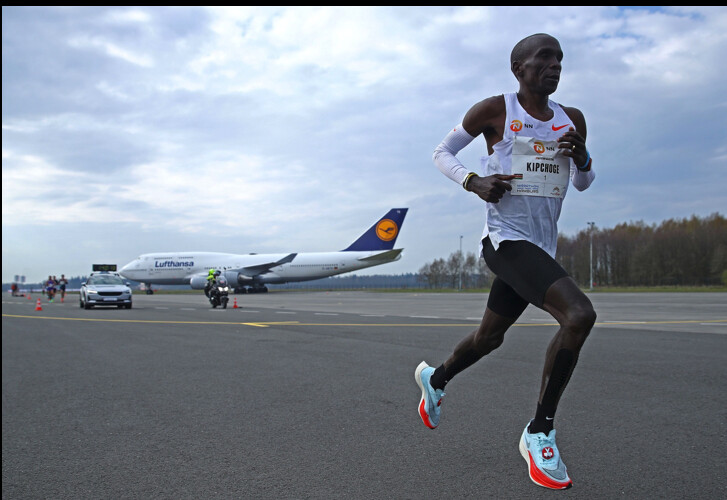
It takes a superhuman like Kipchoge to break what was once thought an impossible barrier, but stats show the average runner can also benefit from running in super shoes. In 2019, Strava data showed runners ran 4 to 5 percent faster in the Vaporfly or Next% compared to runners wearing an average trainer.
Trailing Nike, other brands dove in, releasing their own rendition of super shoes, and adding a smidge of original flavor (e.g., Saucony’s Speedroll tech; the decoupled midsole on the Puma Fast-R). But there are two common denominators these models share: a responsive midsole foam and a carbon-fiber plate. The midsole foam is usually made from a polyether block amide thermoplastic (also known as Peba, or the Arkema-trademarked Pebax). Examples include Nike’s ZoomX, Puma’s Nitro Elite, and Saucony’s PwrrunPB. Compared with standard foam (EVA), Peba is lighter, more compliant, and more resilient.
“Typically, foams act as a cushioning ingredient and plates act as a stiffening ingredient,” said Rebekah Broe, director of product and performance footwear at Hoka, on a video call. The plate limits flexibility, acting as a propulsion agent in the gait cycle. It works in harmony with the responsive foam sandwiching it, thus delivering even higher energy return as you run.
Elliot Heath, Nike product line manager, referred to the carbon-fiber plate as an “enabler.” In constructing the Vaporfly and subsequent models, the Nike running footwear team focused on stiffness and propulsion. The placement of the plate as well as its shape—it has curves like a spoon—enhances your stride’s toe-off.
The plate in Hoka’s road racing models, for example, is fork-shaped and sits closer to the heel. It curves higher in the rear of the shoe and swoops down closer to the ground in the forefoot. “Its offset helps reduce energy loss at the ankle joint and increases stiffness to reduce energy loss at the big toe,” said Broe. “It gives you this balanced ride because you have really soft compliant foam under the foot.”
Hoka released a carbon-fiber trail shoe, the Tecton X, earlier this year. We dissected its midsole in “The Cut Up” last issue, revealing two parallel plates to allow dexterity over obstacles while still providing that propulsive stiffness. The ski-like plates are markedly different from the wishbone-shaped single plate in Hoka’s road racing shoes. Broe said Hoka worked with carbon-fiber vendors to finesse and mold the plates to meet the shoes’ specific needs.
Broe was evasive about which carbon-fiber vendors Hoka uses, withholding that specific information. As predicted, Nike also dodged the question, with Heath stating, “We’re not really in a position to talk exactly about our manufacturers, but all of the initial research and building is done here at Nike campus.”
At The Running Event in Austin, Texas, last November, I met with the carbon-fiber manufacturer Carbitex. Founded in 2010, the company shifted its focus to footwear about five years ago. Shoe brands, including Adidas, Altra, and Scott, are listed on Carbitex’s site.
Carbon fiber is valued not only for its stiffness to encourage propulsion but also because shoe manufacturers can control flexibility. The human foot, Carbitex founder Junus Khan explained on a video call, is asymmetrical; its tendons and ligaments change in stiffness based on need. The malleability of Carbitex’s plates allows the foot to bend in its natural way while providing stability and the prized propulsion PR chasers crave. “When it comes to sporting equipment, how do you create technology that helps augment people’s natural performance?” asked Khan. “The traditional carbon-fiber plates in shoes kind of tell you how to run because it’s a fixed rigid plate.”
Carbon fiber, according to Khan, has been around for only about 50 years. It’s still the new kid on the block in terms of usage. It’s implemented in a host of sectors, from military aerospace to backpacks. Khan describes Carbitex’s role working with shoe brands as “the best supporting actor,” not the main event. The relationship is built on independent research, data, and athlete testing.
Carbitex’s Three Plate Technologies
Khan’s team is currently working on a plant-based carbon-fiber material. The next phase for carbon-fiber-plated footwear is making it more accessible, Khan said, pointing to Vibram, Gore-Tex, and Boa as examples. “They’re still premium but have found their way into products that are able to benefit a wider population,” he said. “That’s not necessarily what people think about when they think of technology development, but to enable new technology to come down in price requires a whole different type of engineering.”
It’s still too early to know the long-term effects of running in shoes with carbon-fiber plates, but there’s some concern that overuse could weaken a runner’s foot muscles. Conversely, a study at the University of Calgary found that stiffness improved foot biomechanics, potentially staving off MTP (metatarsophalangeal) joint injury, turf toe, and other ailments. Still, another study conducted at the Georgia Institute of Technology found that there was no improvement in running economy when carbon-fiber plates were added to shoe soles.
Only time will tell which party is correct. It should be noted, however, that the plate is only one part of the equation; everything must work in concert for the ultimate running experience. “You can have a great shoe that has one bad feature that throws everything else off versus having a bad shoe with one awesome feature that is not going to fix it,” said Khan. “People ask, ‘What is the secret?’ And the secret is the sum. The sum is greater than the parts.”
(06/25/2022) ⚡AMP
by Runner’s World
How To Run Slow
The key to running fast is learning to run slow. I have said that so often that it's practically my version of a coaching campaign slogan. Make Aerobic Development Great Again!
But what does it mean, and how do you do it? Of all the questions I get, these are probably the most common. People struggle to define how fast their everyday, non-workout runs should be.
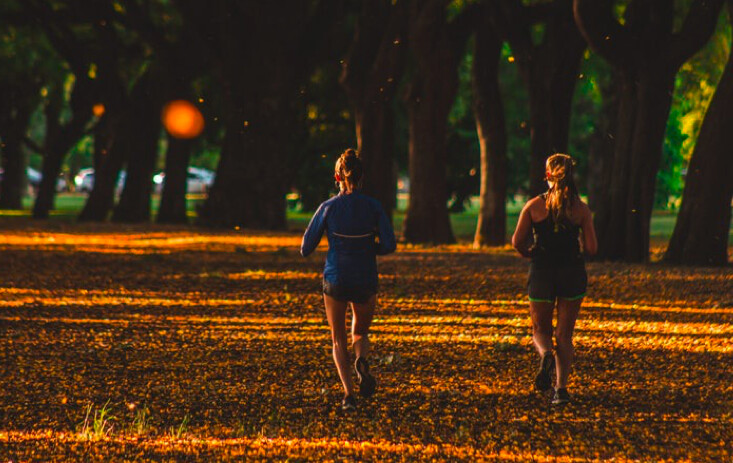
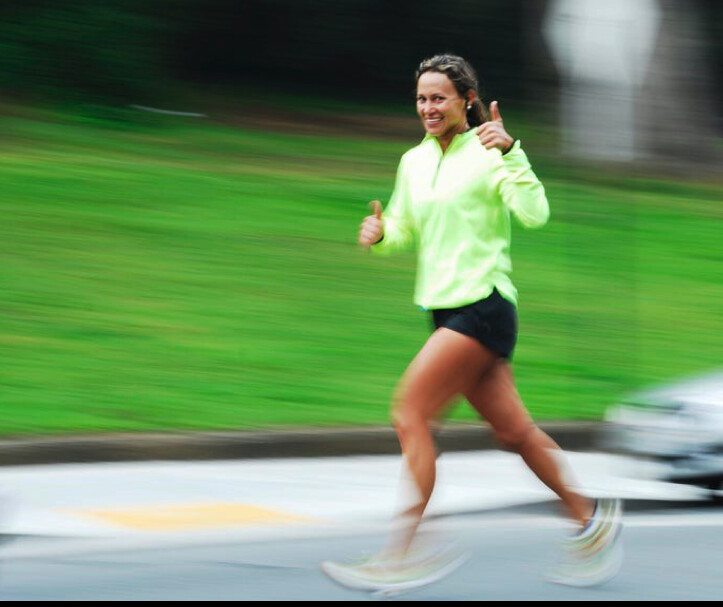
And these questions are the most important ones you will ask in your running career. There are countless stories of athletes who learned to slow down, which kept them healthy, which allowed them to run more, which made them faster.
For example, every runner in Boulder has seen the Japanese Olympic team doing their training camps on the surrounding trails. Most of the time, they are running at a pace similar to a sedated sloth. But sometimes, they are running like antelopes on amphetamines. This polarization of training is necessary for higher volume, which is necessary for training and racing breakthroughs.
The easiest way to pinpoint your everyday pace is through a heart-rate monitor. The classic formula for less experienced runners is 180 minus age as a cap on your heart rate during most runs.
However, that formula is crude and controversial. (It'll be too fast for elites and experienced runners, and sometimes too slow for people just getting started). Most of us use perceived exertion to determine our running speeds anyway.
So for most of us, running easy and slowly enough is a mystery. Here are five tips to make sure you run slow enough on your easy days.
1. Run conversationally with friends
If you can hold a conversation about your latest Netflix obsession without gasping for air, then you are probably running easy enough. My rule is three complete sentences at a time.
2. Run conversationally with your dog
Dog jogs are a great way to control speed. Also, the biggest advantage of all-dogs can't talk about human politics!
3. Do the breath test
If you don't have a friend or a dog, you would make a good main character in a sad country song. But there is still a way to see if your breathing is controlled.
I am a solo runner, and I use the breath test. If I can hold my breath for five steps mid-run without changing my pace, then I know my heart rate is controlled enough.
4. Make photography your workout
As runners, we get a unique perspective on the world that most people never even think about. Use that perspective to take photos!
Try to take one photo each run and post it on your social media. Looking for that perfect photo opportunity will have you relaxed and exploring new places. Stopping to take the photo will ensure you aren't chasing your fastest time or a Strava segment. And posting the photo will help dilute all of the political posts on Facebook. Wins all around!
5. Wear your slow shoes
We all have that one pair of shoes that are rock solid but with limited upside, sitting neglected in the corner. If you put those on, you won't have the urge to hammer an easy run.
Putting it all together, keep most of your runs easy. In general, less experienced runners should only run hard one to two days per week, and more experienced runners can run hard one to three days per week. The rest of the time, try to practice slow running as much as possible.
(06/25/2022) ⚡AMPby Trail Runner Magazine
More Carbs Correlates With Less GI Distress in Runners
Race nutrition is a popular subject of discussion and a frequent source of anxiety for runners. Specifically, anxiety about getting nutrition in and keeping it down. This is because gastrointestinal (GI) distress is a common complaint among endurance athletes, and something that can undo even the best thought out plans and undo months of training.
A recent publication may provide some guidance for those who suffer this common affliction in events. The paper was a collaboration between researchers in the Netherlands, Norway, and the United States and looked at ultramarathon runners participating in a 60K race.

The researchers were interested in determining how frequently athletes complained of GI distress during the event and whether or not the type and amount of nutrition being taken in had any impact on the frequency and severity of those symptoms. In addition, the scientists hypothesized a specific biological premise that leads to GI distress in athletes-and they set out to find evidence to prove or disprove that theory.
This is important because to date there have been many reasons postulated as to why endurance athletes develop GI symptoms but none have ever been shown definitively to be at the root of the issue.
These authors believed that during exercise blood flow is diverted away from the organs of the GI tract and this would result in inflammation and injury that in turn would cause all those symptoms that stop you from being able to take on additional nutrition. They set out to prove this by measuring markers of inflammation taken from the blood of the runners obtained before and after the event, looking for generic markers of inflammation that can be present anywhere in the body and for levels of a marker very specific to the GI tract.

Intestinal fatty acid binding protein or I-FABP is a marker in the blood that shows up in very specific conditions of inflammation and of damage to the organs and tissues of the GI tract. By looking for this specific marker, the authors hoped to show that GI tract injury was occurring and that this was the cause of GI symptoms.
So what did they find?
There were 33 athletes in this study, 28 of whom were male, and nearly three-quarters of them reported experiencing some symptoms of GI distress. This could have been anything from nausea to abdominal pain to diarrhea. While so many experienced symptoms, very few of the athletes reported these as being particularly severe. In fact on a 10-point scale of severity, with 10 being the worst, the average score was only 1.9-so not exactly anywhere near debilitating.
As to the markers of inflammation, blood samples taken before and after the event did show that the non-specific markers of inflammation did rise, but this was true whether or not an athlete suffered GI distress of any kind (this is consistent with previously reported research on inflammatory markers in exercise). I-FABP levels, though, did not increase even in those athletes with the worst GI symptoms. So gut specific injury and inflammation did not appear to be the mechanism that caused these symptoms.
The one thing that was associated with symptoms was the amount of nutrition taken during the event. There was an inverse relationship in this regard. That is to say, those athletes that took the most nutrition, and especially when that nutrition was in the form of carbohydrates, experienced the fewest and least severe symptoms.
The reason for this appeared to be that when carbohydrates were being ingested, this improved blood flow to the gut through various mechanisms and prevented many of the symptoms often associated with low blood flow states.
This study definitely has to be interpreted with a certain degree of caution because it was small and included very few women. Still, the findings are consistent with previously published research-though the specific results related to increased carbohydrate consumption being associated with fewer symptoms is new and of interest.
Despite these limitations, the idea that athletes who take in more nutrition in the form of carbohydrates tend to do better with respect to GI symptoms is an important one. This suggests that athletes who have had issues in the past should consider a race nutrition plan that has them taking in a higher amount of fuel earlier in their event and doing this with carbohydrates as the preferred fuel.
While this study did not confirm the cause of GI symptoms being inflammatory in nature, it did rule it out, and so the search for specific causes of these problem will continue.
(06/25/2022) ⚡AMPby Trail Runner Magazine
Western States 100 Time Predictions Based On Historical Data
The Western States 100 is the Super Bowl of US trail running, just with fewer cryptocurrency commercials. Every year, the race gathers some of the best athletes in the world to test themselves on the world-famous course. The competition, along with comprehensive data gathering by the race organizers, provides a massive statistical opportunity.
Marshall Burke, associate professor of Earth System Science at Stanford University, seized that opportunity with some wonderfully cool data analyses heading into the 2022 race. The research question he sought to answer: how are race times progressing as the sport grows, and how are those times affected by temperature changes?
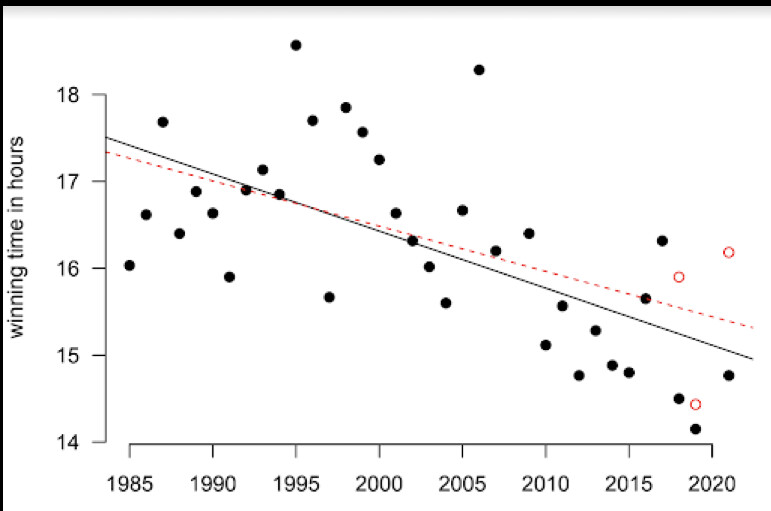
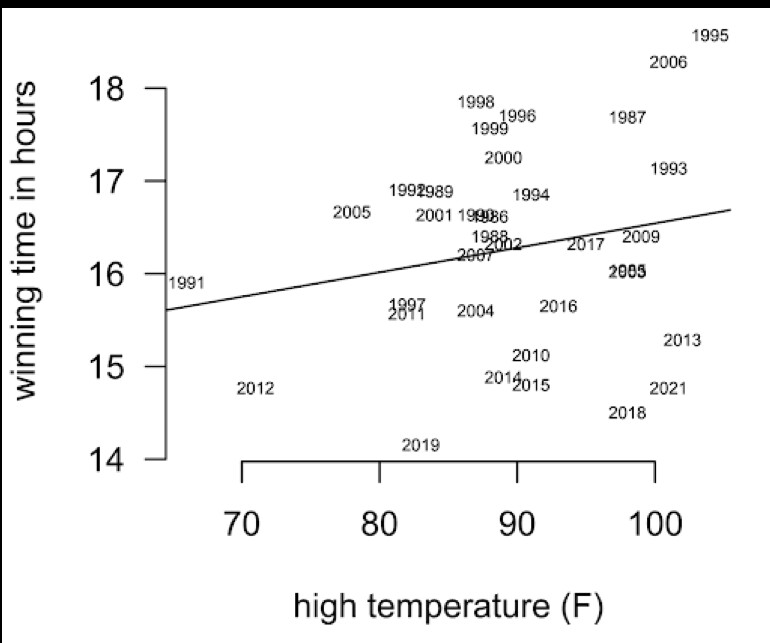
Marshall is a wonderful athlete himself, with an April 2022 Fastest Known Time on the Buffalo River Trail in Arkansas, so he's used to moving fast. In his spare time, between research and Zoom calls, he compiled the data on finishing times and temperatures, controlling for years when there was snow on the course or when the course was altered.
"I may never run Western States," Marshall says. "But I can run statistics on it!"
He's doing world-changing work on climate change at Stanford University, and that made his quest have both a personal and academic interest. "This combines my research focus on the impacts of climate with my hobby of running slowly through the mountains," he says. Since this was a quick analysis for fun (and to help me with coaching; helps to have really, really smart friends), Marshall wants to be clear that the numbers could change. And I want to be clear that any errors are the fault of the field of Statistics for being the worst.
Let's all run fast through some of the fascinating data he gathered!Finding #1: Times of top finishers have progressed rapidly.
Since 2000, a linear model of top times for men and women shows bonkers improvement. Bonkers is a scientific term; you'd know it if you, like me, took an Intro To Stats class in 2004. The male winner is about 2 hours faster on average, with the same general improvement for the average of places 2 through 5. The female winners are around 1 hour faster, with places 2 through 5 improving more than 2 hours.When not accounting for temperature, times would be expected to drop considerably each year-around 4 minutes per year for men since the 1980s, and about 4:45 per year for women. Interestingly, the women's top 5 times are coming down faster than the winning time, showing a tighter race at the front.
I asked Marshall to run the men's times with Jim Walmsley being removed. Want to see a cool chart of just how much of an outlier he is? Taking out Jim's winning times moved the linear regression substantially, with the new red line predicting substantially slower times overall. And if he didn't get lost in 2016, the effect would be even more pronounced! You know you're a good runner when you mess up the statistics.
Finding #2: For all finishers, men are improving gradually, while women are improving rapidly.
Since 2000, the average women's finish time has improved by 5 minutes and 15 seconds per year! Meanwhile, the average finisher independent of gender has only improved around 2 minutes per year. So women are driving the sport forward in an emphatic way! Bosses!
Finding #3: Heat has a massive performance impact.
Let's start with a simple scatterplot of heat versus winning time.There is clearly a ton of variation in the scatter. Heat is not destiny. But there is some clear relationship, so maybe it's destiny's child. If you go too hard on a hot day, the body has to pay the bills bills bills later.
Marshall ran multiple regression analyses to combine the effects of overall time improvements with heat increases to give us a more sophisticated analysis, again also controlling for whether there was snow on the course. He is so damn sophisticated! Using times since 2000, the general rule is that for every 1 degree F increase in temperature in Auburn, California on race day, there is a 2:48 increase in winning time for men and a 2:52 increase for women. Removing Jim's times (Mr. Mess-Up-Your-Stats), there is a 3:26 increase for men for every degree increase.
For the average finisher using the same regression analysis, 1 degree F increases correspond with 2:34 increases in finishing times. DNFs go up about 0.5% for every 1 degree F increase as well. The ratio of times for men and women is not significantly impacted by temperature, so even though the hot year in 2021 saw women absolutely rock the list of top finishers, that may not be explained by heat in the way that everyone assumed.Finding #4: Predictions for 2022
The forecast from Weather Underground is currently 97 degrees F on race day in Auburn, relative to an average of 89. Combining the heat data with the overall improvement in times as the sport progresses, here are the predictions from Marshall's model, again based on data from the last 20 years.
For the male winner, it depends heavily on whether we remove Jim from the data. Assuming Jim is a true outlier, we can expect a winning time around 15 hours. For women, it's 17.5 hours. For the average racer, times should be around a half hour slower than normal, but that is affected by a higher DNF rate, so I'd suggest athletes build in much more buffer.
The trend in the 10th place times is most instructive to me, as a coach that is trying to help support athletes getting an invitation to next year's race. Those 10th place times have come down by massive margins over time, 9:22 for men and 12:50 for women. But the times are also more affected by the heat relative to the top 5 finishers. Put it all together, and the model predicts that 20 hours will place in the top-10 for women, and around 17 hours for men.
My personal prediction will be for fast winning times, but a greater spread after that, with the 10th place man and woman being around 30 minutes slower than predicted. The faster times as the sport progresses will not follow a linear model eventually, and my guess is that we are starting to approach an asymptote. To paraphrase Mark Twain, there are lies, damn lies, Statistics, and a running coach pulling wild guesses out of his butt.
Three Big Conclusions
Respect the heat, but don't respect it too much.
It's good to have brilliant friends like Marshall when you're looking for a possible coaching advantage.
Finally, Jim Walmsley breaks statistics.
(06/25/2022) ⚡AMPby trail Runner Magazine
50 Years After Title IX: The landmark legislation has had a profound impact on gender equality but it hasn’t fixed everything
It’s been a year of celebration for women in sports, but particularly for women in running. We honored the first women to officially enter the Boston Marathon 50 years ago. We marked the 50th anniversary of the Mini 10K in Central Park this summer— “the world’s original all-women’s road race.” It’s also been 50 years since the “six who sat” protested at the starting line of the New York City Marathon, fighting for the right to compete in the same race as the men.
But perhaps the biggest anniversary of all is 50 years of Title IX, the bill that in 37 succinct words changed everything:
“No person in the United State shall, on the basis of sex, be excluded from participation in, be denied the benefits of, or be subjected to other discrimination under any education program or activity receiving federal financial assistance.”
A half century ago, on June 23, 1972, President Richard Nixon signed the civil rights legislation into law, and the effects have rippled ever since. It altered education significantly across the country, barring sex discrimination in schools, creating opportunities in sports, and, ultimately, allowing women to enter careers that were once completely dominated by men.
It seems unfathomable to today’s youth that, not long ago, these were not guaranteed rights. At the same time, Title IX has been far from perfect in its execution and its results. It continues to leave people of color and those of lower socio-economic status behind. The inclusion of transgender rights under the law is still under review as a dozen states seek to ban transgender women and girls from participating in women and girls’ sports. Today, 75 percent of high school boys participate in sports compared to 60 percent of girls. Women make up 44 percent of all NCAA athletes (compared to 13 percent before 1972), but still have 60,000 fewer athletic opportunities than men, according to the NCAA.
“The biggest lasting legacy of Title IX has been the understanding that it’s a civil right to be able to participate in school sports, because there’s education in getting to use your body to achieve various goals, working as a team, pushing yourself, testing your limits,” says Victoria Jackson, a sports historian and assistant professor at Arizona State University and the 2006 NCAA 10,000-meter champion. “That is pretty radical and has resulted in all sorts of consequences beyond the world of school sports, for individuals and for society. That’s really important.”
Title IX is a story of many chapters—continually revised politically, judicially, and culturally. In order to strengthen and sustain it, the law will always need guardians and defenders. In the middle of this year-long commemoration, for example, the Supreme Court is poised to overturn another 50-year-old ruling, Roe v. Wade, a decision that will strip women of their reproductive rights and ban abortions in several states—a devastating blow to the progress women have made in attaining education and achieving career advancement as a result of the ability to choose when and if they become pregnant.
“We want to celebrate the wins, as we are doing with Title IX, but we also want to be aware that the fight is not over,” said Nicole LaVoi, director of the Tucker Center for Research on Girls & Women in Sport, during the espnW Power Summit in May. “A lot of gains have been made. And there’s a lot of work still left to do.”
It’s impossible to adequately capture the scope and reach of 50 years of Title IX in a single swoop (we’ve got a comprehensive timeline here), but the milestone deserves reflection. Female runners and track and field athletes have always been on the forefront of pushing change. Whether they realized it or not, during the decades leading to the law, the simple act of showing up and running when their presence wasn’t welcomed or recommended was an act of advocacy that pushed the movement forward. Here are four reflections on Title IX honoring its past, present, and future.
(06/24/2022) ⚡AMPby Erin Strout Women’s Running
Nike will fully shut down operations in Russia, joining other international companies that have withdrawn from the country after its brutal invasion of Ukraine
Nike Inc. suspended operations three months ago at all of its company-owned and operated stores in Russia but like other major corporations, has attempted to avoid exposing employees to hardship during a complete withdrawal.
The Russian newspaper Vedomosti reported last month that Nike had ended its relationship with Inventive Retail Group, its largest franchisee in the country.
"Our priority is to ensure we are fully supporting our employees while we responsibly scale down our operations over the coming months,” the sports apparel maker said Thursday.

(Second photo: one of many images of the war Russia has waged against Ukraine.)
Nike, like many recognizable Western brands, was swift to repudiate Russia over the war in Ukraine. However, it was among a small minority of companies—including Burger King, the Marriott hotel group and British supermarket Marks and Spencer—that struggled to completely extricate themselves from the Russian market due to complex franchise agreements.
Three months since Moscow launched the invasion, more companies are transitioning from suspending their Russian operations to leaving the country entirely, including two iconic American brands, McDonald’s and Starbucks, and French carmaker Renault.
Russian President Vladimir Putin has threatened to fight back against companies suspending operations or leaving the country and said he will nationalize their assets. Renault marks the first major nationalization of a Western company’s assets after handing its factory over to the city of Moscow, reportedly for a nominal sum of one ruble.
(06/23/2022) ⚡AMPSouth African runner takes on three triathlons in three countries in six days – all to help feed hungry children in Africa
South African runner, Rehan Greeff, will take on the biggest sporting challenge of his life from 27 June as he attempts to complete three full triathlons in three countries in just six days and all for a worthy cause – to feed hungry children in Africa.
Greeff, a chartered accountant now living in the United Kingdom, is the biggest individual fundraiser for the non-governmental organisation ForAfrika (previously known as JAM). For the past few years, he has set himself personal quests under the title of "Run Forest Run" – a nod to his childhood nickname, which he was given because he had to wear metal leg braces just like the film character Forrest Gump.

After what he can only call "miraculous healing" of his knee injuries during a church service in 2017, he decided to give thanks by taking on these quests in support of vulnerable children. In 2021, he raised a whopping £50,000 (almost R1 000 000) on his mission to run the equivalent of seven marathons in one go; the furthest he had ever run.
He completed his 300km run around Greater London in aid of the organisation's #zerohunger campaign in 49 hours and 17 minutes and set a new record for the route in the process.

He challenged (and trained) about 60 others to join him in running the furthest they had ever run too, be that 10km, 100km or anything in between.
"That was inspirational! That brings hope ... when people pull together with a vision to impact thousands. That takes commitment, sacrifice and intentionality," Greeff said.
This year, he is taking it all a huge step further – his "Tri-Challenge" with a total distance of 678km in one week in South Africa, Uganda and the UK. He chose these countries because he was born in South Africa where malnutrition rates are on the rise; Uganda because ForAfrika is working with refugees there whose lives have been devastated by war and climate change; and England, because it's his new home.
A full triathlon is made up of a 3.8km swim, a 180km cycle and a 42.2km run. Greeff will complete three bespoke routes in Cape Town (South Africa) on 27 June, Kisoro (Uganda) on 29 June and London (UK) on 2 July 2022.
"The swimming and cycling will be new for me," he says, before calling on people all over the world to join him and help raise funds for hungry children in Africa.
His target this year is also bigger than last year's at £100,000.
It costs just £5 a month to feed a child. So, if Rehan reaches his goal he will be able to ensure that 1,667 children receive a highly nutritious meal each school day during the year.
Do you want to help? Are you ready to #RunForAfrika? Head on over to runforafrika.funraise.org or runforestrun.run for more information.
(06/23/2022) ⚡AMPThe 2023 Tokyo Marathon will be run at full capacity of 37,500 runners
In March 2022, we came together to hold the first in-person Tokyo Marathon in two years, with the slogan "The Day We Unite." Now, runners, volunteers, spectators and supporters all have their eyes set on the event's next theme, "ONE STEP AHEAD."This design symbolizes how each and every person enthusiastically advances step by step, in their own unique way.
The Tokyo Marathon is also steadily moving forward to provide people with the joy of running and what lies beyond it.
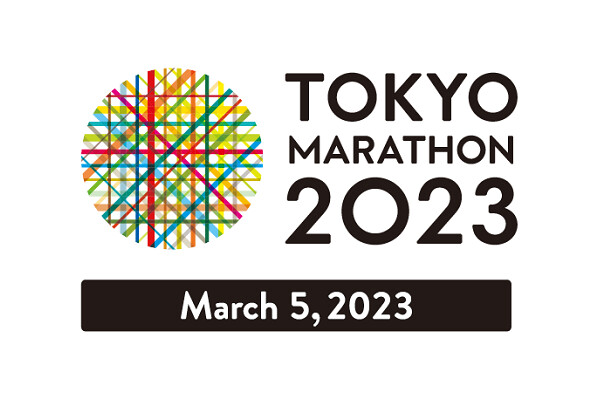
As they move forward, organizers of the Tokyo Marathon said today that the 2023 edition would be held Sunday, 5 March, at full capacity of 37,500 runners. Here is the official information as posted on their website.
Cut-off Times & Start Times
Marathon: 7 hours (9:10 a.m. - 4:10 p.m.) *The time limit will be based on the starting gun of the first wave.

Wheelchair: 2 hours and 10 minutes (9:05 a.m)
Marathon start time: 9:10 a.m. (Wave Start) Runners who fail to pass through the checkpoint before the cut-off time will be removed from the race. Furthermore, runners who lag excessively behind the cut-off time pace may be stopped to leave the course at anytime.
Eligibility
Those who fulfill the following conditions, and whose participation is approved by the organizer (including those who deferred their entry to the 2023 event):
1) Marathon: Must be at least 19 years of age on the race day.
1-1) General
- Runners who are capable of completing the race within 6 hours and 30 minutes.
1-2) Semi-Elite Athletes
- Athletes who satisfy the requirements set forth by the "RUN as ONE - Tokyo Marathon 2023".
1-3) Elite Athletes
- Athletes, registered with the JAAF in fiscal 2021 who satisfy the special requirements set forth by the JAAF.
- Invited Athletes: National and international runners nominated by the organizer and/or the JAAF.
Event Fee
1) Marathon: Japan residents - 23,300 JPY (from overseas - 25,300 JPY)
2) 10.7km Race: Japan residents - 12,400 JPY (from overseas - 13,500 JPY)
* Entry, Covid testing, event fee refund insurance, handling and tax included.
* As part of the COVID-19 countermeasures, pre-race testing is planned to be conducted. However, if the testing doesn't take place due to any changes in countermeasures planned in accordance with the laws on infectious diseases, the event fee will be partially refunded.
How to Enter: Register online
Entry Period: Registration will open on August 1, 2022 (Mon)
* The registration period may differ depending on the eligibility group.
* Selection will be made by random drawing if the entry exceeds the field size.
* Donation and Charity Runner applications open from July 11 (Mon).
(06/23/2022) ⚡AMPTokyo Marathon
The Tokyo Marathon is a world-renowned annual marathon held in Tokyo, Japan. As one of the prestigious Abbott World Marathon Majors, it attracts elite and amateur runners from around the globe. The race holds World Athletics Platinum Label status, recognizing its high competitive standards, top-tier organization, and international appeal. Sponsored by Tokyo Metro, the Tokyo Marathon has grown into one...
more...Dalilah Muhammad among Olympic gold medalists to miss USATF Outdoor Champs
Rio Olympic 400m hurdles champion Dalilah Muhammad will miss this week’s USA Track and Field Outdoor Championships due to a hamstring injury.
She received a waiver from USATF to accept her bye into July’s world championships as a defending world champion. Usually, reigning world and Diamond League season champions with byes into worlds still have to compete in at least one round of nationals.
Muhammad, who took silver to Sydney McLaughlin in Tokyo in the second-fastest time in history, last raced May 21 and withdrew before a planned race June 12. She and McLaughlin last went head-to-head in Tokyo.
McLaughlin is entered at USATF Outdoors, where a top-three finish will clinch a spot at worlds. At the last worlds in 2019, McLaughlin took silver behind Muhammad.
(06/23/2022) ⚡AMPESPN and WCVB has signed a deal with the Boston Athletics Association to provide exclusive year-round coverage for all their events including the Marathon
The Boston Athletic Association (B.A.A.) announced today that ESPN and WCVB Channel 5 will serve as the exclusive national and local broadcast partners, respectively, for the Boston Marathon beginning in 2023. WCVB will also provide exclusive year-round coverage for all B.A.A. events including the B.A.A. 5K, B.A.A. 10K, and B.A.A. Half Marathon.
“We’re honored to partner with ESPN and WCVB Channel 5, respected market leaders who bring a spirit of innovation and thoughtful storytelling that will propel the mission of the B.A.A. and legacy of the world’s oldest annual marathon forward,” said Jack Fleming, acting Chief Executive Officer of the B.A.A. “Both have established a tradition of broadcasting world-class athletic events, and we are excited to build on this tradition together into the future.”
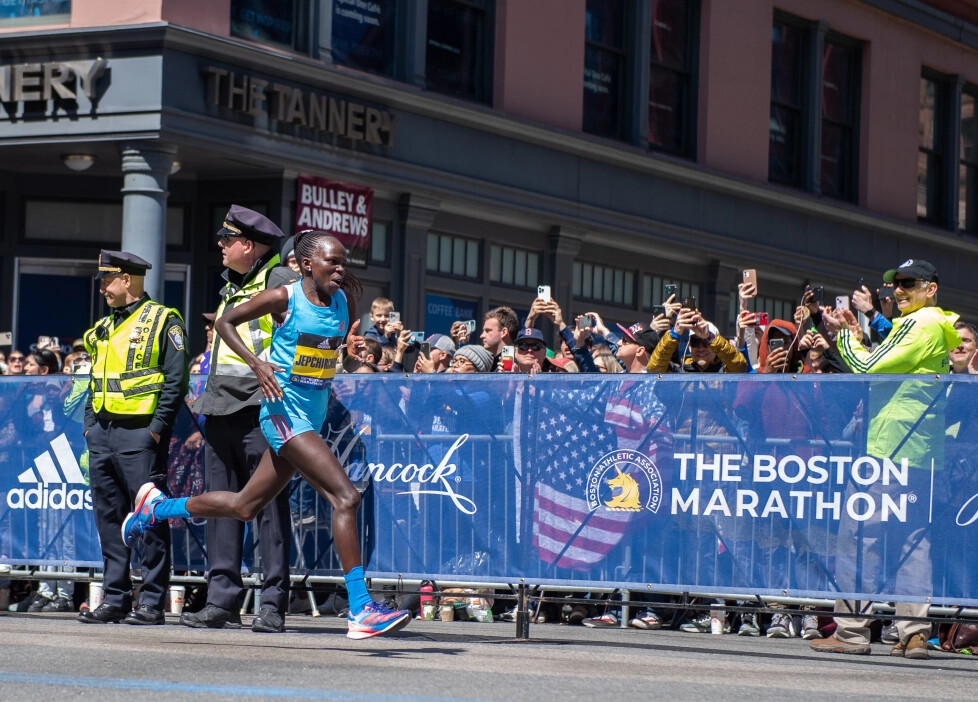
“The Boston Marathon is one of the world’s most recognizable and best-known sporting events and we’re proud to be able to bring it to ESPN viewers for years to come,” said Burke Magnus, President, Programming and Original Content, for ESPN. “We look forward to working with the B.A.A. and WCVB to present the stories and athletic achievements of this classic race.”
“The B.A.A. and the Boston Marathon are esteemed around the world and beloved by our community, and to be launching this exclusive partnership as WCVB marks 50 years in broadcasting and service to the community is especially fitting,” said Kyle I. Grimes, WCVB Channel 5 President and General Manager. “WCVB has a proud history of covering the market’s marquee events, and the Boston Marathon is the perfect addition to Channel 5’s signature, local programming. We also look forward to working with the B.A.A. year-round to highlight their many other athletic events as well as the great work they do in the community.”
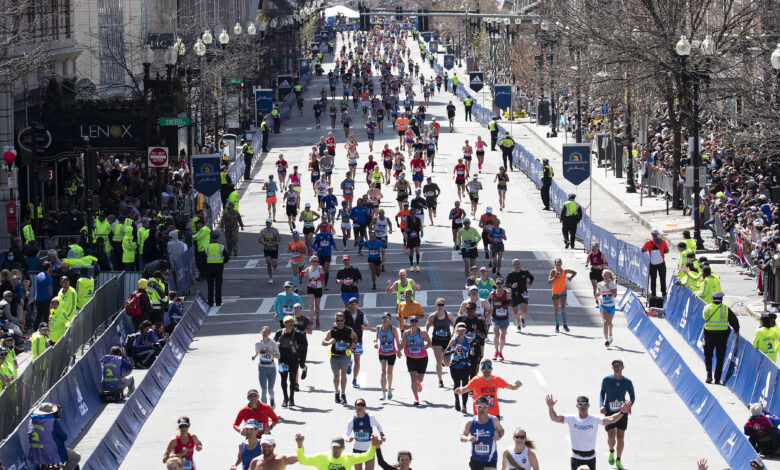
ESPN will broadcast the 127th Boston Marathon, scheduled to take place on Monday, April 17, 2023, on its flagship channel from 8:30 a.m. ET until 1:00 p.m. ET. In addition, ESPN will also have coverage of the race within SportsCenter before the live coverage and later in the day, as well as coverage appearing on other ESPN shows and platforms.
Live coverage of the Boston Marathon will air on WCVB beginning at 4:00 a.m. ET through 8:00 p.m. ET. The race will be exclusively simulcast regionally on WCVB Channel 5’s Hearst Television owned sister-stations WMUR (Manchester, NH), WMTW (Portland/Auburn, ME), and WPTZ (Burlington, VT/Plattsburgh, NY). WCVB and all of its television partners will provide coverage of the marathon on their digital platforms and mobile apps. The Boston Marathon will also be live streamed on Very Local Boston, and the streaming platform will host year-round content featuring the B.A.A. WCVB will also serve as the first-ever exclusive broadcast partner for the B.A.A.’s Distance Medley races and will provide year-round coverage of the B.A.A. and its races, with a focus on the Boston Marathon.
The partnership marks the return of the Boston Marathon to both ESPN and WCVB, with ESPN having aired the world’s most prestigious road race in the early 1980’s and then from 1997-2004. WCVB provided wire-to-wire coverage of the marathon from 1982 through 2006, including the largest Boston Marathon in history—the centennial Boston Marathon in 1996 featured 35,868 finishers.
(06/23/2022) ⚡AMPBoston Marathon
Among the nation’s oldest athletic clubs, the B.A.A. was established in 1887, and, in 1896, more than half of the U.S. Olympic Team at the first modern games was composed of B.A.A. club members. The Olympic Games provided the inspiration for the first Boston Marathon, which culminated the B.A.A. Games on April 19, 1897. John J. McDermott emerged from a...
more...Sinclaire Johnson confident heading into USA Track & Field Outdoor Championships
As Sinclaire Johnson made her way to the starting line for the women’s 1,500 meters at the Prefontaine Classic last month in Eugene, she took a moment to take in her competitors.
Eight of them ran in the 1,500 final at the Summer Olympics in Tokyo last year. Now, she had the opportunity to show she belongs among them.
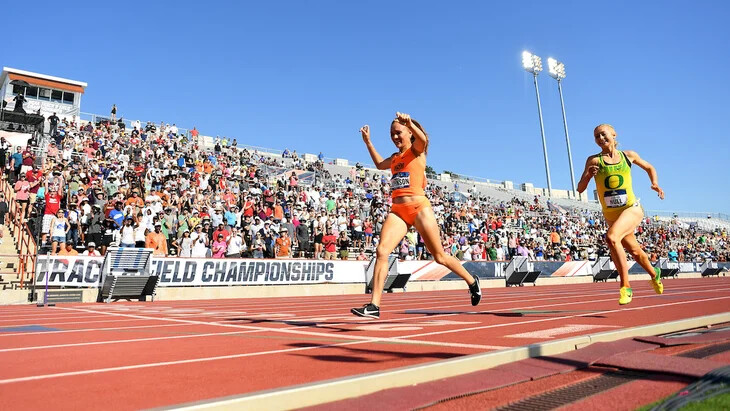
No thoughts about Johnson’s final time crossed her mind throughout the race. They never do. She’s too focused on her pace and beating those around her, and she rode that mindset to a fourth-place finish, beating six of those Tokyo Olympians.
“I felt like I had finally stepped into that pool of competing on that world-class level,” Johnson said this week.
Running a sub four-minute race was always Johnson’s goal heading into the meet. When she had the time to think about her official time, she saw it read 3 minutes, 58.85 seconds, a new personal record. It’s a far cry from where she was nine months ago, when she could train only in pools or the gym while dreaming of getting back to running.
Johnson joined Bowerman Track Club following her college career at Oklahoma State University, where she won a national title in the 1,500 as a junior in 2019. She made the switch to coach Pete Julian’s Portland-based Union Athletics Club last August.
That’s when the pain started.
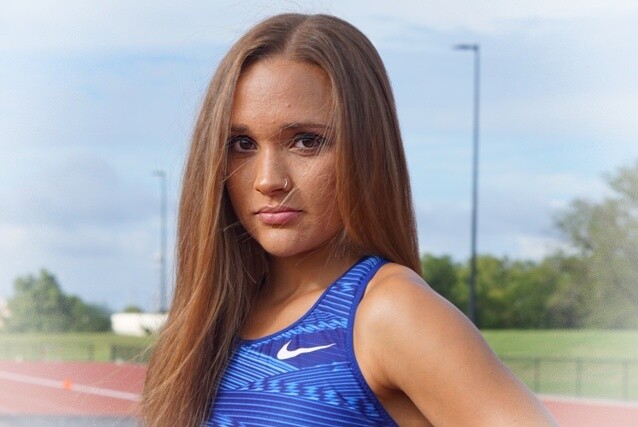
It began as persistent pain in her hip following a workout early in the week. She couldn’t walk by Saturday, and an ensuing MRI showed a small tear in her labrum. Such tears typically can be corrected only through surgery, but this tear was small enough to not require an operation.
Johnson resumed training with caution, but she was still in pain that wasn’t getting better. Another MRI a month later showed something new: a stress fracture. So Johnson’s time with Union Athletics Club began in earnest while she was in recovery.
Running wasn’t an option, so Johnson instead spent time in the gym strengthening the muscles surrounding her hip and pool exercises to reduce the stress on her body. The process of getting Johnson back into competitive shape was slow and cautious, Julian said, but she was finally able to start running again in November.
“Every week just kept getting better and better,” Johnson said. “I just kept shocking myself with what I could do.”
Julian and Dave McHenry, Union Athletics Club’s strength coach, were with her every step of the way, Johnson said. This included daily check-ins on Johnson’s physical and mental health, scheduling appointments with doctors and breaking down how to get her back to training.
“She’s been able to just continue to progress honestly, just with more training load,” Julian said.
When it wasn’t her coaches reaching out with support, it was her new teammates. Jessica Hull, a former track athlete at the University of Oregon, met Johnson as a competitor when the two were running in college.
Hull was right behind Johnson when the latter won the NCAA title in 2019. It was a flip of the preliminary round earlier that day, when Hull took first and Johnson claimed second.
“We both knew at that point, we couldn’t have done it without each other, pushing each other,” Hull said.
Not only has Hull been training alongside Johnson at Union Athletics Club, she was also one of the eight Olympians running with her at the Prefontaine Classic. The two aren’t competitive with each other now that they’re on a team, Hull said.
Heading into the USA Track & Field Outdoor Championships this week, Hull said she’s looking forward to seeing Johnson’s training pay off.
“Watching her race at USA is gonna feel like my heart is out there with her,” said Hull, who competes for Australia.
Messages from coaches and teammates were important, but Johnson’s ultimate confidence boost came from herself. Slowly, but surely, she worked through the outdoor season to go from hanging on in races to competing to win.
That top-four finish in the Prefontaine Classic against some of the same competition she’ll see in the 1,500 this week proved to Johnson that she can earn a spot on Team USA for the World Athletics Championships next month.
“Not only do I want to make a team,” Johnson said, “I believe that I can make a team.”
(06/22/2022) ⚡AMPby Luke Norton (Oregon Live)
USATF Outdoor Championships
With an eye toward continuing the historic athletic success of 2022, USATF is pleased to announce competitive opportunities for its athletes to secure qualifying marks and prize money, including a new Grand Prix series, as they prepare for the 2023 World Athletics Championships in Budapest, Hungary.As announced a few months ago, the 2023 Indoor Championships in Nanjing, China have been...
more...The integrity of women’s sport is really important here, and we can not have a generation of young girls thinking there is not a future for them in the sport says Sebastian Coe
World Athletics president Sebastian Coe has stated that the global athletics governing body will look at their rules concerning the inclusion of transgender athletes in female events at a Council meeting toward the end of this year.
This statement comes days after the International Swimming Federation (FINA), swimming’s governing body, voted to stop trans female athletes from competing in women’s elite races if they have gone through any part of the gender transformation process after puberty or age 12. FINA also stated that they will establish an open category in some events for swimmers whose gender identity is different than their birth sex.
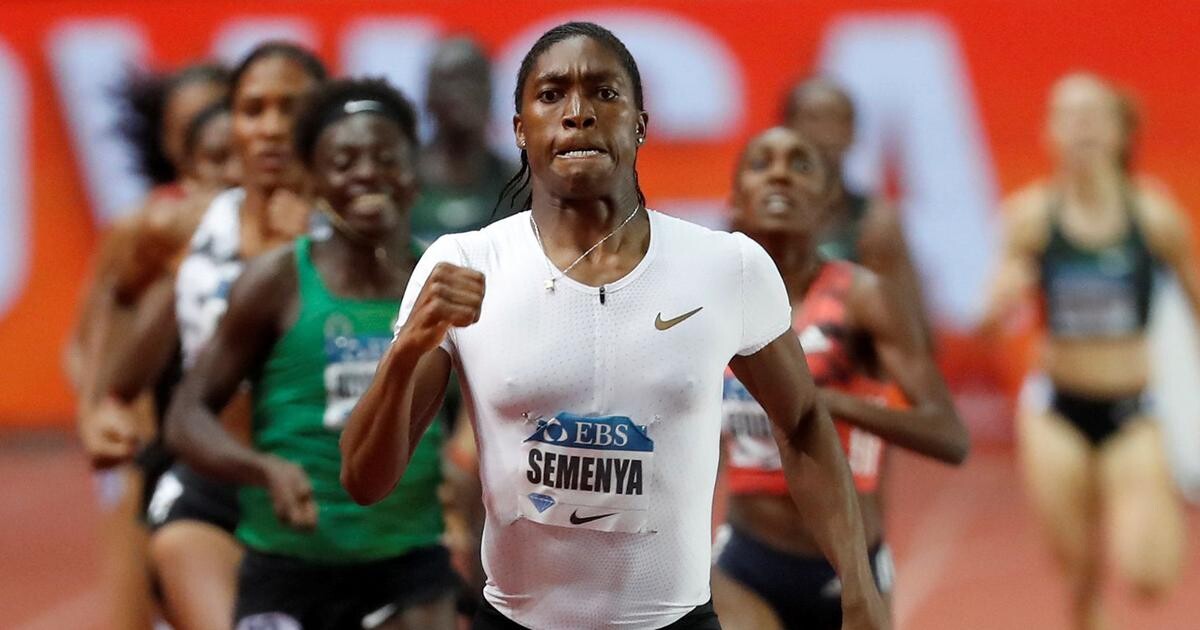
(Photo - Caster Semenya is a woman and a man. The South African champ has no womb or ovaries and her testosterone levels are more than three times higher than those of a normal female, according to reports.)
Transgender rights have become a major talking point in sports in an effort to balance inclusivity with ensuring they do not have an unfair advantage arising from the residual effects of puberty.
The debate intensified this year after University of Pennsylvania swimmer Lia Thomas became the first transgender NCAA champion in history, winning the women’s 500-yard freestyle.
In an interview with BBC Sport, Coe, a two-time Olympic 800m champion, outlined his support for the recent measures taken by FINA.
“The integrity of women’s sport is really, really important here, and we can’t have a generation of young girls thinking there is not a future for them in the sport. So we have a responsibility…maintaining the primacy and the integrity of female competition is absolutely vital, and that’s why we were at the forefront of tabling those regulations that allow as close as you can get to a level playing field,” says Coe.

Coe on FINA’s ruling:
“This is as it should be. We have always believed that biology trumps gender and we will continue to review our regulations in line with this. We will follow the science.”
FINA’s new guideline means that Thomas, who has expressed a desire to compete for Team U.S.A. at the Paris Olympics, is now blocked from participating in the women’s category at the Games. There have been talks to establish an “open” category at world championships for athletes whose gender identity is different than their assigned gender at birth.
The current World Athletics guideline from 2018 states that transgender women can compete in the women’s category if they reduce their testosterone levels to below five nanomoles per litre for at least 12 months before competing.
“We continue to study, research and contribute to the growing body of evidence that testosterone is a key determinant in performance, and have scheduled a discussion on our regulations with our council at the end of the year,” says Coe.
International sports federations may set their own policies but will be subject to World Athletics and IOC rules when it comes to sending athletes to the World Championships and Olympic Games.
(06/22/2022) ⚡AMPby Running Magazine
Hungary’s government has allocated more than €550m (582US) towards the construction of the Budapest stadium that will host the 2023 World Athletics Championships.
Documents published by the government show that HUF 204bn (€556.5bn) of public funds have been made available for the National Athletics Centre – which will have an initial capacity of 40,000 for the 2023 championships before being reduced to 15,000 – and its surrounding infrastructure.
That makes the facility some €40m more expensive than the much larger 67,000-capacity Puskás Aréna national football stadium that was recently opened in Budapest. It is also considerably more than initial estimates of €310m for the build.

The government has budgeted for the development of the National Athletics Centre on what is currently a brown field site by the Danube River. The cost includes the stadium, adjacent buildings, landscaping, and flood protective infrastructure, in addition to a pedestrian and cycling bridge.
The government calculates that the organisation of the 2023 World Athletics Championships will amount to €81.8m, but expects income from the event to far surpass this sum with 166,000 visitors and 416,000 ticket sales predicted.
Following the event, the stadium would be reduced in size and become a training hub for Hungarian athletics and a competition venue.
Once the temporary upper tier is removed, the stadium would be left with a circular plateau, expected to be filled with publicly available leisure areas, including a running track.
The development of the stadium is seen as important for Hungary’s long-term goal of hosting the Olympic Games. Budapest was involved in the bidding process for the 2024 Games, but is believed to be looking as far ahead as 2040 for its chance.
Budapest was awarded the 2023 championships in 2018 after a decision in Monaco. Central and local authorities agreed to support the construction of the stadium last year.
Organisers said in 2018: “The 15,000-seat facility will give a major boost not only to competitive sports, but also to recreational and youth sports. Budapest residents and students will find training tracks, running tracks, street workouts and many other opportunities for sports and recreation.”
(06/22/2022) ⚡AMPCompetition decisions on qualification for future championship events
The World Athletics Council has approved the following decisions on future qualification systems for championship events and for the future rotation of the World Athletics Relays.
Entry standards and world rankings
The Council has approved the continuation of the current qualification system structure for World Athletics Championships and Olympic Games.
Therefore, the target 50/50 split of athletes qualified through entry standards and the world rankings, which was used for the Olympic Games in Tokyo and is in use for the World Athletics Championships Oregon22, will remain in use for the 2023 World Athletics Championships in Budapest and the 2024 Olympic Games in Paris.
The Council plans to review the world rankings system later this year, and subsequently approve the scoring system for 2023.

Marathon qualification system for Paris
To enable early selection, as well as national trials, for the Olympic Games marathon in Paris, the Council has approved a two-step procedure for the Olympic marathon qualification system.
On 6 February 2024, any athlete
1. having achieved the entry standard (to be confirmed at a later Council session) or
2. ranked higher than the 65th athlete on the filtered (three athletes per national Olympic committee) ‘Road to Paris’ list
will be considered qualified and eligible for immediate selection.
In addition, the Council also approved a quota reallocation option in the marathon only. Any national Olympic committee may choose to reallocate a quota place to an unqualified athlete, provided the athlete has achieved at least a 2:11:30 (men) or 2:29:30 (women) eligibility performance within the qualification window.
The entry standards for the marathon will be approved by the Council at a later meeting.
Future rotation of World Athletics Relays
Since 2015, the World Athletics Relays has been a biennial event, taking place in odd years to serve as a World Athletics Championships qualifying event in the championship disciplines as well as offering race opportunities in the less traditional events such as the shuttle hurdles relays and the 2x2x400m mixed team relay.
Having evaluated recent editions, the Council has decided to change the future scheduling of this event to an even-year rotation, starting in 2024. The event will serve as the trials in Olympic years, with the Council to approve a detailed format of the event at the next Council meeting in July.
Inclusion of 5km/10km in 5000m/10,000m qualification systems for Budapest and Paris
Acknowledging the popularity and performance level of the 5km and 10km road events, the Council has decided that both disciplines will be included in the qualification system for the 5000m and 10,000m respectively at future championships.
Therefore, it will be possible to qualify for the 5000m and the 10,000m at eligible road events, and results achieved in the road events will count towards the world rankings in the 5000m and 10,000m.
Inclusion of cross country rankings in qualification systems for Budapest and Paris
Following the launch of the World Athletics Cross Country Tour as well as the cross country rankings, the Council has decided to modify the cross country qualification pathway for the 10,000m at future championships.
The top 15 men and women in the World Cross Country Championships 2019 were automatically qualified in the 10,000m for the 2019 World Athletics Championships in Doha. Following the latest decision made by the Council, this will be replaced by a new pathway.
Starting with the World Athletics Championships Budapest 23, the top eight men and top eight women in the cross country rankings, who are not already qualified via entry standard or world 10,000m ranking, will be automatically qualified.
Entry standards in the 10,000m for Budapest will be approved by the Council in July this year.
(06/22/2022) ⚡AMPby World Athletics
World Athletics Championships Budapest23
Budapest is a true capital of sports, which is one of the reasons why the World Athletics Championships Budapest 2023 is in the right place here. Here are some of the most important world athletics events and venues where we have witnessed moments of sporting history. Throughout the 125-year history of Hungarian athletics, the country and Budapest have hosted numerous...
more...Woody Kincaid eyes redemption at USA Track & Field Outdoor Championships
Woody Kincaid’s last visit to Hayward Field didn’t go as planned.
So, Kincaid has something extra riding on the USA Track & Field Outdoor Championships, which begin a four-day run at Hayward Field in Eugene on Thursday.

The USATF 10,000-meter final took place at Hayward last month in conjunction with the Prefontaine Classic. Kincaid, the Olympian who trains with the Portland-based Bowerman Track Club, was defending his USATF title.
It was a slow pace and headed toward a kicker’s finish -- Kincaid’s kind race -- when a sharp pain in his side almost doubled him over 6,600 meters in.
Buchanan, who would finish ninth, trains with the California-based Mammoth Track Club. The two UP grads weren’t working together. It just … happened.
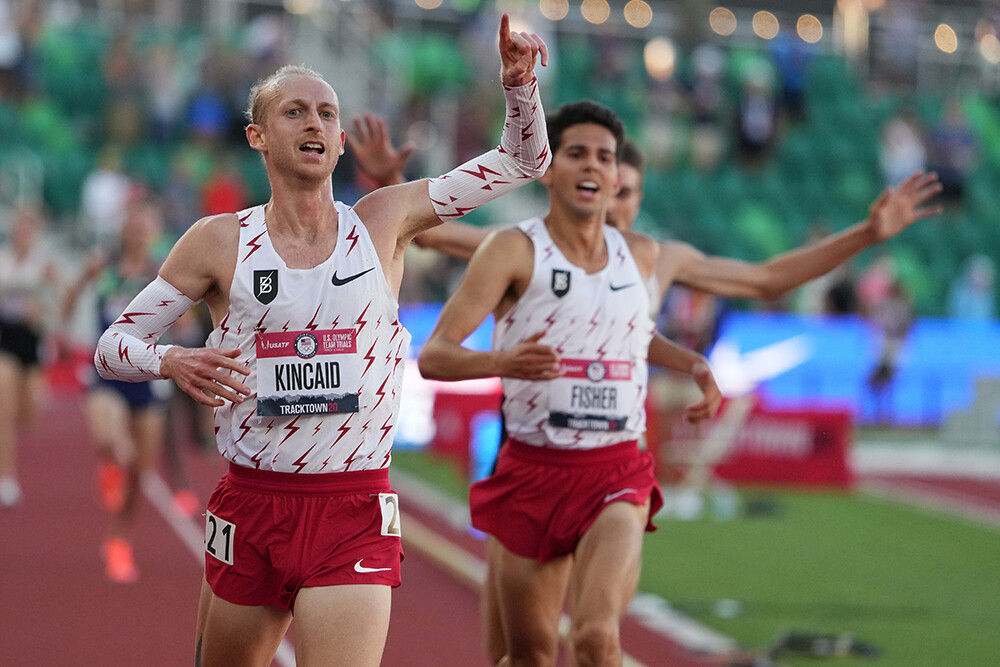
(First photo): Woody Kincaid and Grant Fisher react after finishing first and second place in the men's 10,000 meters during Day 1 of the 2020 U.S. Olympic Track & Field Team Trials at Hayward Field on June 18, 2021, in Eugene, Oregon.
Kincaid remembers thinking, “‘Damn. That’s Reid Buchanan. And this is the Olympic trials.’ It was pretty surreal.”
In the final lap, it became outrageous. Kincaid covered the final 400 in 53.47 seconds, the final 200 in 25.51.
“A lot of people can’t do that,” says UP coach Rob Conner, who nurtured Kincaid through five up-and-down, injury-troubled years on The Bluff.
Staggered, Kincaid couldn’t go on. He was on the sideline when Joe Klecker, Grant Fisher and Sean McGorty went 1-2-3 to claim the spots on Team USA for the World Outdoor Track & Field Championships next month in Eugene.
“It wasn’t a hard effort,” Kincaid says, trying to make sense of what caused the stitch. “It was a slow pack, 4:52 mile pace. So, it wasn’t like I was hanging on or anything. It’s never happened before.”
Kincaid says it’s been diagnosed as a diaphragm cramp. He has been checked out. There doesn’t seem to be anything wrong medically.
“One of those things,” he says.
And ready to be discarded like yesterday’s news. Kincaid is entered in Sunday’s 5,000 in the main portion of the USATF Outdoor Championships. He will be running to win.
Kincaid was third in the 5,000 at last year’s Olympic trials. He went on to represent the U.S. in both events in Tokyo, placing 14th in the 5,000 and 15th in the 10,000.
“I was glad I made the team in the ‘5,’” Kincaid says of last year’s Olympic trials. “But there still is a little bit of ‘Damn, I should have gotten the ‘5′ too.’ I still want a national title in the ‘5.’”
Last year’s Olympic trials was a breakthrough for the former University of Portland star who seemed to spend his first four years as a professional either hurt or trying to come back from injury.
It all clicked last summer on the first day of the trials at Hayward Field when Kincaid positioned himself perfectly in the 10,000 with two laps to go.
He wasn’t quite ready to make his move when former UP teammate Reid Buchanan obliged by going to the front.
It was a Hollywood finish in more ways than one. As Kincaid took his victory lap, his father, Mike, met him at along the rail. Mike was in a fight with mesothelioma that he would lose five months later.
Father and son both knew the score, which made for a poignant moment.
“We were both like in shock, like, ‘Wow, I can’t believe that just happened,’” Kincaid says. “My dad couldn’t speak. We were super close. I don’t think he had anything to say.”
Kincaid’s BTC teammates took a photo of the scene and blew it up to poster size.
“Best race I’ve ever run,” Kincaid says. “That was special.”
Shocking as it might have been to fans, it wasn’t totally unexpected by those close to him.
BTC coach Jerry Schumacher believes Kincaid actually arrived at the 2019 USATF Outdoor Championships, when he survived a wicked pace set by Olympic silver medalist Paul Chelimo in the 5,000, stayed at the front and finished third.
“That got me excited,” Schumacher says.
That September, Kincaid and teammates Lopez Lomong and Matthew Centrowitz ran a 5,000-meter time trial on the Nike campus.
Kincaid bolted past Lomong in the race’s final 120 to finish first in 12:58.10. Even Kincaid did a double take at the sub-13 time.
COVID scrubbed most of the 2020 outdoor season, leaving Kincaid something of a question mark heading into last summer’s Olympic trials.
“People kind of missed on him,” Schumacher says. “We got to see him at practice. We got to see how he trained and worked out. He was determined. He had everything you would want to see in an athlete going into the Olympic trials.
“For us, it wasn’t a huge surprise. He’d basically been at that level for two full years, and 2021 was the first time he got to showcase it.”
He is a known commodity now, and an acknowledged threat in the USATF 5,000 final. A totally focused and injury-free Kincaid will be tough to beat, particularly if the race comes down to a kick.
“He’ll get the job done,” Conner says. “I’m 100 percent confident of that.”
(06/21/2022) ⚡AMPby Ken Goe (OregonLive)
Amanda Nelson has only been running ultras since 2020, but has had incredible results
In her first race outside of Ontario, Woodstock native Amanda Nelson managed to secure new female 100-mile and 12-hour records (pending ACU verification) at Survivorfest in mid-June. Survivorfest is the official six-hour and 24-hour Canadian national championship, held annually in Edmonton, Alta. Nelson also won the entire race and set new course records.
Nelson has a remarkable running resume for someone who has only been participating in the sport since 2020. In September, she secured the Canadian soil 24 hour record from previous owner Viktoria Brown with 227.33K at That Dam Hill Race in London, Ont., setting a course record and winning the race as well.
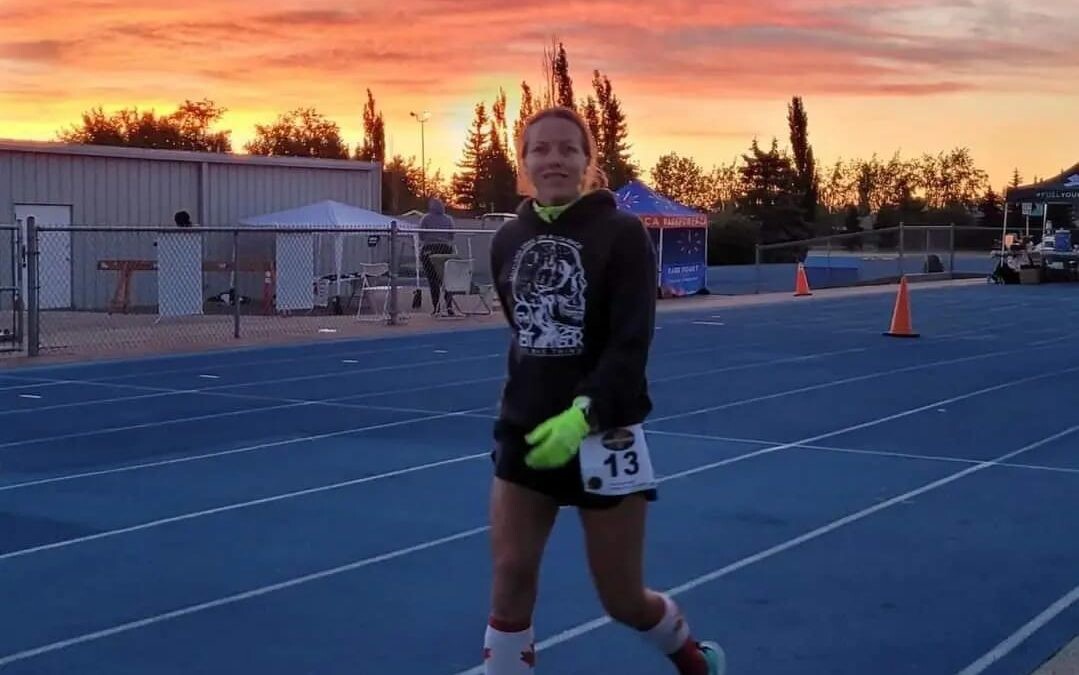
Heading into Survivorfest, Nelson, 33, had hopes of going after the 100-mile and 24-hour national records. Nelson and her crew, including husband Danny Nelson, flew in to Edmonton to prepare a few days in advance.
Three days out from the event, Nelson noticed her legs were very sore. “I noticed that evening that my quads were really hurting. I don’t know if it was from the flight or not but it definitely worried me. I went for a couple small runs in the days leading up to the race, and that made me feel even more worried because they weren’t feeling much better,” Nelson says. After doing some pre-race work on her legs with an ultrasound machine, Nelson started the race feeling slightly better.
“The heat was brutal!” Nelson reported in her post on Instagram. She kept her post-reward treat of seeing the Rocky Mountains for the first time in her life in mind, a dream she had had since childhood.
Nelson is a busy mom and works on a dairy farm. She says she has a lot of support to allow her to flexibly schedule in long runs. Her record-setting 12-hour distance was 134.025 km, with a 100-mile record of 14:45:51.
Brown congratulated Nelson on her new records. She added, “When I went after the 100-mile record last December, I had a strong feeling that it would be a question of “who gets there first” and I was very happy that I did. But I am also fully aware that both Amanda and Stephanie Simpson, who tried to break this record last year, are much faster runners than I am, and, in my opinion, they both can run a faster 100 miler than I can when the stars align–which they did for Amanda this time. Of course, I’m a bit sad that my record is broken, but that’s what records are for–they are meant to be broken.”

Nelson and Brown will compete with one another at Persistence Backyard Ultra in London, Ont. at the end of July. Brown says she looks forward to it: “I’m just extremely happy that the Canadian women’s ultrarunning field seems to be so strong, and I hope we can inspire and push each other to better and greater performances together. I will specifically need Amanda at the backyard race at the end of July to show a strong performance so we can both go further than ever before!”
With one record-setting performance after another, both Nelson and Brown are athletes to watch on the Canadian ultrarunning scene.
(06/21/2022) ⚡AMPby Running Magazine
Seiko again designated as official timer for World Athletics Championships Oregon22
Seiko Holdings Corporation has been designated as the official timer for the 18th World Athletics Championships to be held at Hayward Field in Oregon, USA, from 15-24 July 2022.
Since entering into a sponsorship contract with World Athletics in 1985, Seiko has served continuously as the official timer for 17 consecutive World Athletics Championships. At the next edition, Seiko will implement new equipment including the jump management system, which is designed to further facilitate the accurate judgment of jumping events. Seiko will also hold an event called ‘Time to Shine’, which aims to support the next generation of athletes.
True to the company’s group slogan — Moving ahead. Touching hearts. — Seiko aims to inspire sports fans around the world by using state-of-the-art equipment to provide accurate timing and measurement, and through continuing to support the next generation of athletes.
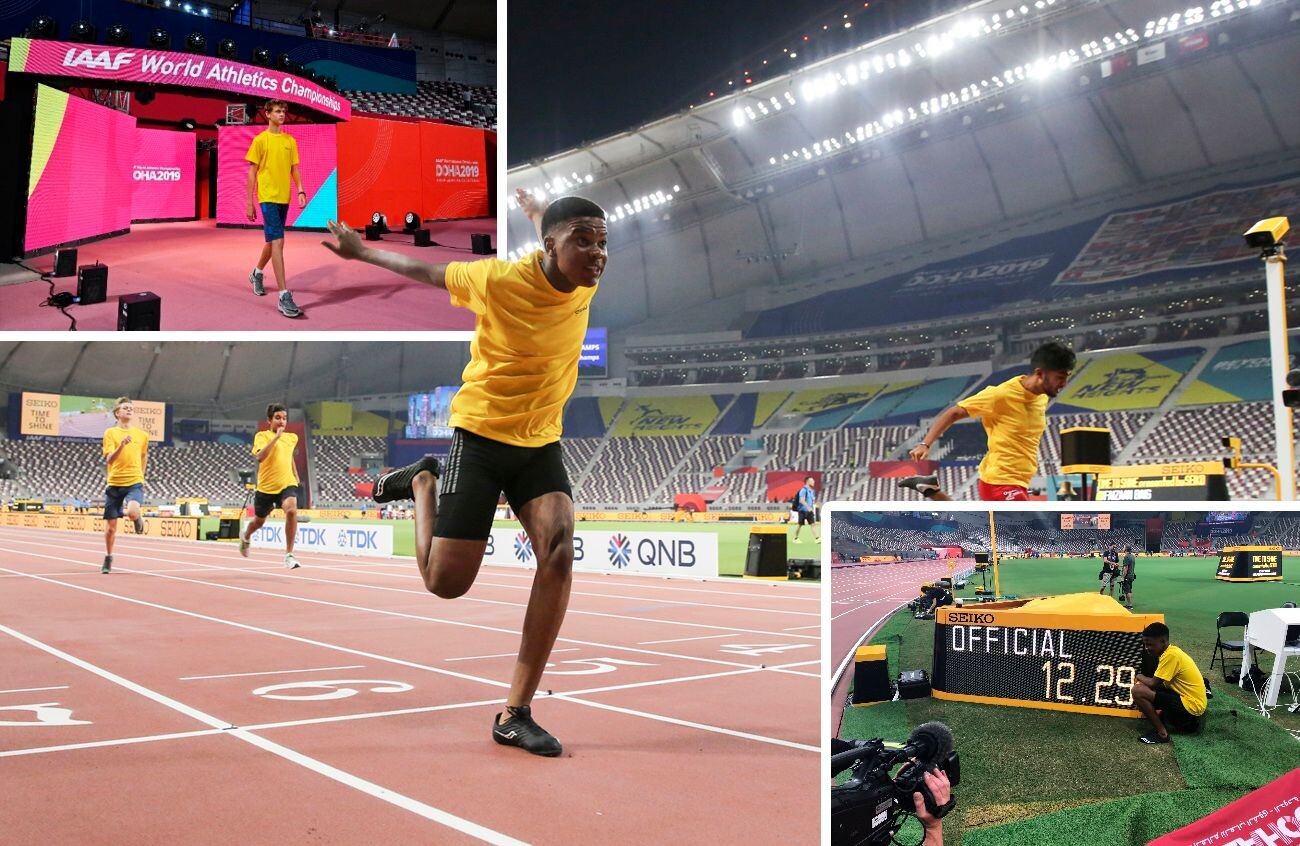
Time to Shine
The ‘Time to Shine’ event is designed to promote track and field, and to foster the next generation of athletes. Young athletes aged between 12 and 18 will have an opportunity to race at the same venues and use the same equipment as athletes participating at the World Athletics Championships. Seiko is doing its small part to inspire the next generation by giving them a chance to compete on the same stage as the world's top athletes.
- Date: Wednesday 20 July, 12:00-13:30- Venue: Hayward Field (Eugene, Oregon)- Target audience: Young athletes aged between 12 and 18
(06/21/2022) ⚡AMPby World Athletics
World Athletics Championships Budapest23
Budapest is a true capital of sports, which is one of the reasons why the World Athletics Championships Budapest 2023 is in the right place here. Here are some of the most important world athletics events and venues where we have witnessed moments of sporting history. Throughout the 125-year history of Hungarian athletics, the country and Budapest have hosted numerous...
more...USATF 2022 Outdoor Championships schedule
The Nation’s best will leave it all on the track June 23-26 as they compete for a spot on the world’s best track and field team.
The meet will be held at Hayward Field at the University of Oregon. This will be the tenth time that the U.S. championship meet will be staged in TrackTown USA. The meet will also serve as the qualifying event for the 2022 World Athletics Championships Oregon22, set for July 15–24.
USATF 2022 Outdoor Championships schedule (times are PDT)

Day 1: Thursday 23 June
4:00 p.m. 800m Men First Round
4:25 p.m. 800m Women First Round
4:50 p.m. 400m Hurdles Women First Round
5:00 p.m. Hammer Throw Women Final
5:15 p.m. Long Jump Women Final
5:15 p.m. 100m Women First Round
5:40 p.m. 100m Men First Round
5:45 p.m. Discus Throw Men Final
6:05 p.m. 3000m Steeplechase Men First Round
6:35 p.m. 1500m Men First Round
6:53 p.m. 1500m Women First Round
7:11 p.m. 400m Women First Round
7:36 p.m. 400m Men First Round
Day 2: Friday 24 June
5:10 p.m. 100m Hurdles Women First Round
5:35 p.m. 100m Women Semi-Final
5:45 p.m. Long Jump Men Final
5:50 p.m. 100m Men Semi-Final
5:55 p.m. Pole Vault Women Final
6:05 p.m. 3000m Steeplechase Women First Round
6:15 p.m. High Jump Women Final
6:35 p.m. 400m Hurdles Men First Round
6:42 p.m. Shot Put Men Final
6:45 p.m. Discus Throw Women Final
7:04 p.m. 400m Hurdles Women Semi-Final
7:21 p.m. 100m Women Final
7:30 p.m. 100m Men Final
7:46 p.m. 800m Men Semi-Final
8:02 p.m. 800m Women Semi-Final
8:25 p.m. 400m Women Semi-Final
8:46 p.m. 400m Men Semi-Final
Day 3: Saturday 25 June
11:30 a.m. Javelin Throw Women Final
11:45 a.m. 200m Men First Round
12:00 p.m. Pole Vault Men Final
12:10 p.m. 200m Women First Round
12:15 p.m. Hammer Throw Men Final
12:30 p.m. Triple Jump Women Final
12:35 p.m. 110m Hurdles Men First Round
1:04 p.m. 100m Hurdles Women Semi-Final
1:22 p.m. 400m Hurdles Men Semi-Final
1:40 p.m. 1500m Women Final
1:52 p.m. 1500m Men Final
2:04 p.m. 3000m Steeplechase Men Final
2:21 p.m. 400m Women Final
2:31 p.m. 400m Men Final
2:41 p.m. 100m Hurdles Women Final
2:51 p.m. 400m Hurdles Women Final
Day 4: Sunday 26 June
12:15 p.m. Triple Jump Men Final
12:25 p.m. High Jump Men Final
12:30 p.m. 200m Men Semi-Final
12:35 p.m. Javelin Throw Men Final
12:46 p.m. 200m Women Semi-Final
1:00 p.m. Shot Put Women Final
1:04 p.m. 110m Hurdles Men Semi-Final
1:18 p.m. 5000m Women Final
1:40 p.m. 400m Hurdles Men Final
1:48 p.m. 800m Men Final
1:54 p.m. 800m Women Final
2:03 p.m. 5000m Men Final
2:23 p.m. 3000m Steeplechase Women Final
2:38 p.m. 200m Men Final
2:46 p.m. 200m Women Final
2:54 p.m. 110m Hurdles Men Final
(06/20/2022) ⚡AMPUSATF Outdoor Championships
With an eye toward continuing the historic athletic success of 2022, USATF is pleased to announce competitive opportunities for its athletes to secure qualifying marks and prize money, including a new Grand Prix series, as they prepare for the 2023 World Athletics Championships in Budapest, Hungary.As announced a few months ago, the 2023 Indoor Championships in Nanjing, China have been...
more...Five high school boys have combined to break the four-minute barrier seven times in 2022 and no one has enjoyed it more than Jim Ryun
Jim Ryun was the first high school boy to break the four-minute barrier in the mile as a Kansas 17-year-old in 1964 and went on to a legendary track and field career that included three Olympic appearances in the 1,500m, a silver medal in the 1968 Mexico City Olympics, and numerous American and world records.
Ryun’s name always surfaces when a high schooler dips under 4 minutes in the mile. And in 2022, his name has been coming up a lot.
Ryun’s career was also in the spotlight earlier this month when he was one of 30 former college track and field athletes inducted into the inaugural class of the USTFCCCA’s Athlete Hall of Fame in conjunction with the NCAA Championships in Eugene, Ore.
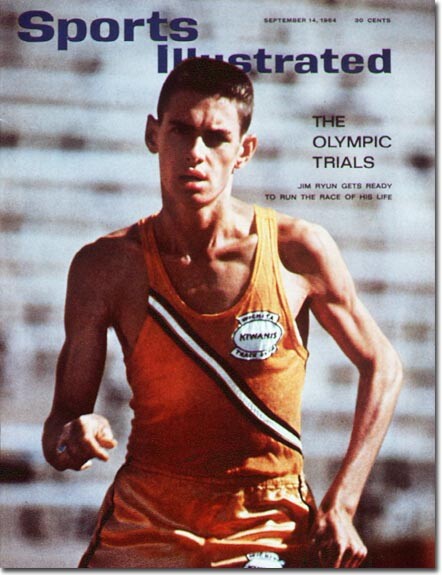
The original 4-minute high school barrier breaker celebrates the resurgence of American high school distance running and says for too long runners were held back in fear of what would happen if they ran under 4 minutes for the mile.
“I think they realize it’s not a barrier that can’t be broken, it’s more of a matter that if you break it,” Ryun said, “will you go on from there, which you can because we’re seeing more and more of them that are doing that.
“It’s not the barrier that it once was, should never have been there. For a long time, there were three of us. Myself, Marty Liquori and Tim Danielson. We were the only (sub) 4-minute milers from high school for years and I think it was the result of people being afraid of that, and coaches saying if you run too fast, too soon you’ll never make it very far.”
Growing up, Ryun often wondered if he would ever be successful in an athletic endeavor. He tried basketball and football and was cut from his church baseball team. At a high school assembly, Bob Timmons, the school’s track and field and cross country coach, encouraged students to run on his cross country team in the fall.
Ryun had never run more than one lap around a track before joining the cross country team, but in one season at Wichita East High School, he went from the last runner on the third-string team to a sixth-place finish at the Kansas state meet.
“Running was so new to me, I didn’t know who the heroes were,” Ryun recalled. “In fact, my first thought was I wanted to be a baseball, football, basketball player. Running, what’s that? So, it took a while. The first book Coach Timmons gave to me was about Emil Zatopek, the great Olympian, so I read that, and it began helping me understand about the sport.”
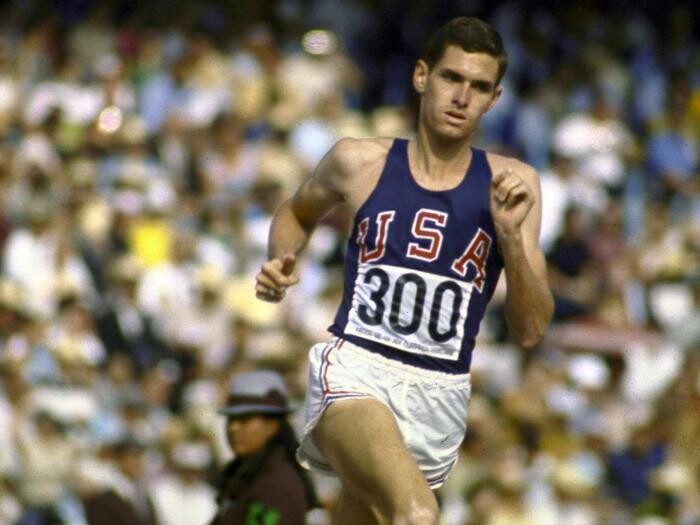
Ryun said Timmons was convinced he could be the first high school runner to break 4 minutes in the mile. That came true on June 5, 1964, when Ryun ran 3 minutes, 59.0 seconds to finish eighth at the Compton Invitational in Los Angeles.
“The goal originally was my coach’s because I was the kid that got cut from the church baseball team, didn’t have great talent and when I started running, I was looking for direction,” Ryun said. "And he began basically teaching me about goals, how to reach goals, and gave me workouts to get there. The night that I ran 4 minutes, 3:59.0, I didn’t sleep that night (before) because I realized that it was his goal.
“But my thought was, what happens if I take ownership, ownership being there’s certain things you as an athlete know you could do like maybe a little extra weightlifting, better eating. It was a transformational moment, because I mean when you finish eighth in a race and become the first kid to run under 4 minutes, that has to change your life – and it did.”
Ryun’s running career took off from there. He made the 1964 U.S. Olympic team in the 1,500m that went to Tokyo and was the last U.S. high school men’s track and field athlete to make the U.S. Olympic team until teenager Erriyon Knighton qualified for the 2020 Tokyo Olympics in the 200m and finished fourth there.
As a high school senior, Ryun broke 4 minutes four more times. His time of 3:58.3 at the 1965 Kansas state meet was the first time 4 minutes was broken in a high school-only meet. On June 4, 1965, Ryun returned to the Compton Relays, the site of his first sub-4-minute mile and ran 3:56.8. A little over three weeks later, he ran 3:55.3 at the U.S. AAU Championships in San Diego and beat New Zealand’s Peter Snell, the 1964 Olympic champion in the 800m and 1,500m.
Ryun, who would stay close to home and attend Kansas University after graduating from high school in 1965, roomed with a former Jayhawks great, Billy Mills, during U.S. training camps leading up to the 1964 Olympics. In Tokyo, Mills stunned the world by becoming the only U.S. athlete to ever win the Olympic 10,000m.
In 1966, Tim Danielson became the second American high schooler to break 4 minutes when he ran 3:59.4. A year later, Marty Liquori ran 3:59.8 to become the third high schooler under 4 minutes.
Ryun and Liquori had illustrious careers after high school, particularly Ryun. At age 19 in 1966, Ryun set two world records, first in the 800m (1:44.9), and then the mile (3:51.3). He was the NCAA indoor mile champion for Kansas in 1967, 1968 and 1969, and the 1967 outdoor NCAA mile champion. In 1967, he set a 1,500m world record of 3:33.1 that stood for seven years.
That same year, he lowered his mile world record to 3:51.1., a mark that stood for almost eight years. Ryun was the last American man to hold the mile world record. He still holds American junior records for the mile (3:51.3) and 2-mile (8:25.1), and his 800m American junior record of 1:44.9 stood for exactly 50 years.
In 2003, ESPN.com ranked Ryun as the greatest U.S. high school athlete of the 20th century, ahead of Tiger Woods, LeBron James, Lew Alcindor (now Kareem Abdul-Jabbar), Wilt Chamberlain, Marion Jones, and others.
After Ryun, Danielson, and Liquori, the 4-minute mile wasn’t broken by a prep athlete again for more than 32 years until Alan Webb ran 3:59.86 at the New Balance Games in New York on Jan. 20, 2001. Sensing something special in Webb, the promoters of the Prefontaine Classic in Eugene, Ore., invited him to run in the Bowerman Mile, the signature event of the meet that has since become a Diamond League event, on May 27, 2001.
Morocco’s Hicham El Guerrouj, still the world record-holder in the 1,500m and mile, won the event in 3:49.92, followed by Kevin Sullivan of Canada and Bernard Lagat, then of Kenya, who later ran for the U.S. They helped pull Webb to a fifth-place finish in 3:53.43, breaking Ryun’s 36-year-old high school record.
“I thought he would. I just didn’t know how much he would break it by," Ryun said. “It was one of those moments in time where he had run well, but he needed somebody to help him get over that finish line, just as I did running under 4 minutes for the first time. You need someone to help set the pace. You can relax a little bit, and he was able to take advantage of that.
“So, there was no real surprise to me. The biggest surprise was that there weren’t more high school boys running under 4 minutes.”
It would be another 10 years before a high schooler would break 4 minutes in the mile. In 2015, Matthew Maton and Grant Fisher, now the U.S. record-holder in the men’s 10,000m, both ran 3:59.38 about one month apart. In 2016, two runners broke 4 minutes, including Drew Hunter, who did it twice in a 15-day span in February indoors, both times in New York.
The 4-minute barrier was broken by high schoolers once in 2017 and again in 2020 during the height of the COVID-19 pandemic. In 2021, Hobbs Kessler ran the fastest high school mile since Webb when he ran 3:57.66 indoors. Kessler later that year broke Ryun’s 1,500m American junior record of 3:36.1 that stood for almost 55 years.
The lack of American high school runners breaking 4 minutes in the mile for decades might be a big reason why U.S. men haven’t enjoyed much Olympic or international success until recently. When Matthew Centrowitz won the men’s 1,500m at the 2016 Rio de Janeiro Olympics, he was the first American man to do so since 1908. At the same Olympics, Clayton Murphy won the bronze medal in the 800m, the first American man to medal in the event since 1992.
And when the World Athletics Championships are hosted on U.S. soil for the first time next month in Eugene, Ore., the defending 800m men’s champion is American Donavan Brazier.
“If you look back in history, you’d see there was a dominance maybe by a country for a time like Great Britain had all those great runners. America at one time was dominant in that area as well,” Ryun said. “So, I think it’s a matter of floating from place to place, and I think it comes down to motivation. How motivated are you?
“Over time you start realizing that motivation has to come down to you be willing to get up, run in all kinds of weather, race all over the world and let those talents be developed that God’s given you. So, it takes time. I think America can come back with dominance, but it also comes down to how motivated you are. I see the Kenyans as very motivated, and America can be just as motivated as you see with these new young runners that are developing quickly.”
That has proven to be the case this season. Seventeen high school runners have broken the 4-minute barrier, and 2022 has been the banner season for it so far with five runners breaking the mark seven times.
“I think a lot of coaches are seeing, too, that kids are just developing a lot faster doesn’t mean you’re going to burn out,” Ryun said. “It means you’ve got great opportunities. Will you decide to keep it going and, in my case, will you take ownership? The coach can only take you so far, but then you have to establish ownership.”
The owner of the fastest prep mile this year is Colin Sahlman, who ran 3:58.81 indoors in February, and, like Webb, was invited to the Bowerman Mile at the Prefontaine Classic. In a field that included 2020 Tokyo Olympic 1,500m gold medalist Jackob Ingebrigtsen, defending World Athletics Championships 1,500m gold medalist Timothy Cheruiyot, and defending 1,500m NCAA outdoor champion Cole Hocker, Sahlman finished 13th in 3:56.24. Of the 14 men who finished the race, seven set personal bests and seven set season bests, including Ingebrigtsen, whose time of 3:49.76 is the fastest in the world this year.
Sahlman’s time moved him to third on the all-time prep list behind Webb and Ryun. Sahlman, who is headed to Northern Arizona University for college, was part of a high school powerhouse at Newbury Park High in Southern California. In 2021, Newbury Park became the first high school team to have four runners break 4:10 for the mile in the same season.
“That mindset has really evolved and developed over these last three to four years,” Sahlman said in a March article in the Los Angeles Times. “It’s just like it’s transformed into something that we never thought was possible. Now we think anything’s possible.”
Gary Martin has also broken 4 minutes twice this year, running 3:57.98 on May 14 and 3:57.89 on June 2 in the Festival of Miles in St. Louis. At the Festival of Miles, Connor Burns ran 3:58.83 to become the first high school junior since Ryun to break 4 minutes. It was also the first time two prep runners broke 4 minutes in the same race.
Those two performances gave the Festival of Miles four prep runners who have broken 4 minutes. That’s where Fisher did in 2015, a feat repeated by Reed Brown a year later.
And one day after Martin and Burns broke 4 minutes, Rheinhardt Harrison ran 3:59.33 in Florida on June 3. On June 15, Simeon Birnbaum added to the list of sub-4 minute runners when he became the second high school junior this season to break the mark with a time of 3:59.51.
Will this high school running resurgence lead to greater U.S. success against international competition and major global championships? Only time will tell.
(06/20/2022) ⚡AMPby Ashley Conklin (World Athletics)
Branna MacDougall joins Silvia Ruegger as the only Canadian woman to run under 2:29:00 before the age of 25
On the shores of Lake Superior in Duluth, Minn., Canada’s rising marathon star, Branna MacDougall, ran a five-minute personal best of 2:28:36 to place fifth at the 2022 Grandma’s Marathon. Her time is one minute under the world marathon standard of 2:29:30 and the seventh-fastest ever among Canadian women.
(First photo) Branna MacDougall of Kingston, Ont., approaches the finish line at the Muskoka Half-Marathon in 2020.
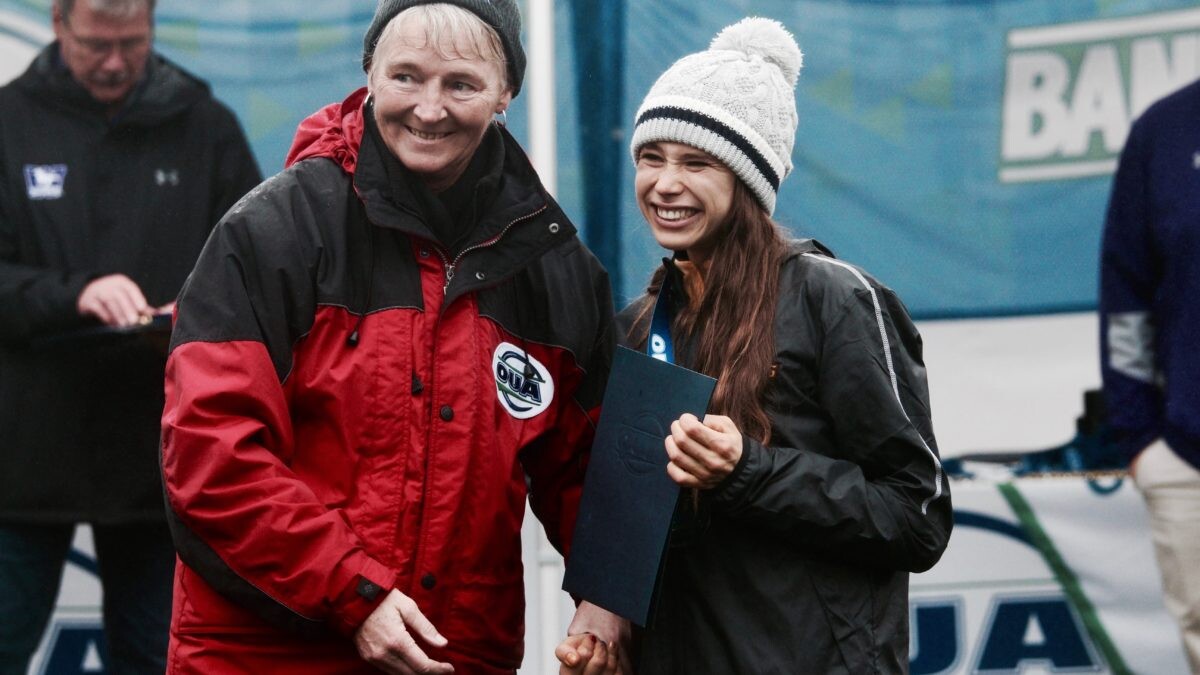
Although MacDougall had only tackled the marathon distance once before, she ran the race like a seasoned veteran. She negative split the second half of the race in 1:14:13, moving up to fifth from seventh place. Her first marathon, last fall, was in Muskoka, Ont., where she ran a solo 2:33:40.
MacDougall, 23, had a prolific cross-country career at Iowa State University and Queen’s University, winning the U Sports team title in 2019. Since then, she has continued her training in Kingston under former Queen’s coach Steve Boyd and Physi-Kult.
U.S. marathoner Dakota Lindwurm become the first Minnesotan to successfully defend her title, winning in a personal best time of 2:25:01, which is four minutes faster than her previous winning time of 2:29:04.
Sarah Sellers, who finished second at the Boston Marathon in 2018, and school teacher Susanna Sullivan of the U.S., rounded out the top three in 2:25:43 and 2:26:56, respectively.
MacDougall’s time is the second-fastest time by a Canadian woman this year, only behind Malindi Elmore’s 2:27:56 at the 2022 Boston Marathon. Although MacDougall’s time is under the 2022 world championship standard, the qualification period closed on May 29 and Canada’s team has already been named.
The 2022 Commonwealth Games qualification window closed on June 19, therefore, there’s a chance MacDougall could be selected to represent Canada in Birmingham, U.K., or considered for the 2023 World Championships in Budapest.
(06/20/2022) ⚡AMPby Running Magazine
Grandmas Marathon
Grandma's Marathon began in 1977 when a group of local runners planned a scenic road race from Two Harbors to Duluth, Minnesota. There were just 150 participants that year, but organizers knew they had discovered something special. The marathon received its name from the Duluth-based group of famous Grandma's restaurants, its first major sponsor. The level of sponsorship with the...
more...Tokyo Olympian Tachlowini Gabriyesos will lead a six-member Athlete Refugee Team (ART) to next month's World Athletics Championships Oregon22.
Tachlowini Gabriyesos, 24, made waves one year ago when he finished 16th in the Olympic marathon in Sapporo, beating some of the world's best marathoners.
“It makes me so proud to once again wear the Athlete Refugee Team vest at the World Championships,” said Gabriyesos, a native of Eritrea who made his Athlete Refugee Team debut at the 2019 World Championships in Doha where he competed in the 5000m.
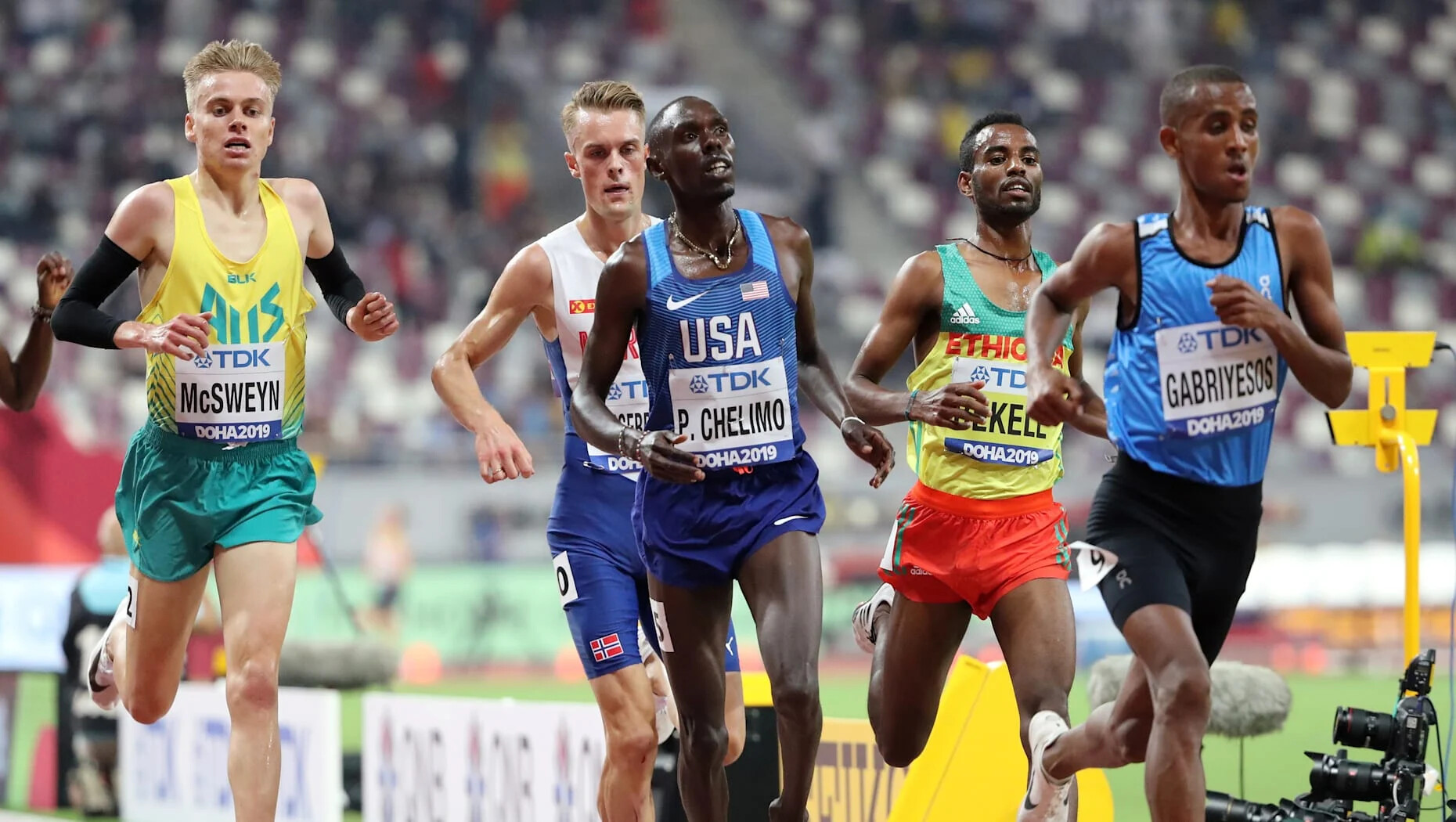
“I don’t represent a country, but millions of people without one. I want to be a role model for refugee youth around the world and wish to show the world once again that refugees can be strong, that we are hungry for success and that we deserve equal opportunities.”
Gabriyesos fled conflict and bloodshed in Eritrea at age 12 and journeyed through Ethiopia, Sudan and Egypt before crossing the Sinai desert on foot to Israel where he's been living since 2010. He began running soon after and eventually found that he was best suited for athletics' longest running event.
At the Hahula Galilee Marathon in Israel in March 2021, Gabriyesos clocked 2:10:55 to become the first refugee athlete to meet an Olympic qualifying standard. He later served as the co-flag bearer for the Olympic Refugee Team at Tokyo’s Opening Ceremonies. After his solid performance in Sapporo's hot and muggy conditions, Gabriyesos improved to 2:10:09 at the Seville Marathon in February.
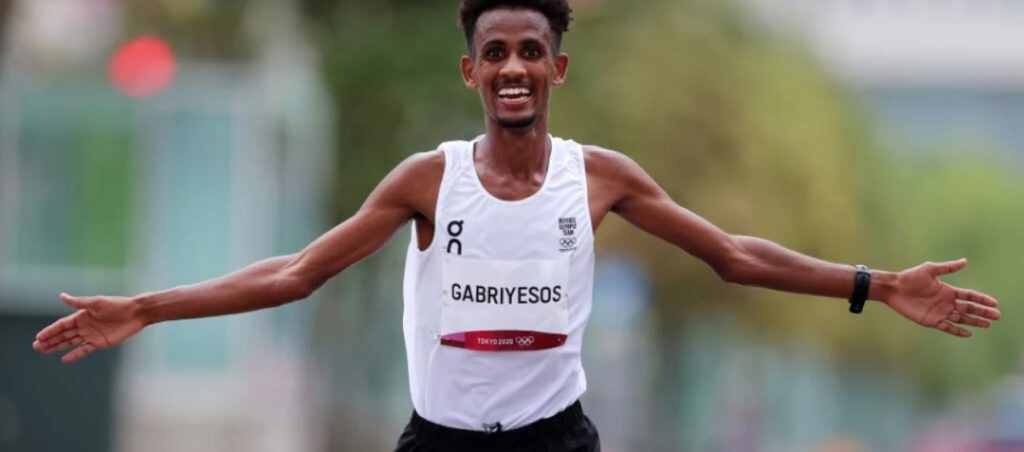
After its involvement with the inaugural Refugee Olympic Team that competed at the 2016 Olympic Games in Rio, World Athletics established the Athlete Refugee Team in 2017 to provide refugees with high level training and competitive opportunities.
It is the world’s only year-round team composed solely of refugee athletes. The team has been represented at almost every World Championship event since, in addition to a growing number of continental and regional events, most recently the European 10,000m Cup in May and the African Championships earlier this month.
"On this World Refugee Day, our Athlete Refugee Team brings a powerful and inspirational message of hope and solidarity to the world, at a time when it's truly needed," said World Athletics President Sebastian Coe. "They're also showing, through their rapid development and world class performances, that they do belong among the world's best athletes."
Representing a community of 89 million
When the refugee team was introduced at the 2016 Olympic Games in Rio, that squad of 10 – six competing in athletics – represented 65 million people around the world who had been forcibly displaced from their homes.
That figure soared to more than 82 million by 2020 and, propelled by conflict, the climate crisis and skyrocketing inequality, has grown to 89.3 million at the end of 2021. The six athletes who are set to compete in Eugene next month will represent a community that collectively would be the 17th most populous country on the planet.
Similarly, the number of athletes involved in the World Athletics Athlete Refugee Team project continues to grow. More than 40 athletes are now involved in the programme, training at their respective bases in Kenya, Israel, France, the United Kingdom, Sweden, Germany, Canada and Portugal.
Gabriyesos will be joined by Jamal Abdalmajid Eisa-Mohammed, a native of Sudan, who will make his second consecutive World Championships appearance in the 5000m. The 28-year-old improved his lifetime best over the distance to 13:42.98 at the Olympic Games last year.
Dorian Keletela, 23, will be making his third ART appearance after outings at the 2021 European Indoor Championships and last summer's Olympic Games in Tokyo. In the Japanese capital, he clocked 10.33 to win his 100m heat in the preliminary round, smashing his previous career best by 0.13. He improved to 10.27 last year and at the moment has a 10.47 season's best.
Fouad Idbafdil, a refugee from Morocco who is based in France, rounds out the men's squad. The 34-year-old steeplechase specialist improved his lifetime best to 8:37.94 nine days ago. He too competed on the ART squad in Doha in 2019.
The women’s team is led by Anjelina Nadai Lohalith, who will bring plenty of experience to the start line of the 1500m. The 27-year-old native of South Sudan, who is based at the Tegla Loroupe Peace Foundation training camp in Ngong, Kenya, will be making her second World Championships appearance after her debut in 2017.
Nadai is a two-time Olympian and most recently competed at the World Indoor Championships in Belgrade in March and the African Championships in Mauritius 11 days ago. She set her 4:31.65 lifetime best in Tokyo last year.
She'll be joined by Atalena Napule Gaspore, another South Sudanese athlete from the Loroupe camp, who will be making her Athlete Refugee Team debut competing in the 800m.
Athlete refugee team for WCH Oregon22
Women 800m: Atalena Napule Gaspore 1500m: Anjelina Nadai Lohalith
Men 100m: Dorian Keletela 5000m: Jamal Abdalmajid Eisa-Mohammed marathon: Tachlowini Gabriyesos 3000m steeplechase: Fouad Idbafdil
(06/20/2022) ⚡AMPby World Athletics
World Athletics Championships Budapest23
Budapest is a true capital of sports, which is one of the reasons why the World Athletics Championships Budapest 2023 is in the right place here. Here are some of the most important world athletics events and venues where we have witnessed moments of sporting history. Throughout the 125-year history of Hungarian athletics, the country and Budapest have hosted numerous...
more...Remembering Kusocinski's athletics feats and heroic struggle
It was 90 years ago today that Janusz Kusocinski ran his way into the world record book.
Already a prolific national champion in his homeland, at distances ranging from 800m to 10,000m, the 25-year-old Pole made a name for himself at a global level when he crossed the line in an international 3000m race in Antwerp, Belgium, ahead of John Fellowes of the USA in 8:18.8.

“Kusy,” as the popular Warsaw gardener was known to friends and the wider public in Poland, eclipsed one of the enduring global marks set by the finest of all the formidable Flying Finns.
The world record for 3000m had belonged to the peerless Paavo Nurmi for six years. The nine-time Olympic gold medallist had clocked 8:20.4 in Stockholm in 1926.
To prove it had been no fluke, 10 days later – on 29 June 1932 – Kusocinski claimed another of Nurmi’s world records. On that occasion, he smashed it by 13 seconds, his 19:02.6 for 4 miles obliterating Nurmi’s 1924 figures of 19:15.6.
First non-Finnish winner
A month later, Kusocinski enjoyed his finest half an hour in track and field.
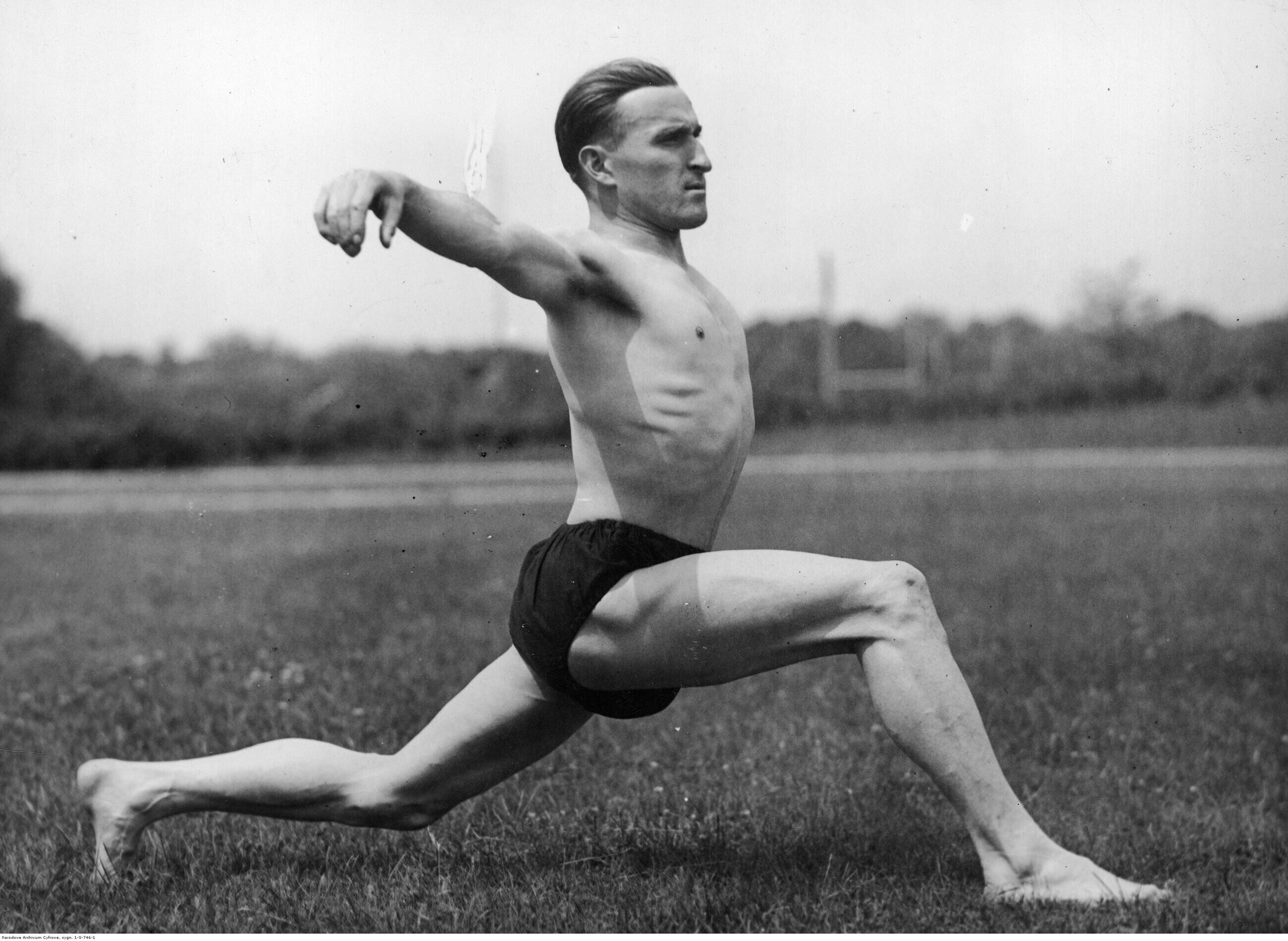
Running for his country in the Los Angeles Coliseum on 31 July, he fought a nip and tuck battle with Finn Volmari Iso-Hollo for 24 laps of the 1932 Olympic 10,000m final.
Iso-Hollo led by a metre going into the final lap but then Kusocinski sprinted clear before slowing to a jog and still winning by 1.1 seconds. His time, 30:11.4, shattered the Olympic record Nurmi had established in Amsterdam four years previously: 30:18.8.
In succeeding Nurmi, Kusocinski became the first non-Finnish winner of the Olympic 10,000m crown. He was the only non-Finn to win the coveted Blue Riband of distance running until Emil Zatopek in London in 1948.
For Iso-Hollo, compensation came seven days later in the form of the 3000m steeplechase gold medal. The Finnish typesetter would have claimed the world best too had the stand-in trackside lap-counter not been distracted by the decathlon pole vault, allowing the field to complete an extra circuit of the track.
Iso-Hollo went on to win another steeplechase gold, plus a 10,000m bronze medal, in front of Adolf Hitler and the Nazi regime at the 1936 Olympics in Berlin.
Resistance hero
Kusocinski proceeded to etch his name into national folklore as a fearless fighter against the Nazi occupation of his homeland.
When Hitler’s troops invaded Poland in September 1939, Kusocinski volunteered for the Polish Army and was drafted into the machine gun company as a corporal in the Second Battalion of the 360 Infantry Regiment. In the fight to defend Warsaw, he was wounded twice and was awarded the Cross of Valour.
After the country fell to Nazi Germany, he worked ostensibly as a waiter at the Red Rooster Bar in Warsaw while secretly operating as a member of the underground resistance movement known as the Wolves, using the pseudonym Prawdzic.
Kusocinski was arrested by Gestapo officers at the gate of his house in Warsaw on 28 March, 1940. He was interrogated and tortured at Gestapo headquarters but refused to reveal the names of fellow resistance members.
On the night of 20-21 June, he was transported to Palmiry on the outskirts of Warsaw and executed in Kampinos Forest as part of what the Nazis called Operation AB, an attempt to exterminate all Polish intelligence operatives.
Nine decades on, the name of Janusz Kusocinski, world record-breaker, Olympic champion and national hero lives proudly on in Poland.
Scores of streets and primary schools throughout the country carry his name. So does the Janusz Kusocinski Memorial meeting, which celebrated its 68th edition in Chrozow on 5 June this year and is part of the World Athletics Continental Tour Gold series.
Vladimir Kuts took part in the inaugural event in 1954 and meeting records dating back to the 1970s are held by greats such as Alberto Juantorena (1:43.66 for 800m), Irena Szewinska (49.75 for 400m) and Bronislaw Malinowski (8:21.2 for the 3000m steeplechase).
An athlete by chance
Kusocinski was born in Warsaw in 1907, the son of a railway clerk. Armed conflict took its toll on his family when he was a child. His eldest brother, Zygmunt, was killed in France in World War I. Another brother, Tedeusz, was a casualty of the Polish-Bolshevik War in 1920.
In his youth, Janusz’s first sporting love was football. He played as a dashing forward for various clubs in Warsaw.
He became an athlete by accident. In 1925, his sports club RKS Sarmata was a relay runner short for a workers’ holiday meeting. Kusocinski agreed to stand in and helped the Sarmata team to victory.
The following year he started competing as an 800m and 1500m runner and came under the wing of the club’s celebrated track and field coach: one Aleksander Klumberg.
Klumberg became Poland’s national athletics coach between 1927 and 1932. Back in 1922, the native Estonian had become the first official holder of the decathlon world record after posting 7485.61 points in Helsinki. In 1924 he had taken the decathlon bronze medal at the Paris Olympics, behind Harold Osborn and Emerson Norton of the USA.
The young Kusocinski thrived under Klumberg’s regime of intense interval training, winning the Polish 5000m and cross country titles in 1928. His running career was interrupted by a year of national service in the Polish Army but he was stronger upon his return, capturing national titles at 800m, 1500m, 5000m and cross country leading up to his annus mirabilis in 1932.
He represented Poland at the inaugural European Championships in Turin in 1934, placing fifth in the 1500m and taking silver in the 5000m behind Roger Richard of France.
Kusocinski hung up his racing spikes after returning from Italy but dusted them off to win the Polish 10,000m title in 1939.
By that time, he had moved on from gardening to become a PE teacher, coach and then a successful journalist, rising to editor-in-chief of Kurier Sportowy.
Then came the Nazi invasion, and the heroic struggle and tragedy that followed.
In 2009, Kusocinski was posthumously awarded the Commander’s Cross with Star of the Order of Polonia Restituta - “for outstanding contribution to the independence of the Polish Republic, and for sporting achievements in the field of athletics.”
(06/19/2022) ⚡AMPby Simon Turnbull (World Athletics)
Whittaker repeats as mile champion in Seattle by edging Engelhardt and elevates to No. 7 all-time outdoor performer with 4:36.23 effort in first girls high school race with seven athletes running under 4:40
Julia Flynn called it.
“I knew it. I knew today was going to be a crazy race,” said Flynn, a recent graduate of Traverse City Central High in Michigan.

That it was. On a cloudy Wednesday afternoon at the University of Washington’s Husky Stadium in Seattle, Flynn was part of the fastest Brooks PR Invitational mile in meet history.
Defending champion Juliette Whittaker of Mount de Sales in Maryland led the charge with a final surge down the straightaway to win in 4 minutes, 36.23 seconds, lowering her own meet record of 4:38.65 from last year.
Six girls quickly followed, all crossing the finish line under 4:40 to make it the deepest girls mile race in U.S. prep history. The boys mile also didn’t disappoint to cap the meet by having junior Simeon Birnbaum of Rapid City Stevens High in South Dakota eclipse the 4-minute barrier and five athletes run sub-4:02 for the first time in a single high school race.
“I predicted Juliette was going to win, but I was like, ‘You know what? Regardless of the winner, we’re all going to get really big PRs,’” Flynn said. “That’s why it’s Brooks PR, it lives up to the name.”
With the girls and boys miles scheduled annually as the last races of the meet, fans at Husky Stadium lined the outskirts of the track down the straightaway, creating an intimate and electric environment for the 12 female runners all capable of winning the event.
“I knew it was going to be a fast race and I knew it was going to be competitive,” Whittaker said. “Just the fact that we came around with a lap to go and all of us were still in the race, was insane, it was really just a kick to the finish.”
With a slight separation from the pack, Whittaker and freshman Sadie Engelhardt of Ventura High in California – who set an age 15 world mile record April 9 by running 4:35.16 at the Arcadia Invitational – came sprinting down the last 100 meters.
Similar to how the New Balance Indoor National mile championship race played out March 13 between the two athletes, Whittaker had a little more left in her to pull ahead of Engelhardt for the victory. Whittaker prevailed by a 4:37.23 to 4:37.40 margin at The Armory in New York.
Engelhardt finished runner-up Wednesday in 4:36.50, while Flynn ran 4:37.73 to set a Michigan state record by eclipsing the 2013 standard of 4:40.48 produced by Hannah Meier of Grosse Pointe South.
Riley Stewart of Cherry Creek High was fourth in 4:38.21, lowering her own Colorado state record of 4:40.66 from last year, when she placed second behind Whittaker.
“I’m feeling amazing,” Stewart said. “I’ve been 4:40 three times now, so to finally get it (under 4:40) and to run with all these amazing girls, I have to say that was probably one of the best miles we’ve ever seen come through here, so just to be part of it is just amazing.”
Samantha McDonnell of Newbury Park High in California placed fifth in 4:38.44, Isabel Conde de Frankenberg of Cedar Park High was sixth in a Texas state record 4:38.55, and Mia Cochran from Moon Area in Pennsylvania secured seventh in 4:39.23. Conde de Frankenberg eclipsed the 2009 standard of 4:40.24 established by Chelsey Sveinsson of Greenhill High.
Every performance achieved from Engelhardt to Cochran was the fastest all-time mark by place in any high school girls mile competition.
Just missing going under 4:40 was Taylor Rohatinsky of Lone Peak High in Utah, clocking 4:41.83 to also produce the fastest eighth-place performance in any outdoor prep mile race.
Whittaker’s winning effort made her the No. 7 outdoor competitor in U.S. prep history, with three of the marks achieved this year, the other two coming from Dalia Frias of Mira Costa High in California (4:35.06) – who also ran the national high school outdoor 2-mile record 9:50.70 to open Wednesday’s meet – and Engelhardt’s victory at Arcadia.
Whittaker, along with Flynn, Stewart, 10th-place finisher Ava Parekh (4:52.09) of Latin School in Chicago and Roisin Willis from Stevens Point in Wisconsin – second place Wednesday in the 400 in 53.23 – are all part of Stanford’s 2022 recruiting class.
Despite having an unusual high school career due to the pandemic, Whittaker said the surge of quicker times and a more competitive environment may be due to the circumstances the pandemic created with more time for training.
“I feel like ever since COVID, honestly we have just surpassed any goals that we used to always set,” Whittaker said. “(Running) 4:40 used to be a barrier that like many people wanted to break, if so, maybe one, but the fact that seven girls (did) in the same race. I’m excited for years to come to keep watching. Sadie, obviously only being a freshman, and like other girls, I’m excited to see what times they are going to run.”
Here is the list of high school girls who have broken 4:40 before this race:
High School Girls Who Have Run Sub-4:40 Miles
Mary Cain — 4:28.25i (2013)
Alexa Efraimson — 4:32.15i (2014)
Katelyn Tuohy — 4:33.87 (2018)
Dalia Frias — 4:35.06 (2022)
Sadie Engelhardt — 4:35.16 (2022)
Polly Plumer — 4:35.24 (1982)
Katie Rainsberger — 4:36.61i (2016)
Kim Gallagher — 4:36.94 (1982)
Sarah Bowman — 4:36.95 (2005)
Arianna Lambie — 4:37.23 (2003)
Juliette Whittaker — 4:37.23i (2022)
Marlee Starliper — 4:37.76i (2020)
Christina Aragon —4:37.91 (2015)
Addy Wiley — 4:38.14 (2021)
Victoria Starcher — 4:38.19 (2020)
Caitlin Collier — 4:38.48 (2018)
Debbie Heald — 4:38.5i (1972)
Ryen Frazier — 4:38.59 (2015)
Taryn Parks — 4:39.05i (2019)
Wesley Frazier — 4:39.17 (2013)
Sarah Feeny — 4:39.23 (2014)
Danielle Toro — 4:39.25 (2007)
Mia Barnett — 4:39.41 (2021)
Katelynne Hart — 4:39.57 (2020)
Cami Chapus — 4:39.64 (2012)
Brie Felnagle — 4:39.71 (2005)
Dani Jones — 4:39.88 (2015)
Angel Piccirillo — 4:39.94 (2012)
Allison Cash — 4:39.98 (2013)
(06/19/2022) ⚡AMPby Mary Albl of DyeStat
Run Commutes Aren’t Just for Getting to Work
If you’re looking for ways to stay motivated during your Streak, try using the daily jog as transport.
The second half of the Run Streak is when most of us start to crave a rest day or feel a slump in motivation. It’s also the time that I dip into what has been a streak-saving secret: run commuting.

After all, running was transport way before it was sport, and the idea of bookending your work day with runs to and from the office isn’t a new one—especially during the summer Streak when we’ve got more daylight and try to avoid the hottest hours of the day. (Even if you work from home, you can still jog a “fake” commute like ultrarunner Mike Wardian does each morning when he’s trying to get in extra mileage.)
Personally, the majority of my run commuting isn’t from home to office and back again. Rather, it’s for heading to other destinations that I would have otherwise hopped in a car. I can’t help but mention that at a time when gas prices have soared over 5 bucks (6 in some areas!) per gallon. It may not save you a significant amount at the tank, but I feel like it counts double when the mileage that would have been going on your car is going in your training log instead.
If you’re dragging a bit and need something new in your Streak, or just need to squeeze in a quick mile with a task you’ve already got on your schedule, I’ve got a few suggestions. I’ve done them all myself, and each has either added a little convenience or excitement to my Streak. My challenge to you is to try one of these during the final days of yours:
Run to a local coffee shop for your morning coffee.
Jog to meet a friend you haven’t seen in a while.
Get an errand out of the way. (I run to get my groceries and count carrying them home as my weight training.)
Experiment with a run commute to work
End a hot run with ice cream for the walk home.
Save the delivery fee on something small you’ve Uber Eats’d (These apps offer more than just food orders now.)
Pick up birthday or holiday cards for friends and family.
A Few Tips
If you have a watch that offers built-in payment methods, get it set up before you head out so you can leave your wallet at home.
Remember that you don’t have to run the whole way. Maybe you’ll ask a friend for a lift home, carpool with a coworker, or use public transport for a portion of your trip.
Plan your route ahead of time. Use turn-by-turn GPS navigation on your phone’s app or watch as back up.
If you’re commuting during busy hours, incorporate parks into your route to avoid busier roads and sidewalks.
Use hear-through mode on your headphones, or just leave them at home.
Seal your cash or cards in a Ziplock baggy to keep them from getting sweaty.
Short, easy jogs during cooler hours won’t leave you stinky or drenched.
Always give yourself about 10 more minutes than you think you’ll need.
(06/19/2022) ⚡AMPHow much will running in poor air quality compromise your health? It depends on which markers of health you consider
Here’s a bold prediction for the upcoming dog days of summer 2022: it’s going to be hot, smoggy and smoky. Whether you’re in a big metropolis sucking in diesel fumes or on a remote mountain trail coughing up smoke particles from a distant forest fire, there’s a good chance you’re going to encounter some less-than-pristine air over the next few months.
Is that a problem? On the surface, the answer is obvious. Inhaling polluted air triggers a cascade of inflammation and oxidative stress that raises your risk of both immediate and long-term health problems. The rise and fall of air quality readings, for example, is mirrored by the rise and fall of hospital admissions for conditions such as heart disease. And the harder you breathe, the more pollution you inhale, which is why public health authorities typically warn you to avoid outdoor exercise on days with poor air quality.
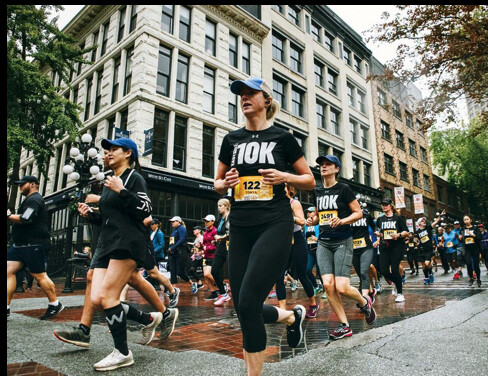
But there’s an alternate perspective. Pollution is definitely bad for your health—but so is skipping your workout. If you’re weighing the lesser of two evils, it may be that running in dirty air is better than not running at all. That’s the perspective that Michael Koehle, an environmental physiologist who is one of the world’s leading experts on exercise and air pollution, offered when I visited his lab at the University of British Columbia a decade ago: “Exercise is such a big hammer that it crushes everything else,” he told me.
At the time, few studies had addressed the balance between exercise’s benefits and pollution’s harms. Since then, Koehle and others have been grappling with this question, with new findings still appearing on a regular basis. Here’s where the research currently stands.
The good news
Last summer, researchers in Taiwan published a study in the Canadian Medical Association Journal that analyzed the medical records of nearly 400,000 adults who had undergone medical screening starting in 1994. Their exercise habits were assessed with a questionnaire, and their pollution exposure was estimated based on their home address. More exercise was associated with greater longevity, while more pollution was associated with worse longevity, as you’d expect. But it was the interaction—or rather, the lack of interaction—between these two factors that was most interesting. Exposure to high levels of pollution didn’t dampen or reverse the health benefits of high levels of exercise.
A few earlier studies have produced similar findings. For example, a Danish analysis of 52,000 people found that higher levels of exercise protected against premature death, heart disease and diabetes, regardless of how much pollution the subjects were exposed to based on a detailed street-by-street air quality database. An explanation for these results might be found in a series of studies by Brazilian scientists, who directly measured inflammation and oxidative damage in the lungs of mice breathing diesel exhaust. Regular running, it turned out, blocked this inflammation and oxidative damage; exercise was a big enough hammer to cancel out the diesel.
The bad news
Longevity is a pretty good marker of health, but it’s not the only one. Earlier this year, researchers at the University of Arizona published a pair of studies that looked at the effects of exercise and air pollution on brain health. It’s well known that people who exercise regularly tend to have brains with more grey matter (where the neurons are) and healthier white matter (which connects and supports the neurons). They are also less likely to develop degenerative brain diseases like Alzheimer’s: data from the long-running National Runners’ Health Study estimates the risk to be 40 per cent lower in those who run about 25 kilometres a week.
The first Arizona study used brain scans to assess the size and health of white and grey matter in 8,600 British adults; the second one used health records to look for dementia diagnoses in about 35,000 people. They used activity trackers to assess exercise habits and home addresses to estimate pollution exposure. For people in low-pollution areas, the results were as expected: more exercise predicted healthier brains and fewer dementia diagnoses. But for people in moderate- and high-pollution areas, the brain benefits of exercise disappeared.
It’s worth emphasizing that exercising in the polluted areas didn’t make people less healthy, nor did it cancel out the many other benefits of exercise, for example, on heart health. But we all want healthier brains, and the news that even moderate pollution blocks some of those benefits is concerning.
What to do about it
The devil is in the details. There are undoubtedly some situations—the apocalyptic aftermath of a big forest fire, say—when it makes sense to skip a run entirely. And people with respiratory or heart conditions should be especially careful to avoid poor air quality.
More often, though, it may be possible to choose a lesser evil. Mornings generally have significantly cleaner air, thanks to traffic patterns and the interaction of sunlight with certain pollutants, so set that alarm clock. Location, too, plays a big role. Trails and paths that are away from busy roads are your best bet, but even small distances and barriers can help. Vancouver’s bike lanes, for example, are often separated from traffic by a lane of parked cars because that gives cyclists measurably better air quality, according to Koehle.
Contrary to what you might expect, Koehle’s research has found that more intense exercise isn’t necessarily worse than easy exercise. Panting hard may change the way particulates of pollution settle (or don’t settle) in the lungs. As a result, he suggests favouring shorter, harder workouts rather than longer, easier ones when the air quality is worse than usual. Moving indoors is also an option—but unless your facility has state-of-the-art air filtration, don’t assume that the air inside is any better than the air outside. It all comes from the same place, after all.
In the long term, rather than tweaking when and where you run, the best solution would be to make sure that we all have consistent access to clean air. That’s a big hill to climb—but by sticking to your running plans rather than, say, driving to the gym, you’re taking a small step in the right direction.
(06/19/2022) ⚡AMPAfter Suffering from Years of Drug Addiction, Running Helped This Dad Get Clean
Now he’s finishing triathlons and conquering ultramarathons.As a teenager, I grew up in St. Louis, Missouri, and found myself in trouble constantly. I started smoking cigarettes and marijuana, and stealing alcohol at a very young age. And by the time I was 15, I had already started using cocaine, LSD, and ecstasy frequently.
Prescription pills took hold of me at a young age and led me into an opiate addiction. At the climax of my addiction, I was homeless and living on the street. I was the guy you would see at a highway exit holding a sign begging people for money. I tried to get off the opiates by going to a methadone clinic and taking methadone (a FDA-approved drug in the opioid family, used to treat opioid use disorder), and wound up more addicted to that drug.

In the clinic, I also met tons of heroin addicts that introduced me to that drug. Being an addict took me to prison and almost took my life several times, and all the relationships in my life were broken as a result. I tried to commit suicide and found myself in psychiatric units, treatment centers, halfway houses, and rehabs frequently.
The worst of my overdoses was the week of February 4th, 2015, where I had a total of three heroin overdoses in one week. I was found unresponsive with a needle in my arm. During one of those overdoses, I had locked myself in a bathroom with my back to the door and feet against the vanity so nobody would be able to open the door. My father, who had been trying to intervene, actually got into my apartment and broke the door to get me out. He gave me CPR and called 911.
The paramedics gave me several doses of Narcan to try and save my life, and I was put on a ventilator in the ICU due to the fluid in my lungs and pneumonia. After a very scary nine days in the ICU, by the grace of God, I woke up.

At this point, I had a decision to make: either run away like a coward or run toward my failures and take responsibility for my life. At this time, my wife was six months pregnant with our first child, so I made the decision to find help at a men’s faith-based recovery center called Lifeline-connect in Urbana, Illinois, that completely changed my life.
Lifeline-connect is a one-year residential program, so I knew I was going to be there for a while. One of my mentors in the program, RJ Eaton, was into fitness and challenged me to get into shape spirituality, mentally, and physically. Up to that point, my lungs were in bad condition. I smoked two packs of cigarettes a day for over a decade.
I had been running off and on since the first time I went to Lifeline-connect in 2009. And after my relapse in 2015, I started running again this time, and at first could barely run a tenth of a mile without stopping because my lungs hurt.
One day while running, someone saw me running in a really old pair of beat up shoes that were falling apart and blessed me with a brand new pair of Saucony shoes, which really encouraged me. A tenth of a mile turned into two and then a half-mile, and with consistency day by day, it wasn’t long until I was running several miles every day.
By the end of my time at Lifeline-connect, I was running five miles a day, five days a week. As I continued on through my recovery, I kept running and fell in love with it.
In 2019, I competed in the Illinois half marathon and remember thinking at the time about how difficult it was to run a half marathon. But following that race, I realized that running was helping me forge mental toughness to stay strong in other areas of my life. Running helped me to have the same mental fortitude to not quit on longer runs, which is the same mental toughness that has helped me not give into temptation in rough times.
Since then, I’ve run three full marathons, one a personal 26.2-mile run, then a 35-mile ultra that wasn’t a sanctioned event. I also set a PR at the Illinois half marathon this past spring, finishing in 1:42, and have also come to love mountain and road cycling.
To keep pushing the bar, I signed up for and completed the Ironman 70.3 Chattanooga this year and finished with a time that I was pleased with accomplishing. I have a goal to summit all 58 14-ers (mountains above 14,000 feet elevation) in Colorado.
Currently, my running schedule is between 25 and 35 miles a week. Every once in a while, I sign up for a 5K, 10K, marathon, or triathlon to keep me motivated because I really enjoy the community of runners/cyclists/triathletes. I’ve actually connected with a number of local athletes who are now friends of mine and I get to meet up with them for runs or rides.
Next on my running goals list is to do a 50-mile ultramarathon, then a 100K run.
Overall, running makes me feel alive and accomplished. It’s one of my personal devotional times where I express my gratitude to my God for keeping me alive. Because of running, today I now have a beautiful life with my three beautiful children: Eden, Amaeya, and Summit. My wife, Maegan, is my biggest cheerleader. She’s my rock who stuck by my side, always encouraging and believing in me. I am so grateful that I get to tuck my three beautiful children in to sleep at night and be their dad. The only thing running didn't prepare me for was raising these three kiddos ages 2, 4, and 6—talk about an endurance event!
A special shout-out to my 2-year-old Siberian husky, Slushy, who has been my running partner over the years. I train with him regularly because he holds me accountable when running. He’s ready to go every day at 5:30 a.m. rain or shine, and he has helped me to be better. We all need a husky in our lives: personally, spirituality, and professionally.
For anyone reading this, I want them to know that no matter what struggle they are going through, there is an opportunity to come out of the fire stronger than before. Sometimes it takes a fire in our lives to clear and burn away all the impurities that were holding us down. Now is the time to get up, lace your shoes, and march forth. If I can do it, anyone can.
These three trips have made my running journey a success:
1. Smile when you run
It helps me to remind myself why I love this.
2. Practice gratitude
When running gets tough, I try to remind myself of how lucky I am to be able to run. I am blessed to have found this path, when others close to me have lost their lives.
3. Run everywhere you travel.
I run everywhere, even on vacation or staying at a friend or family’s house out of state to keep the spirit of adventure alive!
(06/19/2022) ⚡AMPby Runner’s World
Olympic Champion Dame Kelly Holmes has announced she is gay, and says she has hidden it for 34 years.
Speaking during Pride month, the two-time gold medallist said she realised she was gay at the age of 17 after kissing a fellow female soldier, and that her family and friends have known since 1997.
The Olympic champion told the Sunday Mirror: "I needed to do this now, for me. It was my decision. I'm nervous about saying it. I feel like I'm going to explode with excitement.
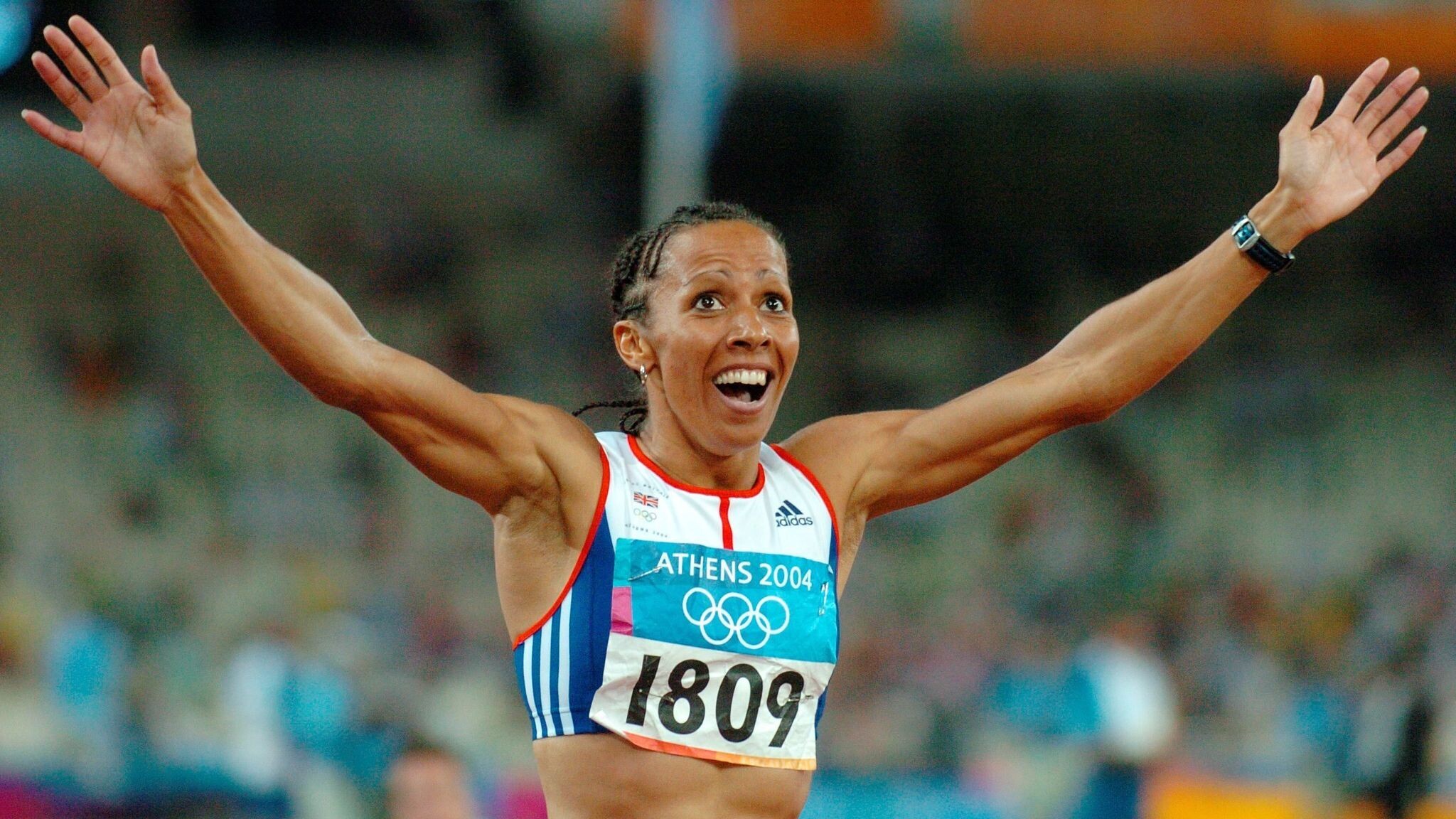
"Sometimes I cry with relief. The moment this comes out, I'm essentially getting rid of that fear."
The 52-year-old also revealed she struggled with her mental health because of having to hide her sexuality, and that she had to keep several same-sex relationships she had during her time in the Women's Royal Army Corps secret, for fear of being courts marshalled.
Until 2000, it was illegal for gay, lesbian and bisexual people to serve in the British Army, Royal Navy and RAF - and Dame Kelly feared she would still face repercussions for breaking that law during her time in the forces.
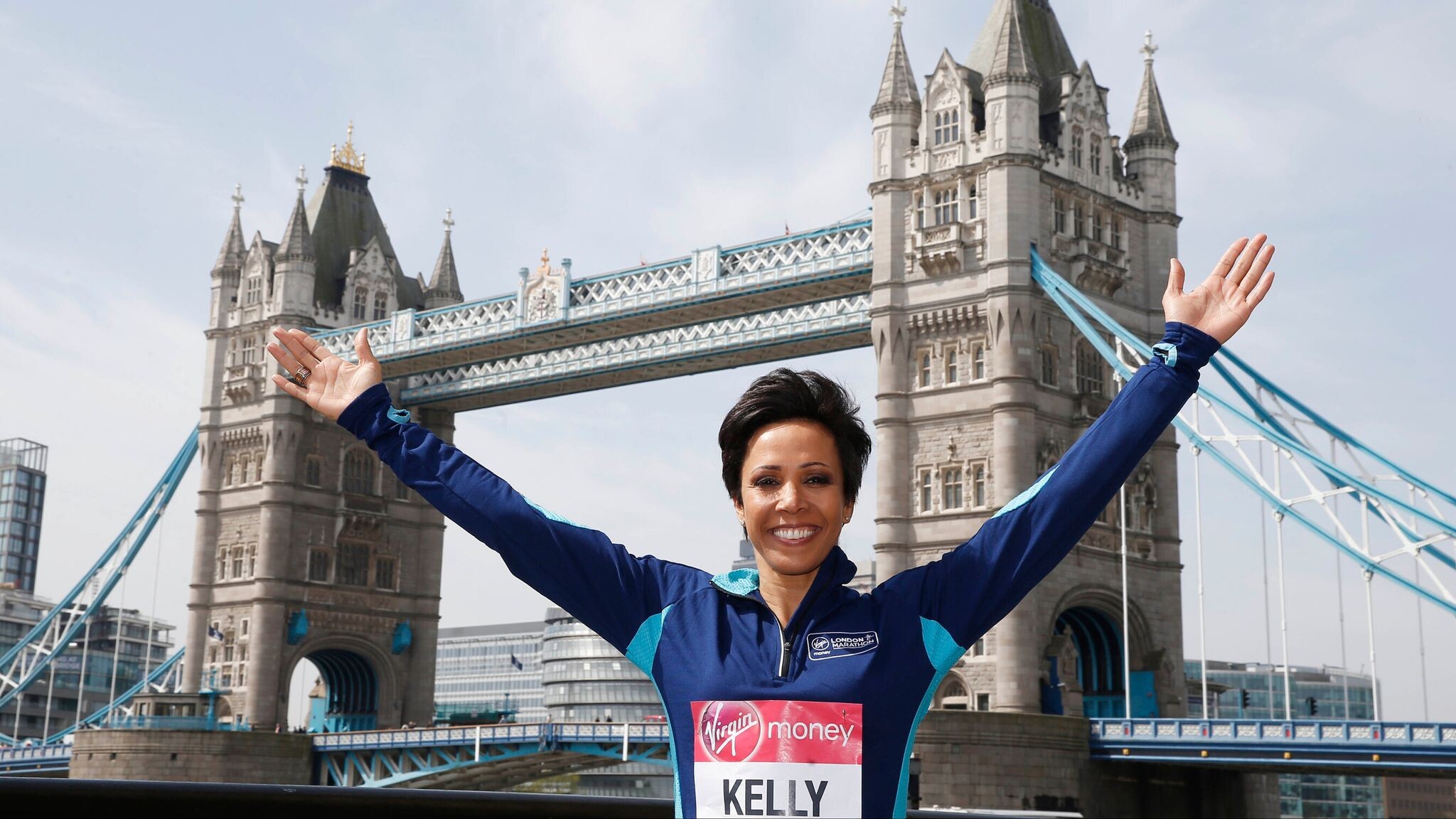
She contacted a military LGBTQ+ leader in 2020 to find out if she could be sanctioned for breaking army rules and was told she would not be.
She said: "I felt like I could breathe again, one little call could have saved 28 years of heartache."
(Second photo) Crossing the finish line to win the gold medal in the women's 800m at the 2004 Olympic Games in Athens. She also won the 1500m.
Dame Kelly took part in her final major championship in 2004, with a double gold medal-winning performance at the Athens Olympics.
In 2005 - the year she retired from athletics - she was made a Dame by the Queen.
She has since been made an honorary colonel with the Royal Armoured Corps Training Regiment.
Dame Kelly set up a charity in 2008, created to support retired athletes to transition out of their sport, and to create mentoring programmes to inspire young people from disadvantaged backgrounds into sports.
Social media has been flooded with support for the Olympic champion.
She has also started to make a documentary about her experiences called Being Me, where she talks to LGBTQ+ soldiers about their lives in the military now.
(06/18/2022) ⚡AMPSebastian Coe runs first few steps at Budapest’s new National Athletics Centre
World Athletics President Sebastian Coe ran the first metres on the track at the new National Athletics Centre of Hungary, which will be the venue for the World Athletics Championships Budapest 23 in just over a year.
Coe, who is in Budapest for the FINA World Championships, met with key members of the local organising committee for the 2023 World Athletics Championships, including CEO Péter Deutsch and Hungarian Athletics Association President Miklós Gyulai. During his time in the Hungarian capital, Coe was shown around the National Athletics Centre by 2017 world 110m hurdles bronze medallist Balázs Baji.
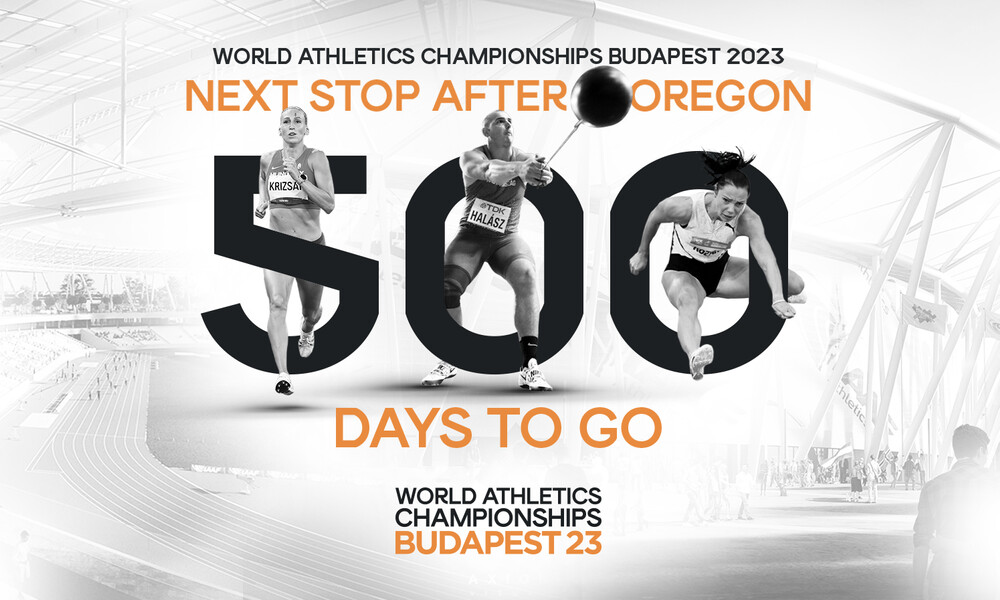
Coe also joined 10 participants from the Hungarian Kids’ Athletics Programme and ran with them on the field of play in the new stadium, which is still under construction. The Hungarian Kids’ Athletics Programme aims to inspire more and more children to choose athletics as their first sport, given it is the foundation of all sports. As a result of the programme, the number of young athletes aged six to 12 has already increased by 30% in Hungary in 2021. The programme is part of World Athletics’ Kids’ Athletics initiative.

“I am impressed with the organisation,” said Coe. “Of course there is still a lot to do, but everything is going to plan. I saw a very focused team and I’m sure we’ll see a fantastic World Championships here in Budapest in 2023. Even with the ongoing construction, the stadium already looks impressive. It was great to meet some of the budding young talent from the Hungarian Kids’ Athletics Programme, and it was a pleasure to join them in their debut at the stadium. I hope they all get an opportunity to compete here in the years to come.”
Deutsch added: “Just over a year from now, in August 2023, the World Athletics Championships – the biggest sporting event in Hungary's history – will begin. Our goal with the World Championships is to strengthen and promote the Hungarian athletics and to get as many children as possible to choose this fantastic sport.”
(06/18/2022) ⚡AMPHow to Run (When You Hate Running)
If you slog through the same boring miles week after week, can’t even imagine slogging through miles every week, or if your high school coach used laps as punishment... of course you’re gonna hate running. Here’s how you won’t.
If you’re not a fan of running, you’re definitely not alone. Forty-six percent of the 1,800 people who answered our MH poll said they hate it too. But here’s the thing: Running’s not about banging it out anymore. It’s still an incredibly efficient cardio workout that you don’t get with weights alone.
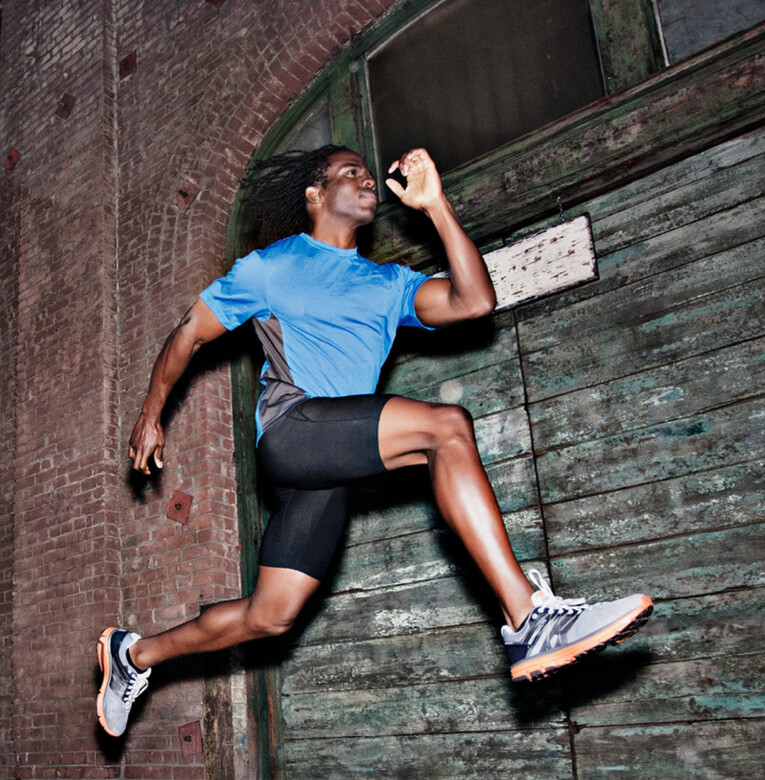
Now, however, running itself isn’t really the point. It’s just what happens to be going on in the morning, with friends. Or at night, when the city’s yours and you may or may not be breaking some rules. It’s a game you play with yourself, a way to test yourself, a way to find yourself, a way to forget. You don’t really hate running. You hate the way you’ve been running. And we’ve got six cures for that.
CURE 1:
Add a new level of exploration—or competition—by lacing up after dark.
There’s a version of running in which you don’t wake up early, you don’t pay hundreds in race fees, and the finish line, at least sometimes, is a bar. It doesn’t quite have a name, or at least it hasn’t been branded yet. It’s punk rock. It’s returning running to the people from the hands of corporate sponsors and type A, predawn joyless slogs. Call it night running if you want, since that’s when it happens.
Many groups start weekly workouts around 8:00 P.M.—not too late for us normies but late enough for the pack to be defined by the flecks of light bouncing off hidden reflective patches on clothes, shoes, caps. But there’s another kind of night running that really sets you free.
It’s not as much about a time of day as it is about a mind-set. These are unsanctioned adventures—underground races with mostly word-of-mouth buzz in which a small group of people (maybe ten friends, maybe 100 entrants) chase a win by running between checkpoints by themselves, picking whatever route they want. There are no closed roads, no signs, no aid stations or port-a-johns. Some races are pretty hardcore—strategic, competitive, and ruled by local studs.
Others, like one I did from a bar in Brooklyn to one in Manhattan, are less aggressive, and your finish time includes drinking a can of beer. That type of gritty night running is the closest you can get to the pure spirit of racing—of grinding your body into the pavement until you’re doubled over. The streets have quieted down, and you’re out in them on your own. Along with every other runner who shares this passion. —MATT ALLYN
CURE 2:
Don’t run, glide. Bound. And sometimes walk.
As the editorial director of a group that includes Runner’s World, I spend more days than not surrounded by real runners, so what I am saying to you is not opinion but lived and learned fact: Real runners rarely seem to be running. They glide. They bound. They kiss the earth with their tippy-toes as a courtesy to gravity rather than a necessity of physics.
I, however, run as if I got into a brawl with a much bigger opponent and am paying for it. Yet: I run. It’s more efficient than cycling (my sport of choice), and it’s easier to manage when you’re traveling. I highly recommend getting the shit kicked out of you by a run. But you can’t be afraid to walk. If you only run for as long as you can actually run, you’re not going to be out there long enough to do yourself much good.
At first, the only way I could do a 30-minute “run” was to run for a few minutes, walk a few, then run some more. Walking is not only okay but pretty much mandatory. Real runners know this and won’t shame you for not running while you run. Anyone else can go suck it, because they’re not even in the damn fight. —BILL STRICKLAND
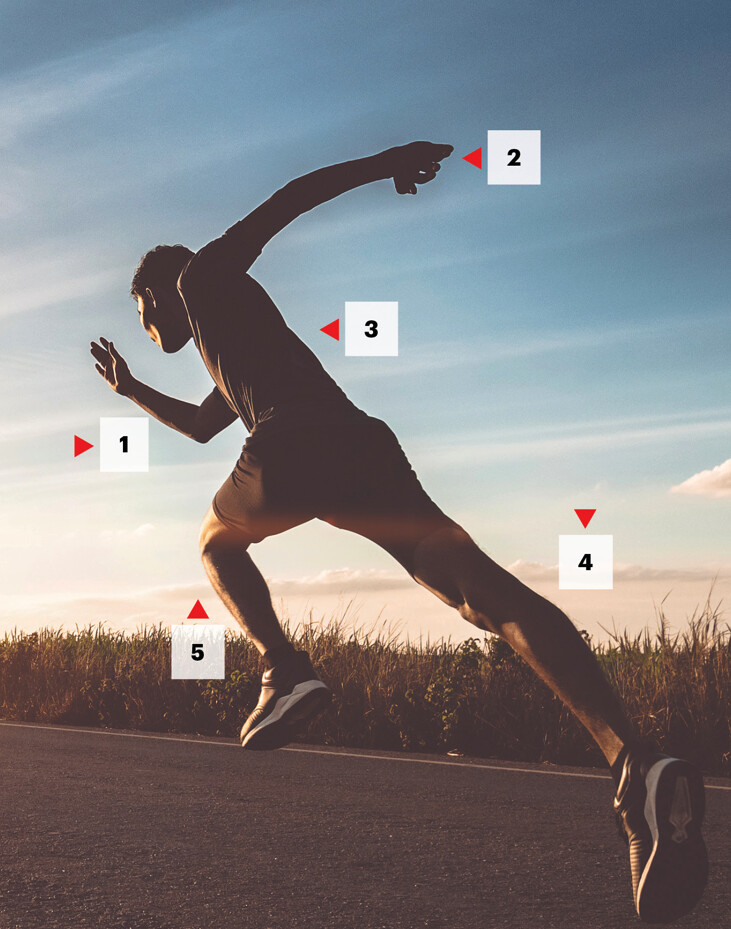
CURE 3
Sprint and Get It Over With
Forget 30 minutes. Crash through just six all-out 100-meter sprints with two minutes’ rest between each (you’ll need it) and you’ll be done with all your running in less than 15 minutes. Here’s how. —EBENEZER SAMUEL, C.S.C.S.
1. A Tight Core
A rock-solid core keeps you exploding straight ahead. Train this with mountain climbers. Do 3 sets, working for 30 seconds, resting for 30. Avoid the common flaw: Don’t let your butt rise!
2. Explosive Arms
Pump your arms to generate speed. Struggling? Sit on the ground, legs extended, then pump your arms as aggressively as possible, as if running. Focus on moving from the shoulders. Do three 30-second sets, resting 30 seconds after each.
3. Back Strength
Don’t just throw your arms forward when you run; build back strength to drive your elbows high. Do 3 sets of 8 to 10 dumbbell rows per side at least twice a week.
4. Strong Feet
Toe and foot strength is key for sprinters. Build it with single-foot jump-rope hops. Jump for 45 seconds, then rest 15 seconds. Do 3 sets.
5. High Knees
Drive your knees powerfully on every stride. Practice this by doing high knees in place for 15 seconds, then resting 15 seconds. Do 3 sets. Focus on driving your knees higher than your hips.
CURE 4
Run with Friends
About two years ago, after I’d put on about ten pounds, I sent a text to two friends at 8:00 on a Sunday morning, saying, “I’m going running at 9:00. Would either or both of you like to join?” Although we’d never discussed running together, I got a “Yup” from one and a “Sure” from the other. Then I got an “I don’t understand what’s going on” from the “Yup,” but—too late!—we had a plan. An hour later, we met up and ran five miles at the slowest pace I’ve ever run, and we’ve run virtually every weekend since then.
Now it’s a ritual. We’re a lot faster, but that isn’t the point. We keep it up because we also don’t want to fail at the opportunity we’ve created. When else do three fathers— three people—get an hour of uninterrupted weekly conversation? That the conversation has the added benefit of regulating our breathing, keeping us at a sensible pace, means we never go too hard—and going too hard is probably one of the reasons I used to stop running.
CURE 5
Try the (New, Gamified) Treadmill
The treadmill’s no longer a cataclysmic-weather default. Tech has brought competition and camaraderie to what used to be just running on a belt in your basement. These three options are changing everything.
Top the Leaderboard: PELOTON
On-demand streaming puts the workout you want right in front of you, along with everyone’s stats on a leader board so you can outpace that 18-year-old in L. A. (or your dad). Buy the treadmill (with a special belt for softer landings, starting at $4,295) or get the workouts, but not the stats, on your own treadmill via an app for $19.50 a month. OnePeloton.com
Run with Far-flung Friends: ZWIFT RUNNING
Run with a friend—even if you’re in St. Louis and they’re in Toronto—via this app. Set it up on a tablet or computer by your treadmill, pick an avatar, and have your friend do it too. You’ll both show up on the same virtual course. The app is free, but you’ll need a foot pod (as little as $30)—a device that clips to your shoe and sends your pace and distance to the app. Zwift.com —M. M.
THE MILE IS THE NEW MARATHON
Train for this everything-you-got sprint to get a fitness bump and bragging rights.
For the past few years, Ironpeople and cardiovores have tried to one-up one another with epic training efforts, competing on the number of miles they run, the number of Ironmans they do, and the number of ultra-early-morning sessions they knock out. Yet one of the most effective ways to train—and one of the most beneficial for your physical and mental health—has always been the shortest and the simplest: mastering the mile.
“The mile is an amazing blend of speed and endurance, and a good indicator of your overall cardiovascular health,” says Danny Mackey, head coach of the Brooks Beasts, an elite pro track team. “You can hammer it, and because it doesn’t take long to recover, you can run it again soon to see how much you’ve improved.
You can’t say that about a marathon, where most people are just trying to finish.” Even better, Mackey says you’ll notice yourself getting faster in three weeks. While a typical in-shape guy can run a mile in ten minutes, running one in 6:30—under the 6:47 average time for a man in the 5th Avenue Mile, the largest one-mile race in the country—can win you bragging rights. (The fastest finishing time in that race last year was 3:52.) Here’s exactly how to get after it.
(06/18/2022) ⚡AMPby Runner’s World
Here’s What Happens to Your Body (and Mind) When You Run Every Day
From your muscles to your mental state, you gain a plethora of benefits from daily runs.
Are you in the midst of a streak and feeling like a different person than when you started? That’s because you are. Running every day triggers a variety of mental and physical benefits, all of which can help improve your athletic performance and make you a healthier human.

“If running or exercise were a pill, it would be the most widely prescribed drug in the world for all of the benefits for your health that it has,” Todd Buckingham, Ph.D., chief exercise physiologist at The Bucking Fit Life, a wellness coaching company and community, tells Runner’s World. “Exercise really is medicine, and running is medicine,” he says.
If you’re wondering about the effects of your daily dose, here are a list of all the benefits of running every day. Let it fuel you with motivation to keep running toward your run streak goal.
Your Heart Gets Stronger and More Efficient
As a new runner, those first couple of runs can be brutal. Your breathing is labored, and your heart feels like it’s pounding against your chest. Meanwhile, your legs are barely moving. But, a couple of weeks into your training, breathing becomes easier, and that heart-pounding sensation lessens as your feet pick up the pace.
If you’re wearing a fitness tracker, you may even notice a dip in your heart rate while you hit the same paces. “The heart is a muscle, just like every other muscle in the body. The more that you train it, the stronger it’s going to get,” Buckingham says.
He explains that running every day strengthens cardiac muscle tissue and causes the heart’s left ventricle, the chamber that forces oxygenated blood into the aorta (the artery that carries blood from the heart to the body), to increase in size. “There’s more space in that left ventricle to fill up with blood,” he says. “So not only is there more blood to be pumped out, but the heart is also stronger, so it can pump more blood out with each beat.”
As a result, your heart doesn’t have to work as hard to deliver oxygenated blood to your muscles. This is a boon for your daily runs and your overall heart health.
You Gain Muscle Mass and Strength
When you pound the pavement, treadmill, or trail day after day, your muscles—specifically, the glutes, quadriceps, hamstrings, soleus, and gastrocnemius (those last two are your calf muscles)—respond to the stimulus being imposed upon them.
“The muscle is damaged, and that means that the body has to repair the damaged muscles so that the same run doesn’t have the same effect that it did last time,” Buckingham says. Essentially, the muscles are re-built bigger and stronger. “It’s a lot like lifting weights,” he says.
But, unless your workouts consist of sprint intervals paired with resistance training, don’t expect to bulk up. Running long distances (even just a mile or more) at a sustainable pace primarily engages type I muscle fibers, which are good at resisting fatigue but are small in size. (Type II fibers, which are quick to fatigue but generate more force and power, are generally responsible for visible muscle growth.)
“You might see a little bit of increase in [muscle] size with distance running, but it’s not going to be as pronounced. Type I muscle fibers can get bigger, but not to the same extent as those type II fibers,” Buckingham explains.
Your Connective Tissue (Slowly) Adapts
Your body’s connective tissue, namely the tendons and ligaments, will also adapt to withstand the daily stress of running—just not as quickly as your muscle tissue. “The reason for this is because tendons and ligaments don’t have the same amount of blood flow that the muscles do, so it takes them longer to adapt,” Buckingham says.
While your muscles may begin to change a couple of weeks into a running streak, it could take three to four months for your tendons and ligaments to catch up, he says.
To prevent overuse injuries, it’s best to begin a streak with a conservative goal (a mile a day is a good place to start, says Buckingham) and gradually build upon that foundation. The general rule of thumb is to increase your mileage by no more than 10% each week, but Buckingham notes that this can vary depending on the athlete, their experience, and their mileage.
Avoiding long breaks is helpful for your connective tissues, says Alison Staples, coach at &Running in Howard County, Maryland. “Tendons need to be loaded consistently to learn how to accept the impact of running,” she says. “Running sporadically often leads to injury because we haven’t practiced loading our tendons enough before tacking on mileage.”
Your Nervous System Becomes Fine-Tuned
Buckingham compares the nervous system to a maze. “The first time you do it, you’re going to take a lot of wrong turns and end up doing extra work,” he says. But, over time, you learn the most direct path from point A to point B.
Similarly, the first few times you go out for a run, your neuromuscular connections will fire inefficiently, as one nerve fiber connects to multiple muscle fibers. Muscle fibers that don’t need to contract will be stimulated, resulting in wasted energy. However, with consistent running, your nervous system eventually adapts and learns the optimal route so everything works more efficiently.
Research backs this up, too, saying that consistent running trains your central nervous system to adjust to and get more efficient at the commands of running.
“The more you run, the more efficient you’re going to become [at running] because you're teaching the body which muscle fibers should be firing and which shouldn’t,” Buckingham says.
You Feel Mentally Sharper
Running boosts circulation, increasing blood flow to the brain and delivering the nutrients you need to think and function. But exercise has also been shown to promote the expression of brain-derived neurotrophic factor (BDNF), a protein important to brain function and memory.
“BDNF actually increases the brain’s ability to form new synapses, or connections, in the brain,” Buckingham says. “This helps with learning and memory. It makes it easier to absorb information and form long-term memories. The more BDNF that somebody has, the more the memory improves in function and capacity.”
According to Buckingham, the effects of increased BDNF are cumulative, but you may feel mentally sharper and more alert after just a few days of running.
Your Mood and Motivation Improve
BDNF can also help mitigate stress. “It doesn’t decrease stress hormones, but it does decrease the number of stress receptors,” Buckingham says. “And this could minimize the effect of those stress hormones in the brain.”
Add that to an exercise-induced endorphin release, and you have a recipe for an improved mood. In fact, research shows just 10 minutes of running can enhance your happiness.
“I am currently running the #RWRunStreak myself, and based on my own experience, running a mile every day has been a huge boost in my mood and motivation,” Staples says. “My one mile a day is my own form of non-negotiable self-care… And by doing this run streak, I’m certainly more relaxed and motivated to get my run in every day.”
(06/18/2022) ⚡AMPby Runner’s World
Trail-running podcast host creates job board for runners
If you’ve always longed to find a career that aligns with your love of running (especially trail running), Finn Melanson may have some options for you. Melanson, ultrarunner and host of the Singletrack podcast, has created a website for people seeking jobs in the running industry.
Melanson calls the job board a work in progress, and explains that “every aspect of our sport improves as more talented people decide to invest their life’s work here.” Passionate runners or trail enthusiasts with useful skill sets may still find it challenging to find opportunities in today’s rapidly changing job market, and Melanson hopes to eliminate some of the struggle.
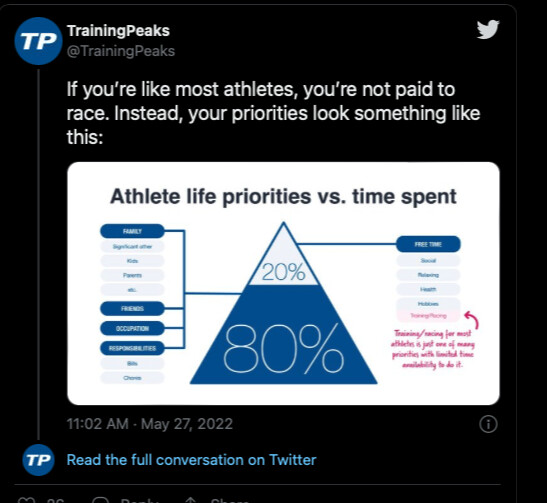
“There’s been a lot of recent discussion in the ultrarunning world about what it’s going to take to improve the sport, grow the sport and generally get it to a place where it’s more relevant in a 21st century world. I’m attracted to that kind of big picture, forward-thinking and I wanted to lend a hand,” says Melanson. He adds: “Maybe by the mid 21st century, the running industry (and the outdoor industry in general) becomes THE place where people want to invest their intellectual and physical energies. I bet that will generate a lot of laughs, but why not?”
The job board is updated daily, and currently has a variety of openings posted by well-known industry names like Strava, Tracksmith, Training Peaks, and AllTrails.
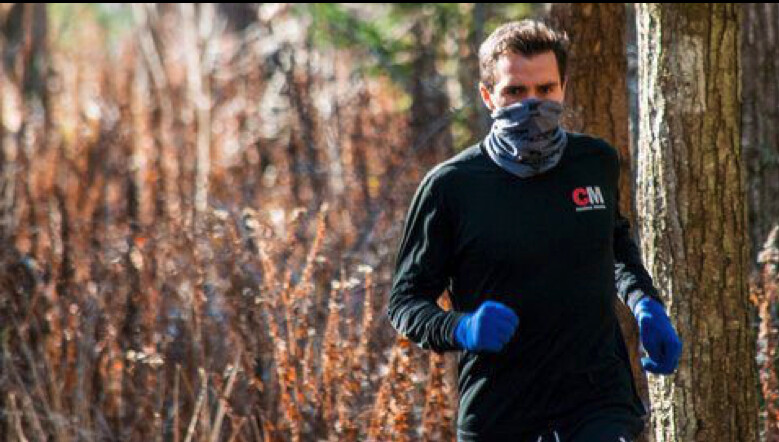
While the postings are currently largely U.S. based, many have remote options. Melanson asks for employers from locations worldwide to reach out to him and help grow the site. He adds: “A jobs board plays a small role by creating awareness and routing these people to the opportunities available in our community.”
Melanson has plans for expansion: “I envision a day in the near future, to give one example, where an applicant not only sees a job posting for a company like Strava, but also a Youtube link to an interview with a recruiter discussing what they look for in an application, why someone should be interested in working there, and more” he says.
Melanson has experience in marketing from his day job as a low-code technology platform called OutSystems. Both the job board and the Singletrack podcast are passion projects he works on in his free time.
(06/18/2022) ⚡AMPby Running Magazine
Runners in Flagstaff, Ariz. evacuated due to wildfires
Residents of Flagstaff, Ariz. have been placed on high alert as the Pipeline fire rages near their communities. Hundreds of people have been forced to leave their homes, with thousands more told to prepare to evacuate. The area is a popular place to live and train for elite athletes due to the high elevation (around 2,133m or 7000 feet).
The Pipeline fire was preceded this year by several other blazes, including the Tunnel fire, which also caused evacuations and resulted in over 19,000 acres burning.Many Canadian athletes live or spend time at training camps in the Flagstaff area, and we spoke to Canadian half-marathon record holder Rory Linkletter. Linkletter and his family have been evacuated, and he explained: “Flames were about 1km from our home. Water trucks were parked in our neighbourhood ready to fight fire from our street and protect structures.” Linkletter added that it was the second fire in the last few months within a mile of his home.


The Pipeline fire was reported on Sunday, and as of Monday afternoon, over 5,000 acres of brush and forest had burned. The Cococino National Forest reported that two additional fires, the Haywire and Double fires, are now being fought within the same area.
Firefighters have been working diligently to suppress the fires and keep them from entering the nearby communities, and temporary shelters have been designated for both people and animals.Strong winds and warm weather have made containing the fires particularly challenging. Linkletter said that fires this year had been worse than anticipated. His family includes pets and his 10-month-old son, Jason, which add challenges to being evacuated.
Linkletter added, “Last fire people were evacuated for just under a week, and we would love to get home as soon as possible. I just hope our home and everyone else’s is safe and we can come home to some normalcy. It’s obviously stressful to have the uncertainty and feel so hopeless.”Matthew Riser, 57, was arrested on Sunday in connection to the fires. Riser admitted to burning toilet paper and placing it under a rock, saying he hadn’t seen the “no campfire” signs. The Pipeline fire is named after a popular hiking trail and Riser had been camping in the area.
Linkletter expressed some optimism about the weather in the next few days. “The wind is supposed to die down tomorrow, and rain is possible on Saturday,” he said.
Olympian Jenny Simpson narrowly missed losing her house in Boulder, Co. last year in another wildfire. Boulder is another very popular city for runners to live or train, and the Marshall fire destroyed over 1, 000 homes and 6,000 acres.
(06/18/2022) ⚡AMPby Running Magazine








